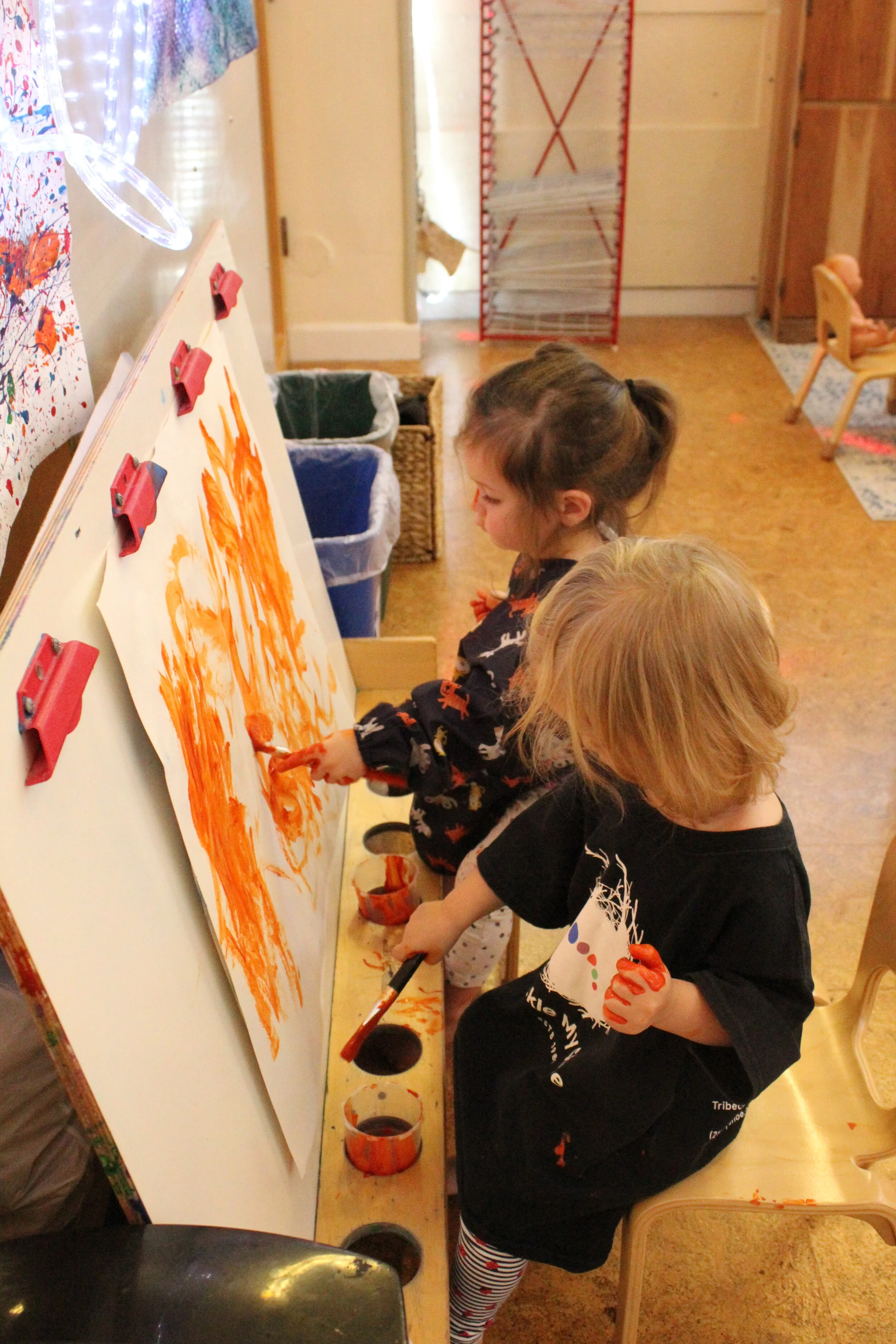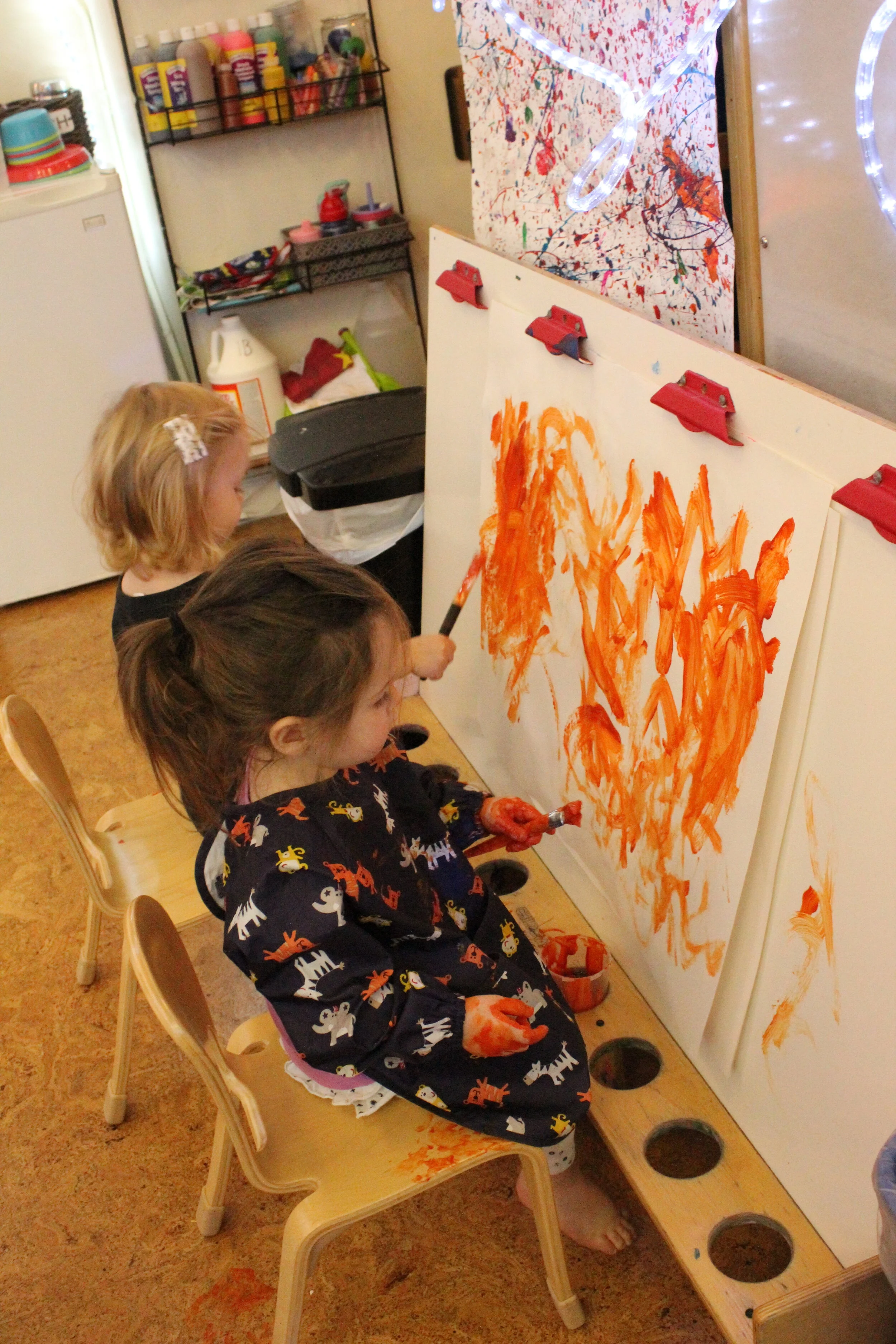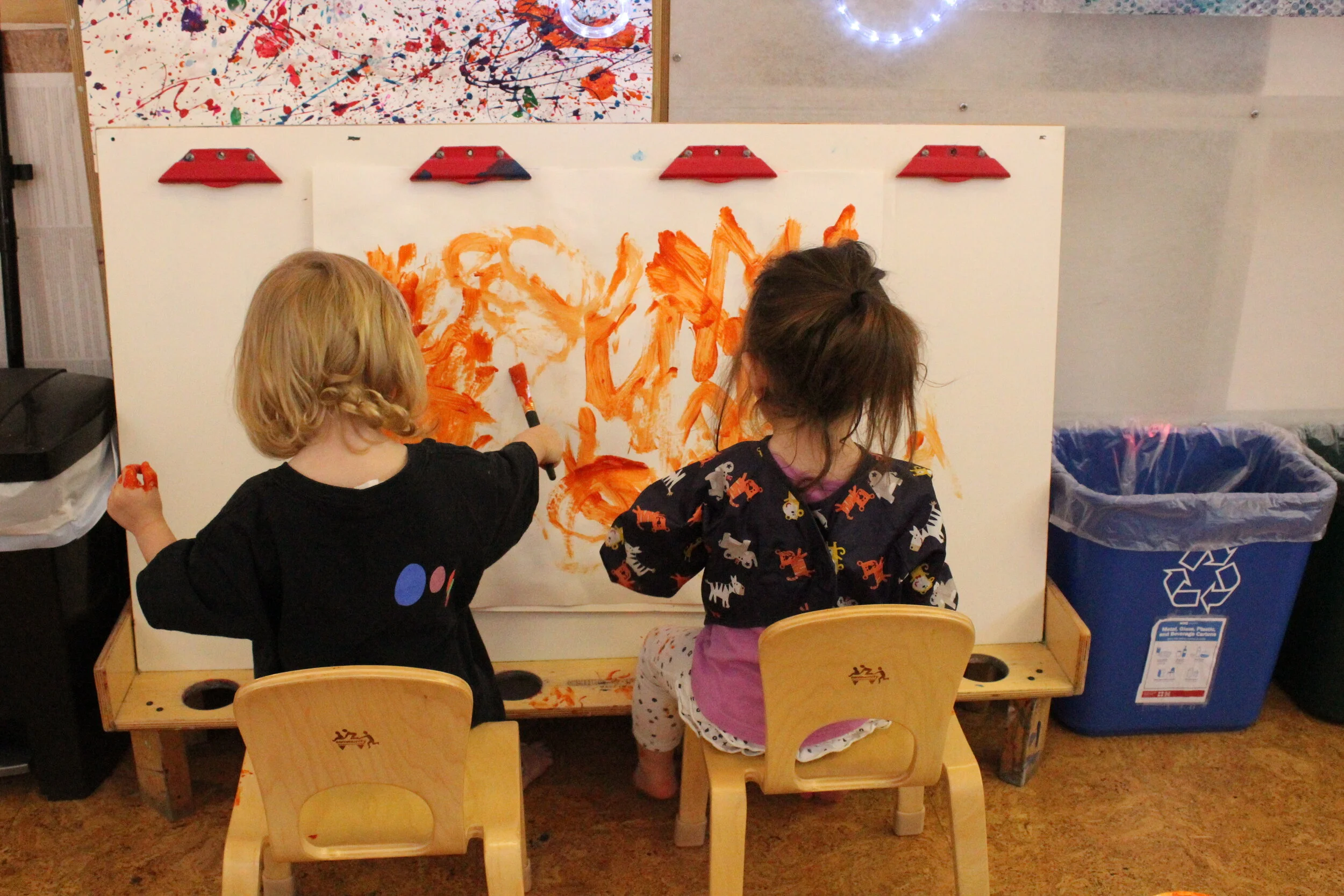As we all experience our second week of school, the children are gradually adapting to the routines and schedule and also to new peers and teachers. All children have a different pace and as teachers it is crucial to respect each individual.
Music encourages children's inclination to move, developing their fine motor skills and gross motor skills. Jumping up and down helps with their muscle development, strength, and balance. Exposing children to music during early development helps them learn the sounds and meanings of words. We use musical instruments, books and finger puppets to sing a variety of songs, including Spanish songs. One of their favorites songs is Five Little Monkeys. Books are always a winner in the 1B classroom!!! The children enjoy listening and observing the illustration of each book.
We are looking forward to another fun and interactive school week!
Highlight of the Week:
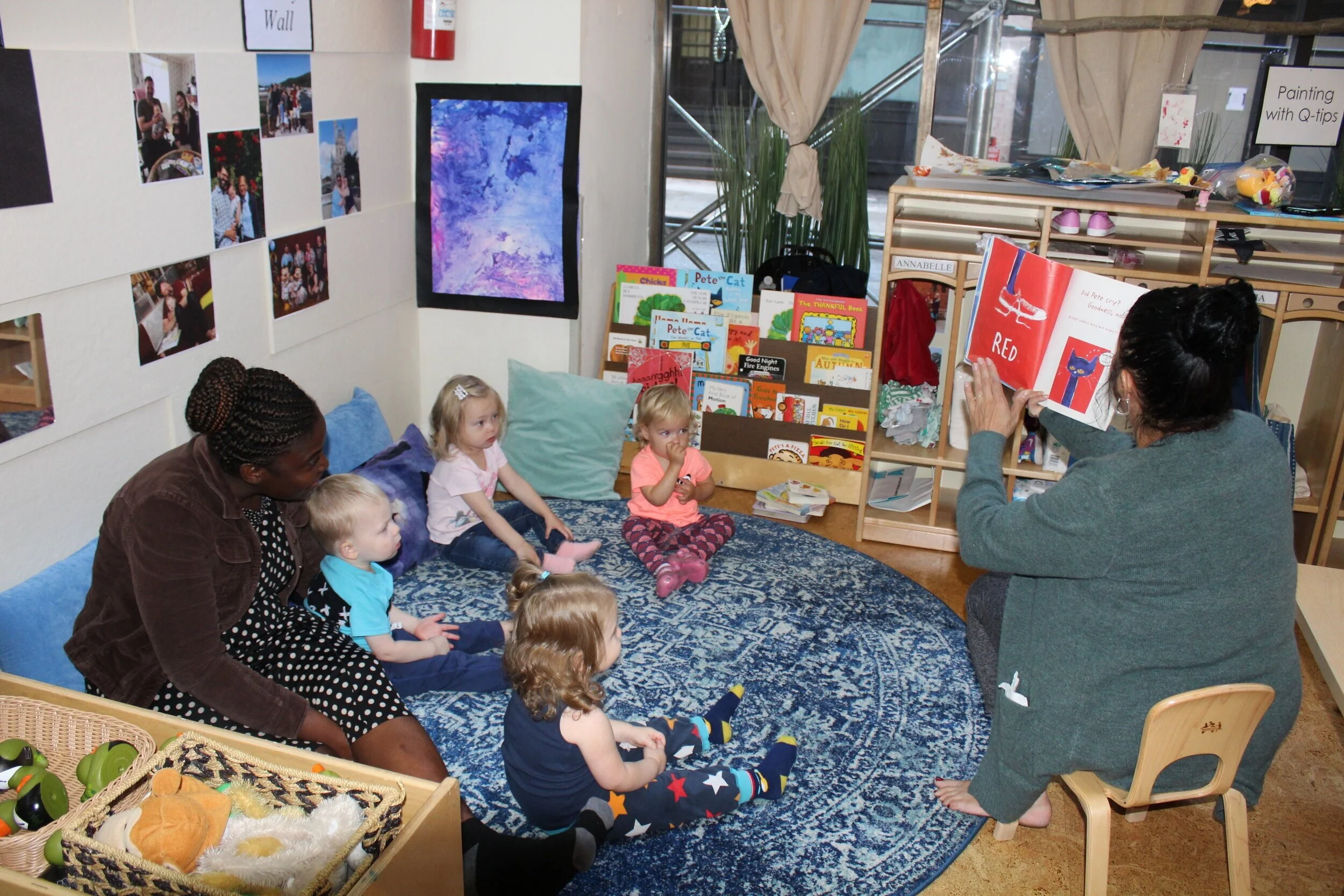
Meet, Ines, an intern who will be joining us every Friday morning.
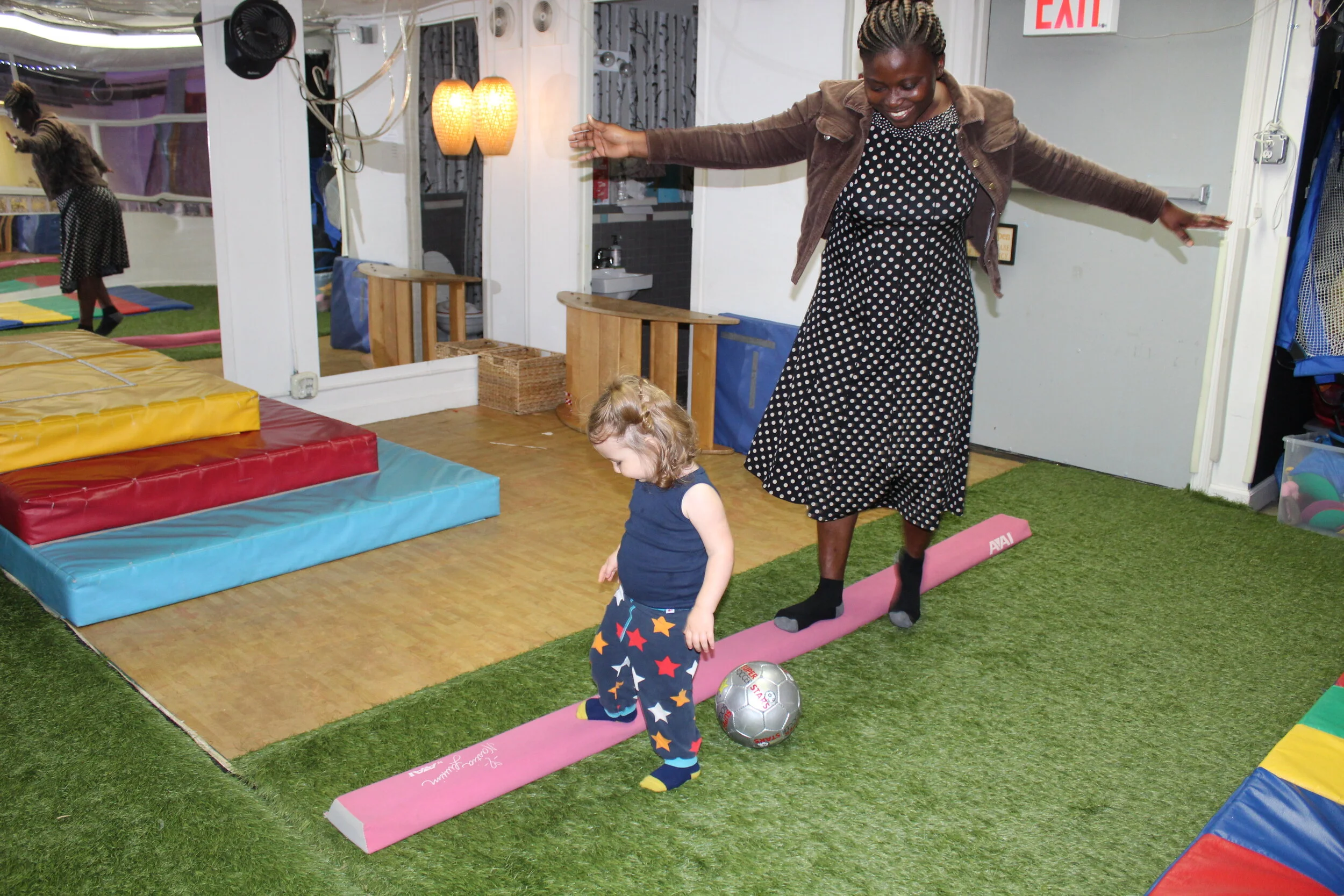
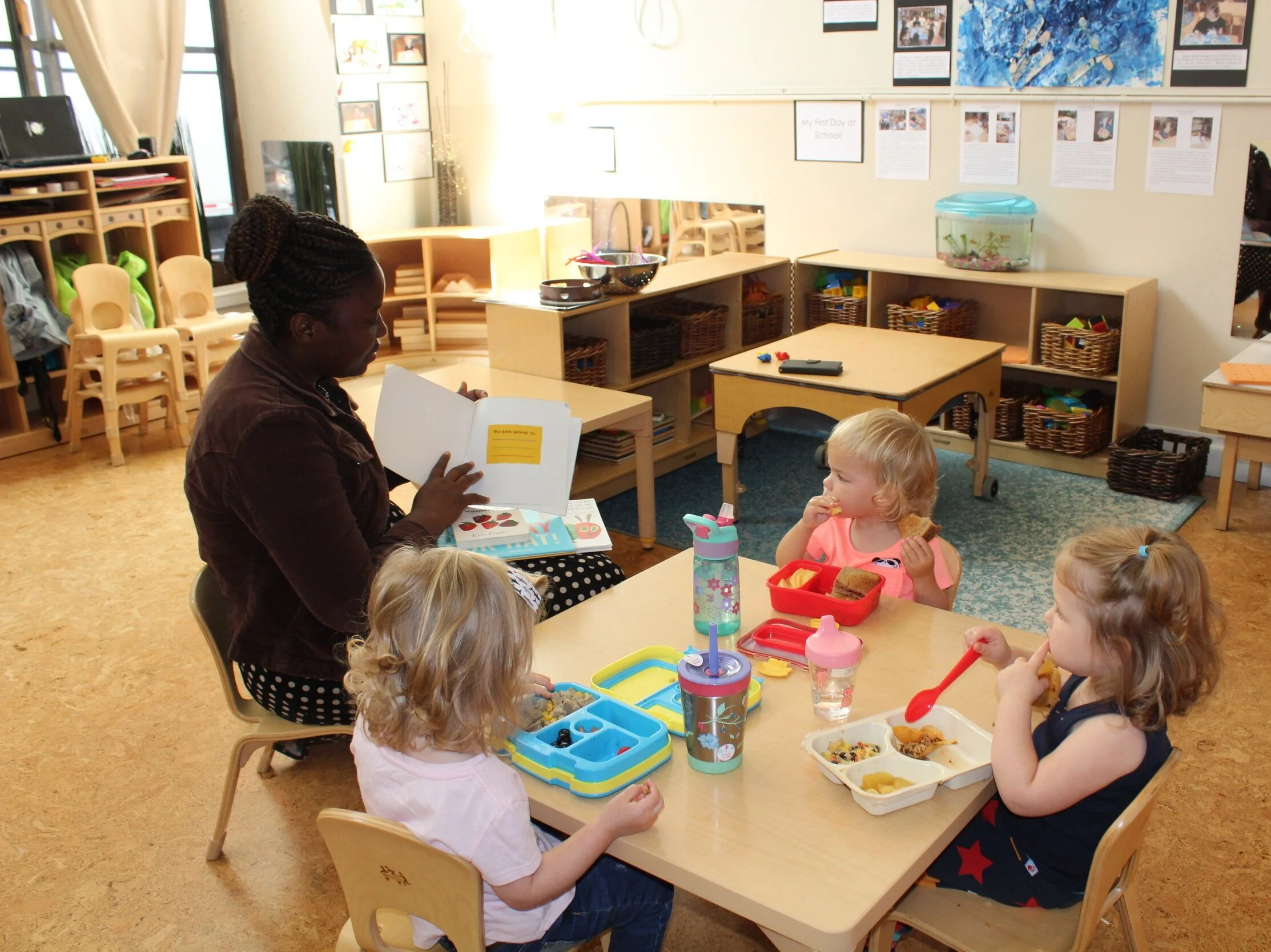
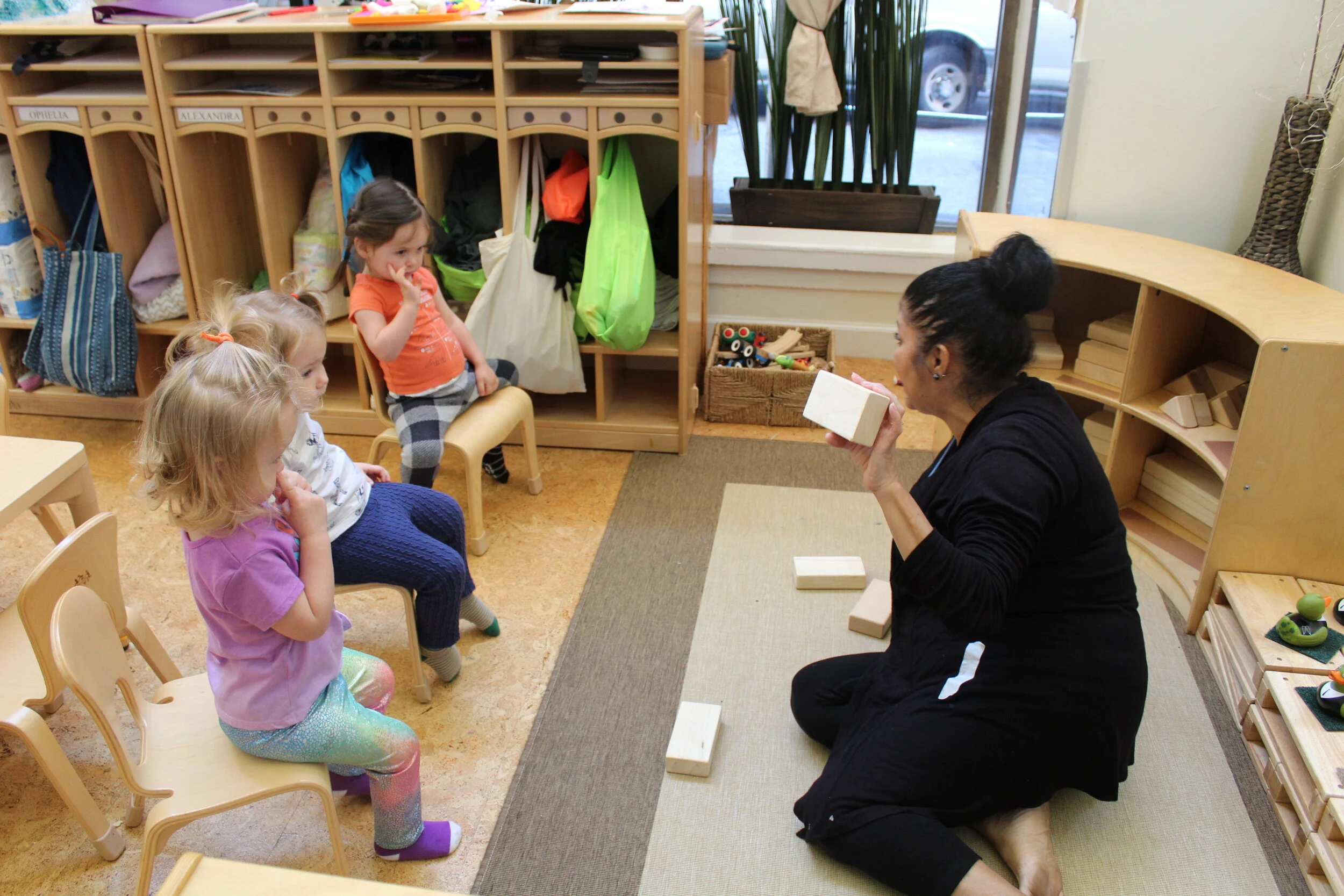
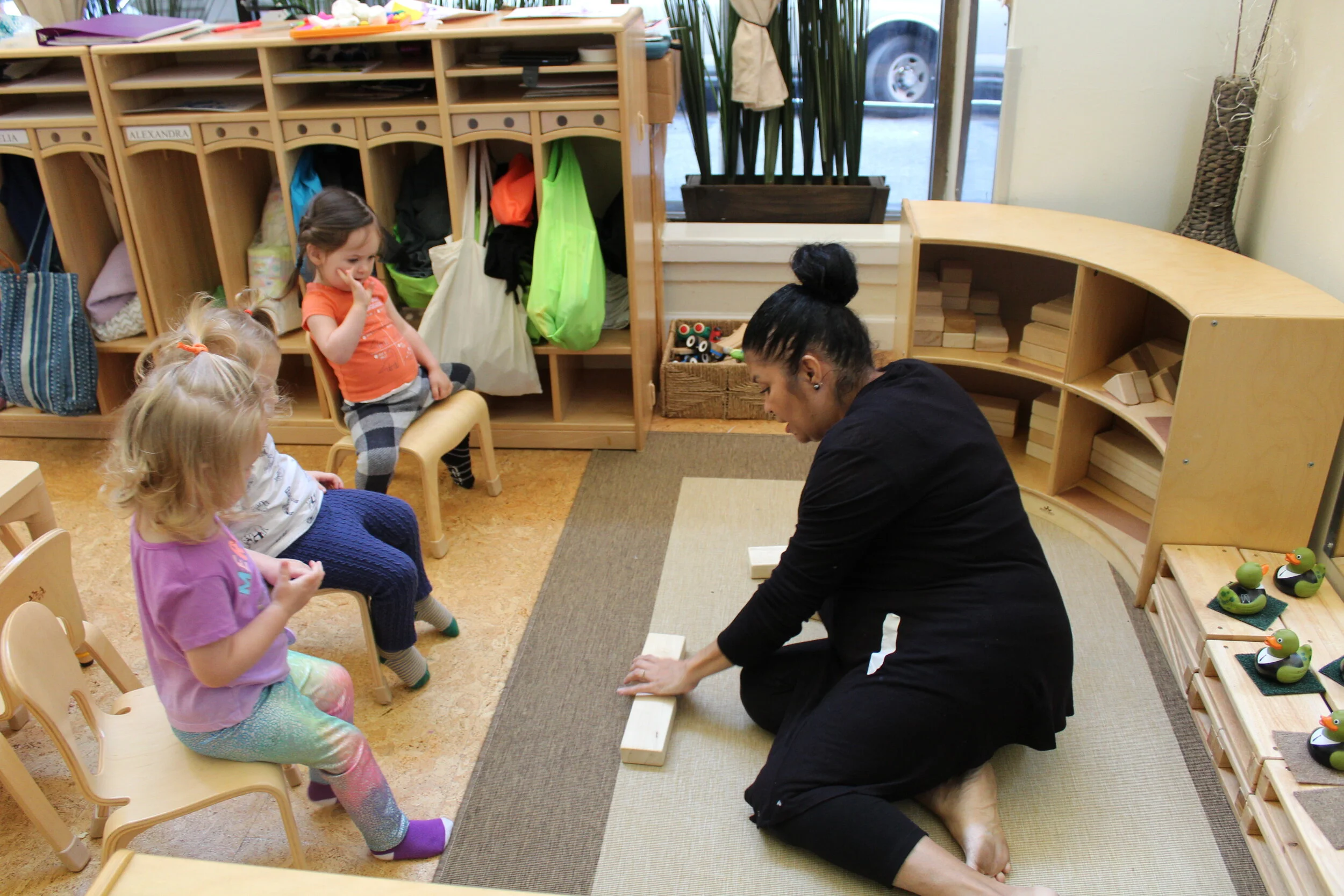
Using unit blocks to measure our height!
Their height is part of their identity. As they develop, they grow taller, and they each grow differently. We began measuring their height using unit blocks. Each child will lie in a horizontal position, and on their side will place some unit blocks. We will all count how many blocks are needed to determine his/her height. They are also building knowledge as they count and learn the shape that is being used to identify their stature. We will measure their height in September, January, and May.
We will continue measuring the children next week.
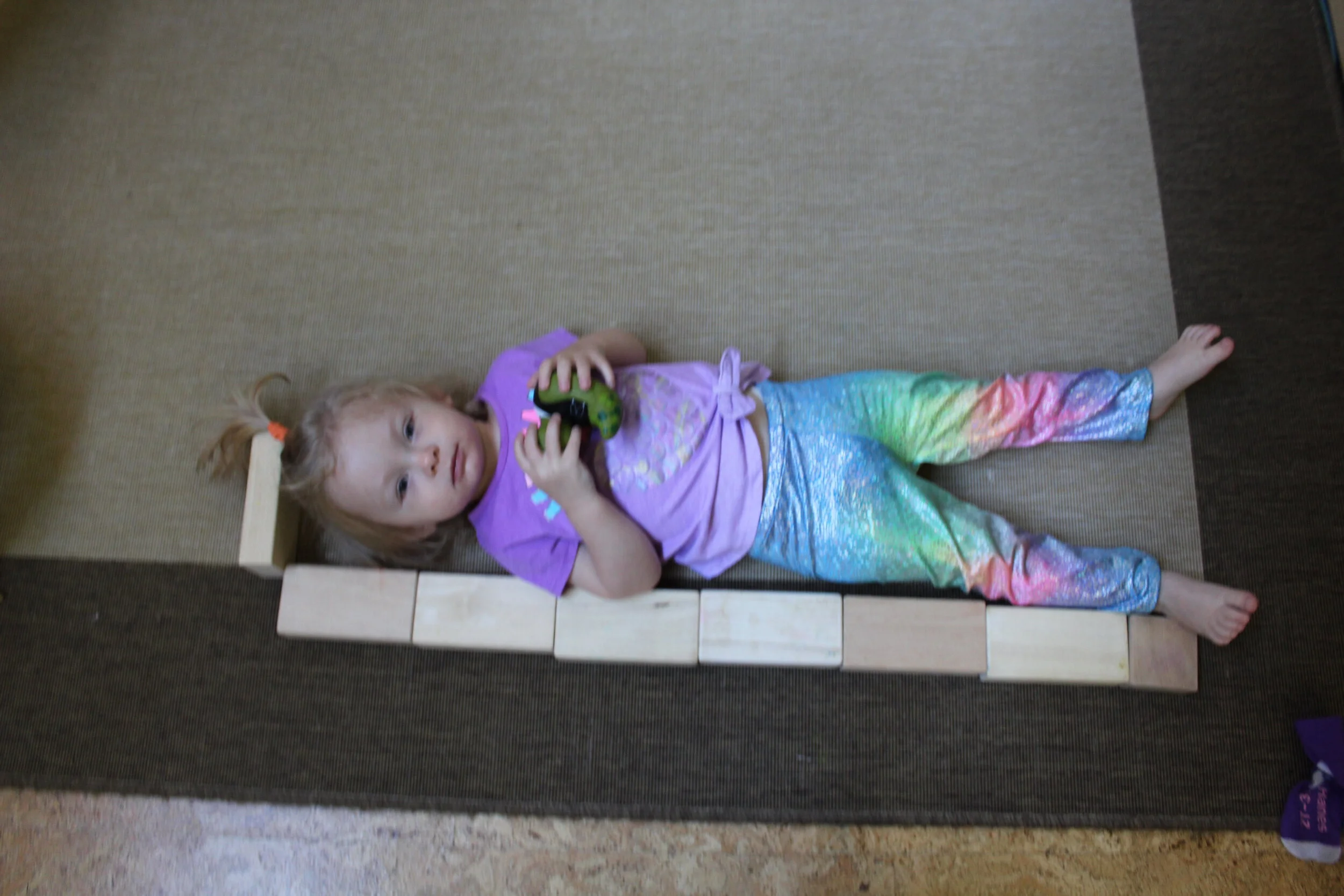
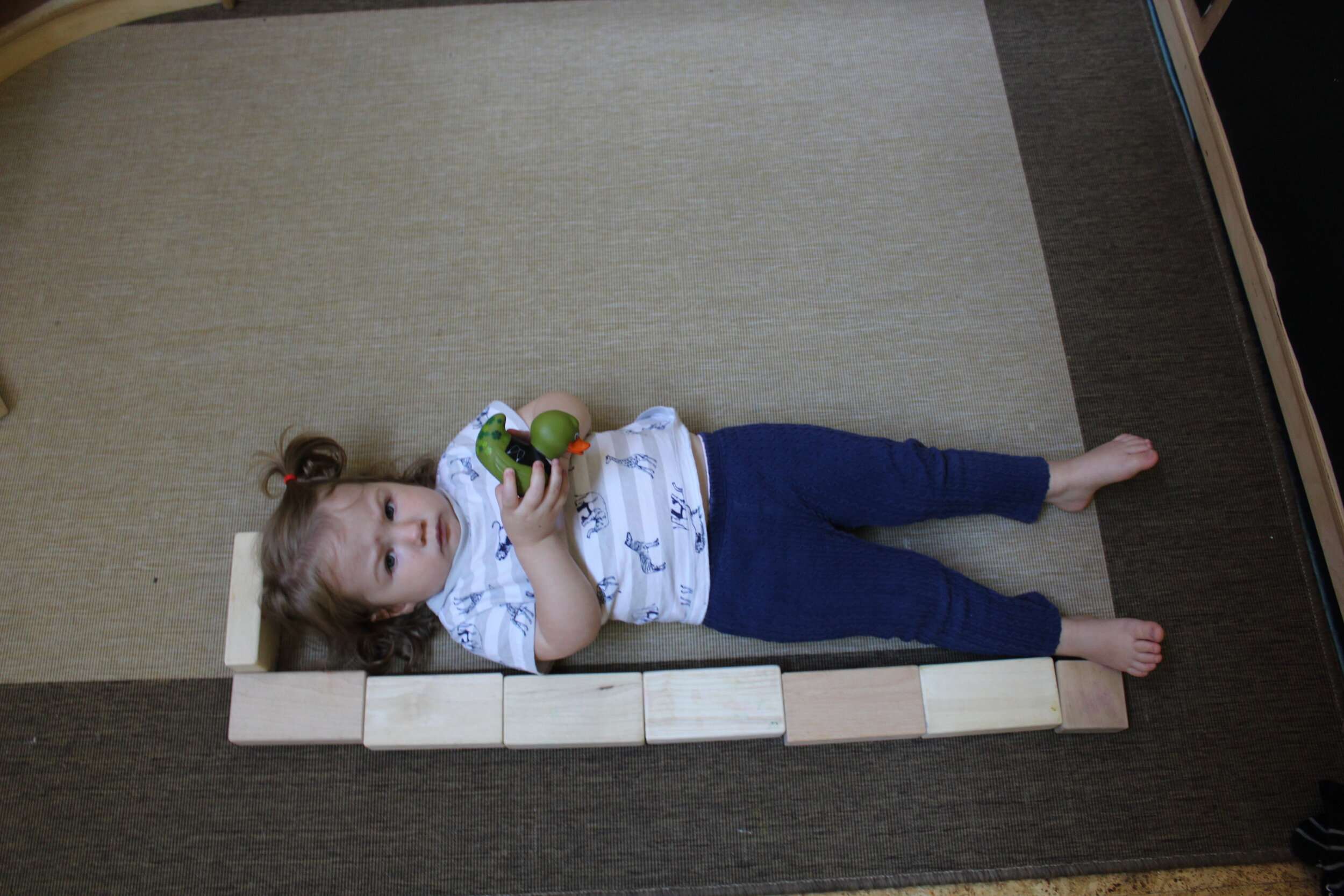
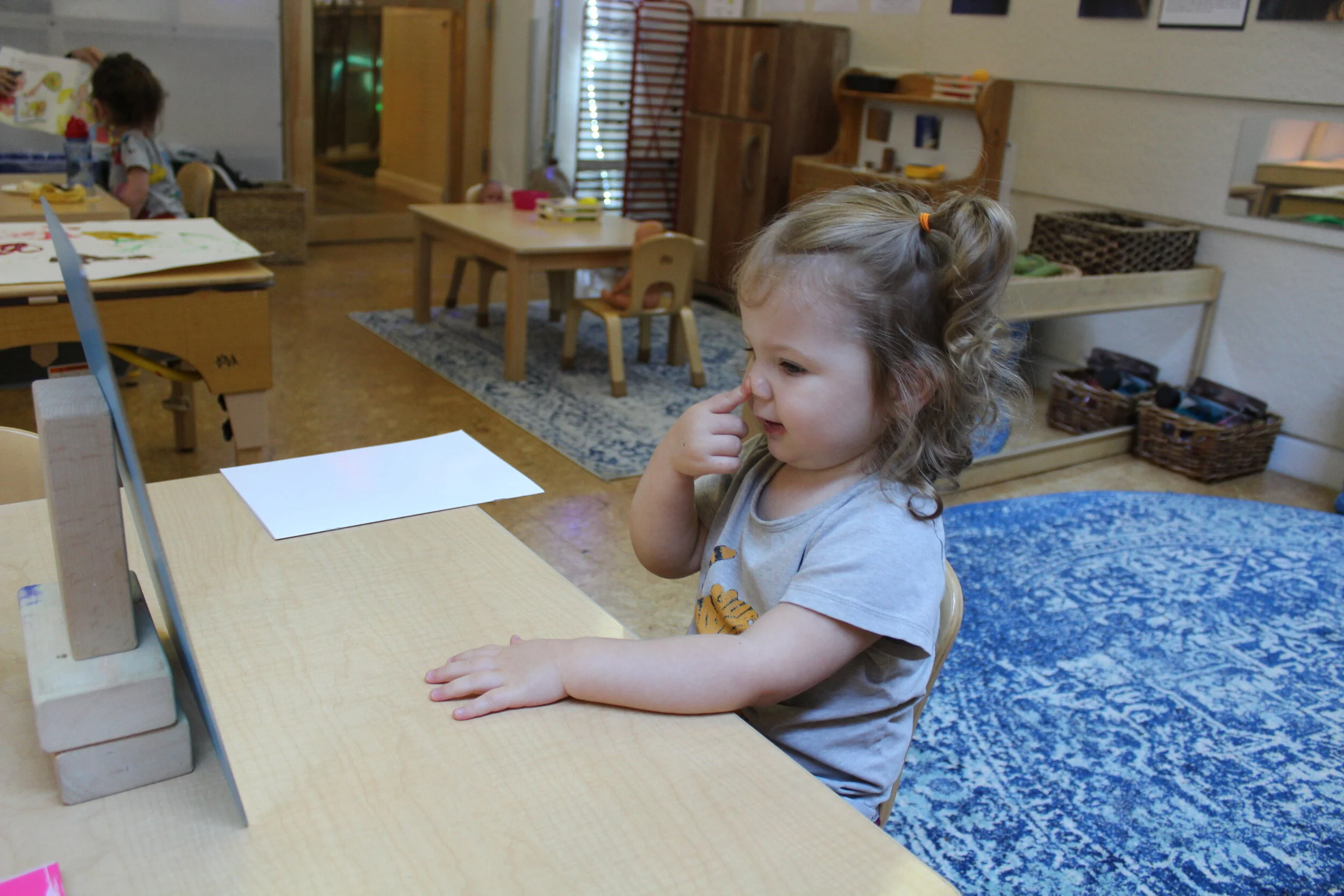
Self-portraits are drawn once a month. We sit one-on-one with a mirror, paper, and a sharpie marker. The mirrors encourage children to look closely at the shapes of their facial features. They observe and explore their image. As they look at their features: eyes, nose, mouth, and hair, they notice that each location and shape is different. For example, the direction of their nose is different from their hair. They learn to recognize themselves.
In addition, self-portraits are not only about who they see in the mirror but also about their surroundings. They may include mom, dad, siblings, and pets. As the month’s progress, self-portraits will gradually change. Children and teachers will see how they are changing and growing. Children self-awareness and self-identification are displayed as they progress in their self-portraits. Each of our faces will vary in shape and proportion because we are all unique individuals!.
Children utilize a tool to draw the self-portrait. The continuous movement helps and builds fine motor skills and bilateral coordination skills as well. The tool promotes the use of the pincer grasp and naturally strengthens the small hand muscles. Providing opportunities, practice, stimulation, and encouragement to refine their fine muscles will help them when they begin to learn to write.
We do not anticipate for them to draw themselves, but to provide self-awareness.
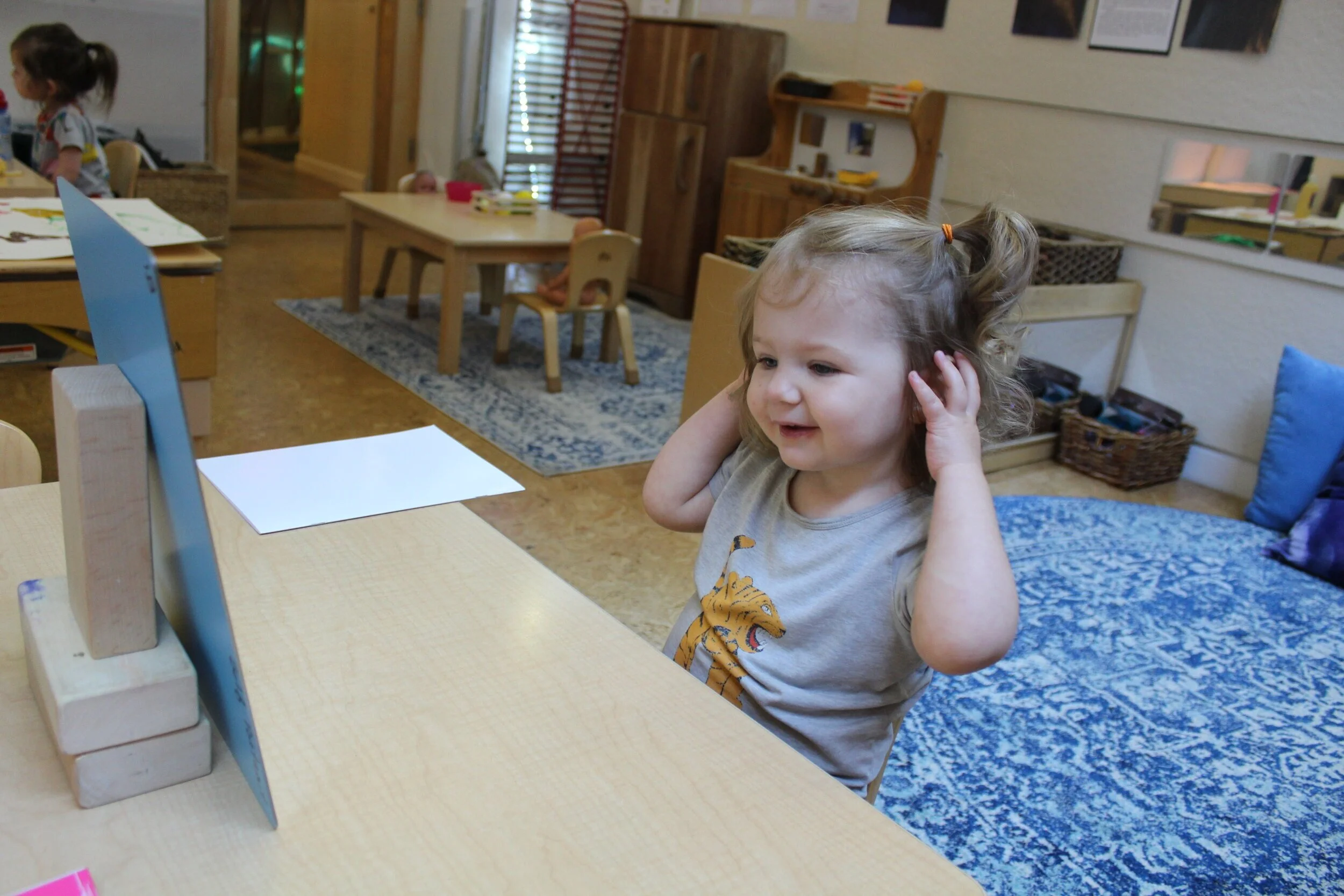
Ophelia pointed to her nose, ears, and mouth.
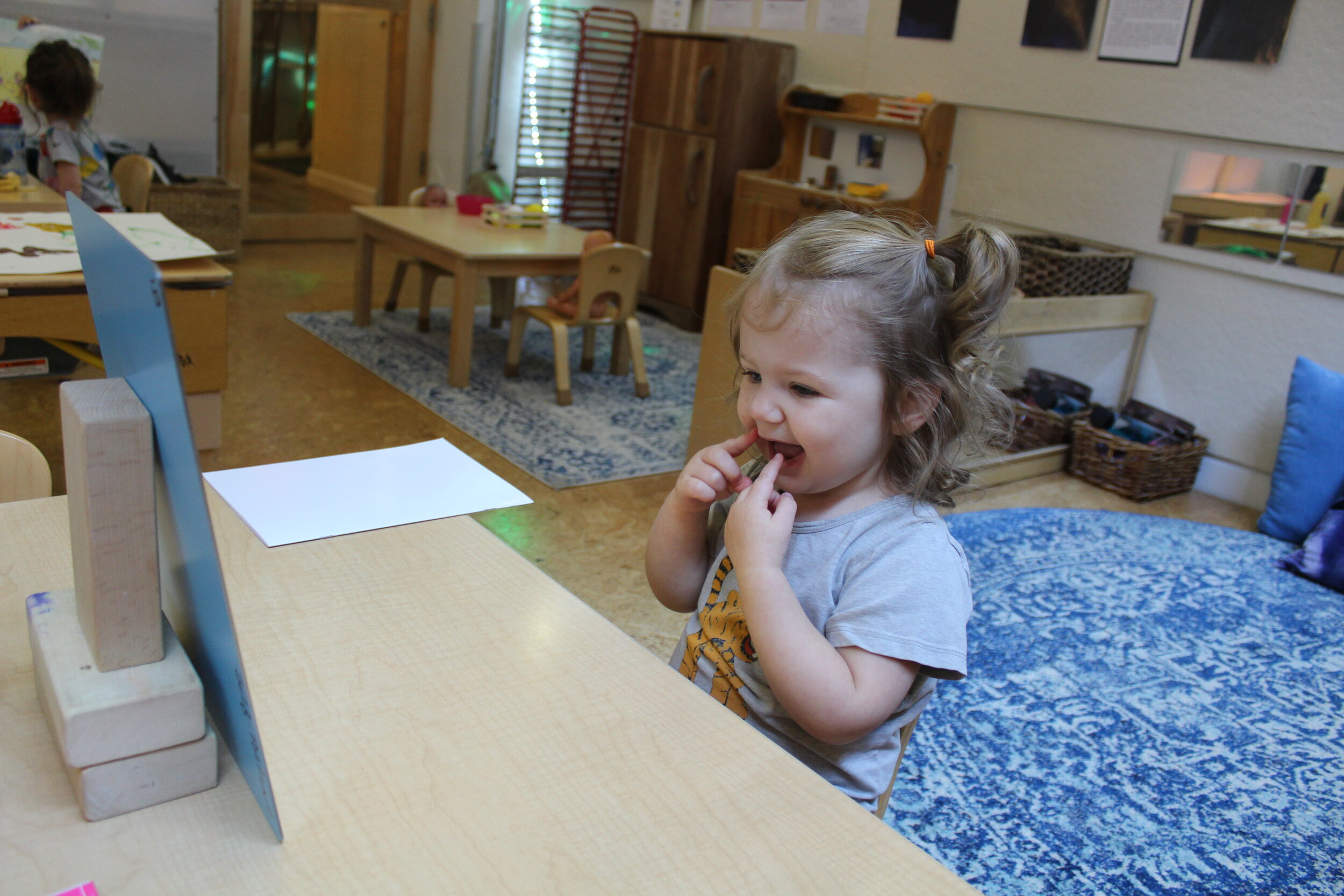
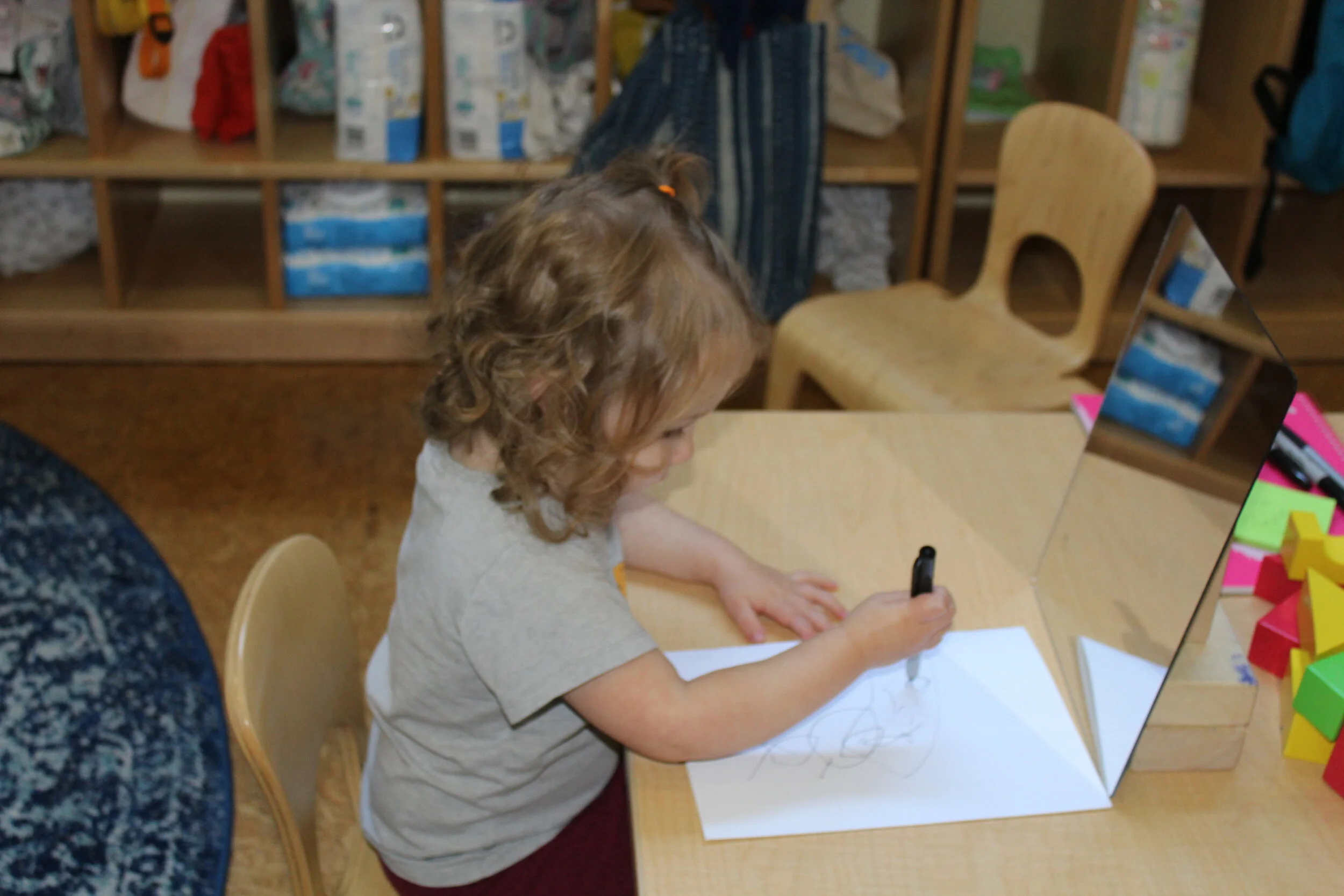
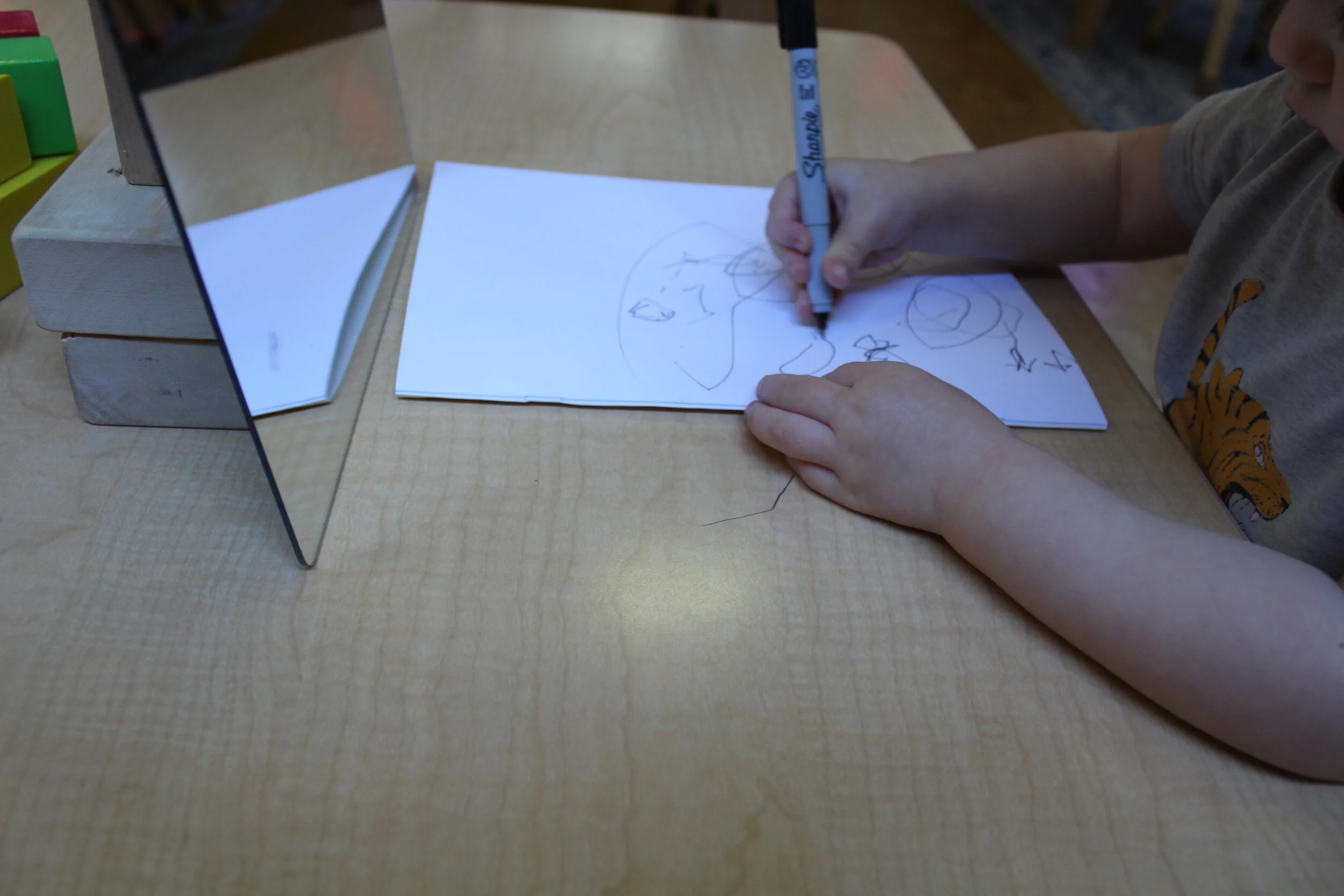
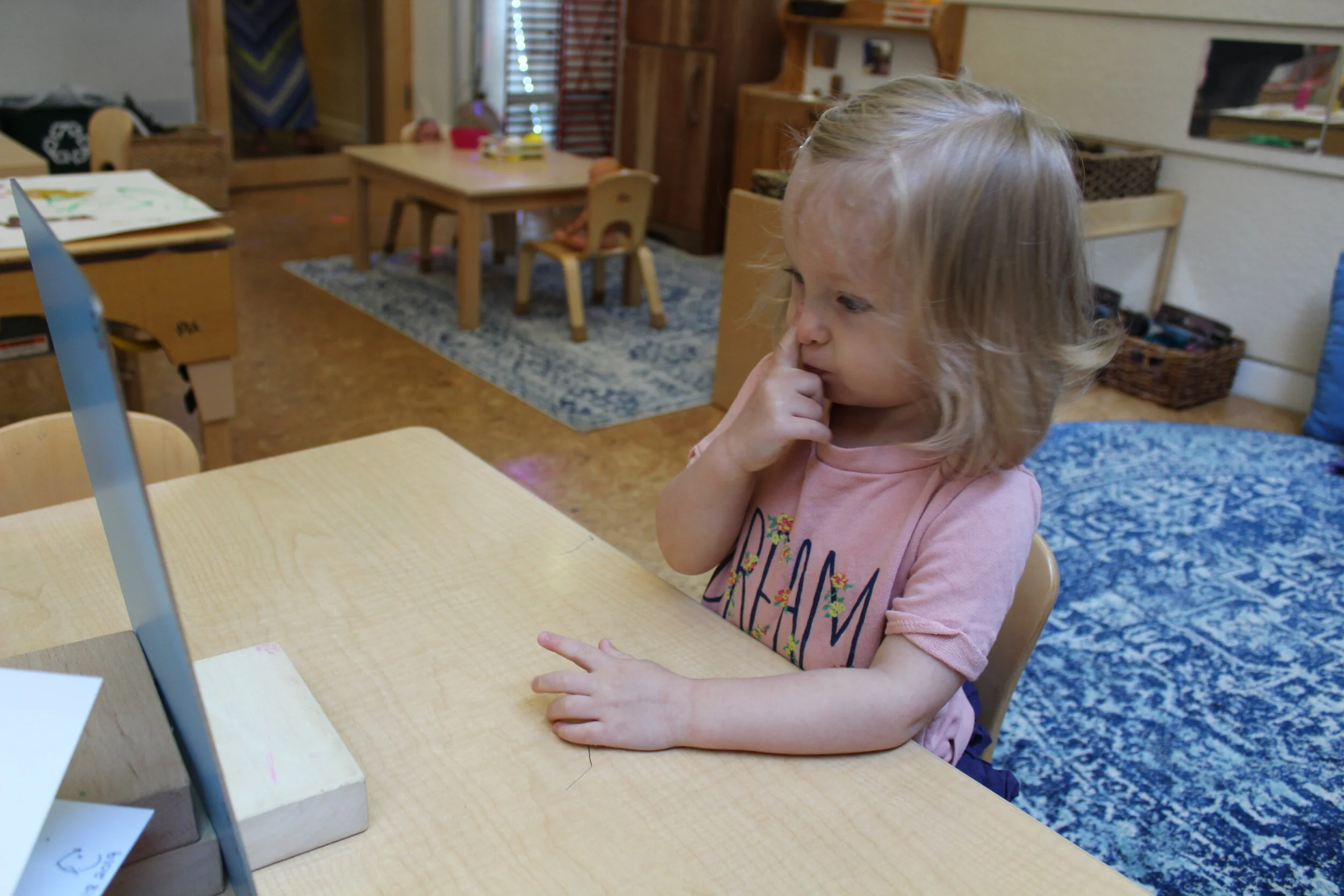
Teagan pointed to her nose, hair, and mouth.
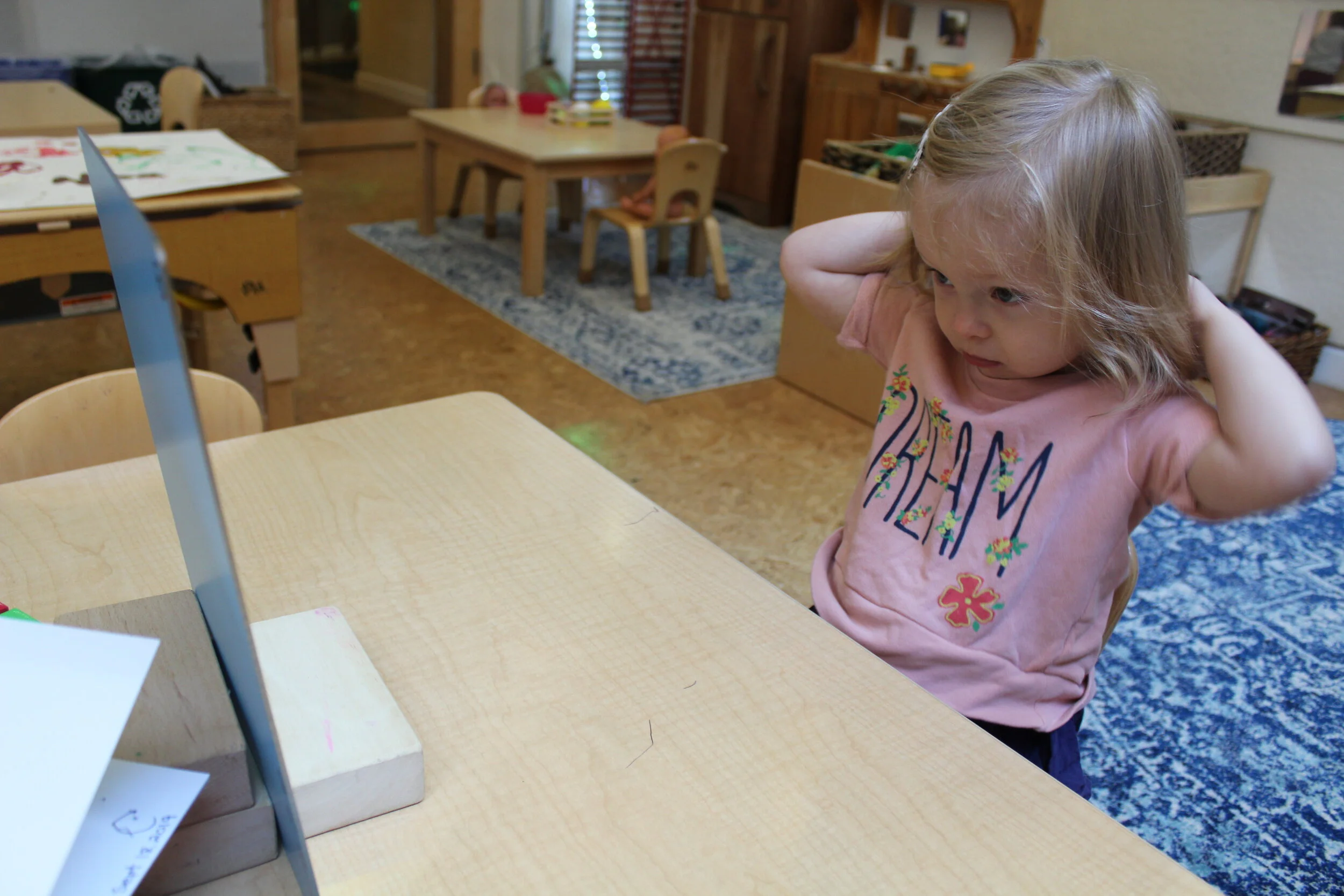
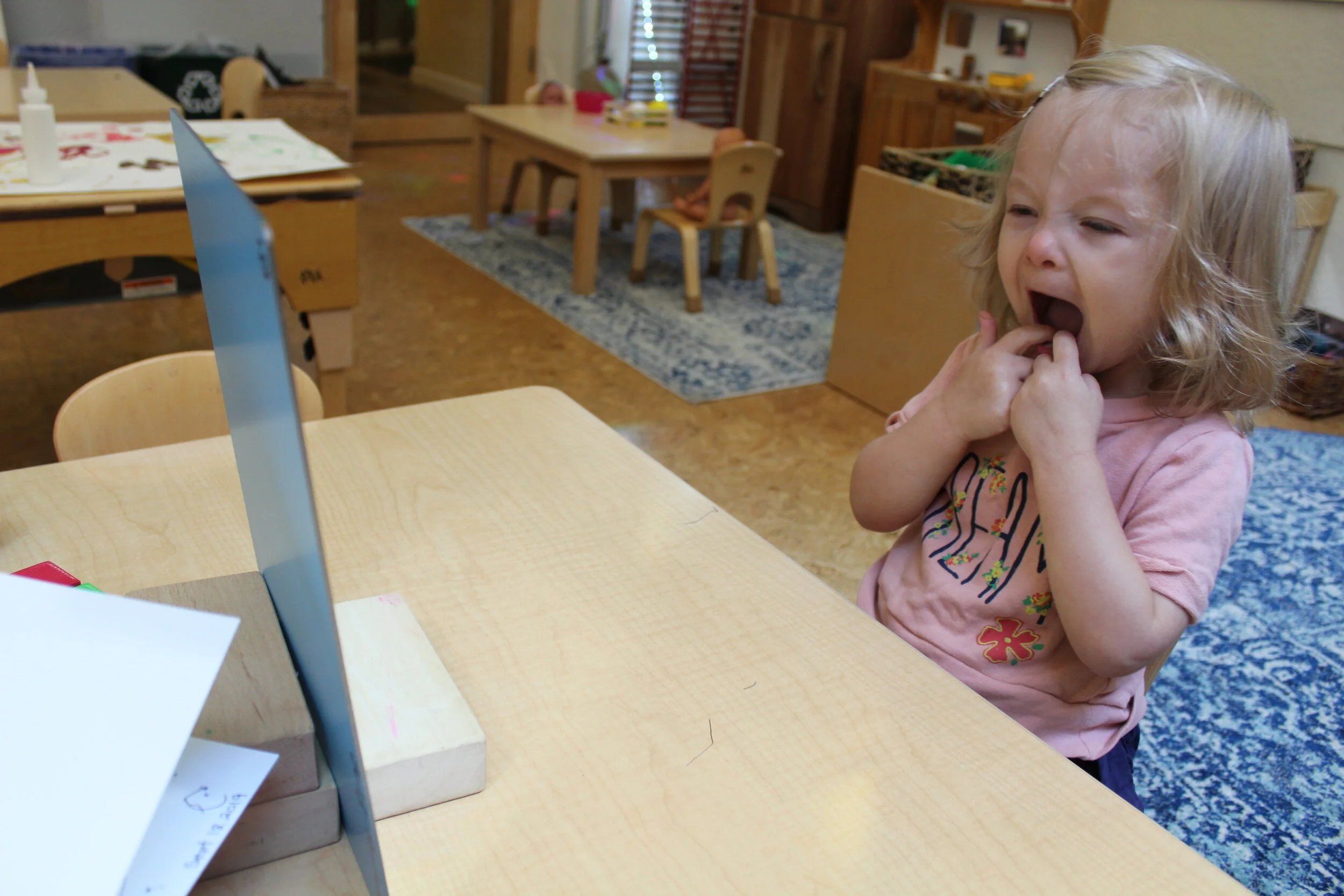
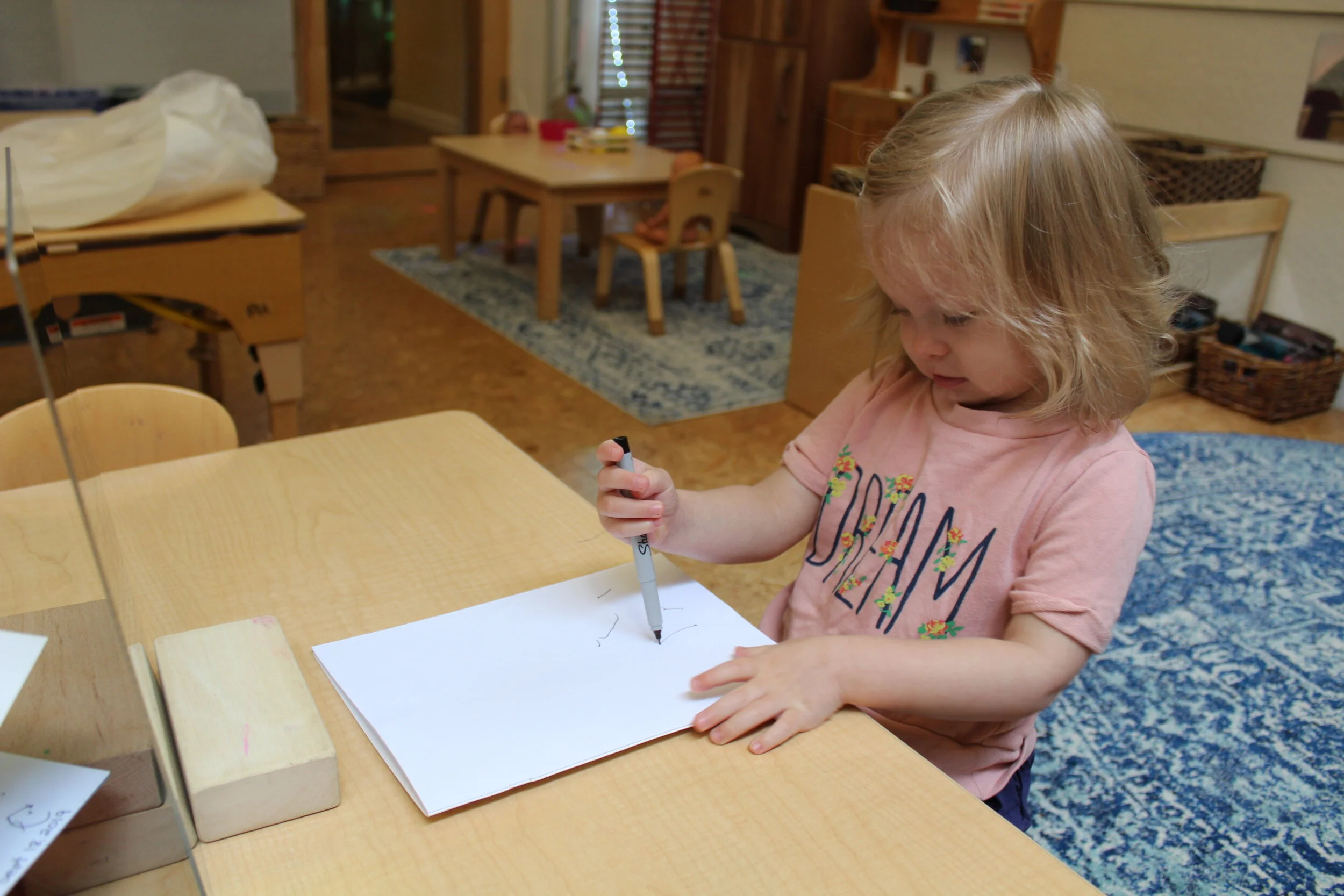
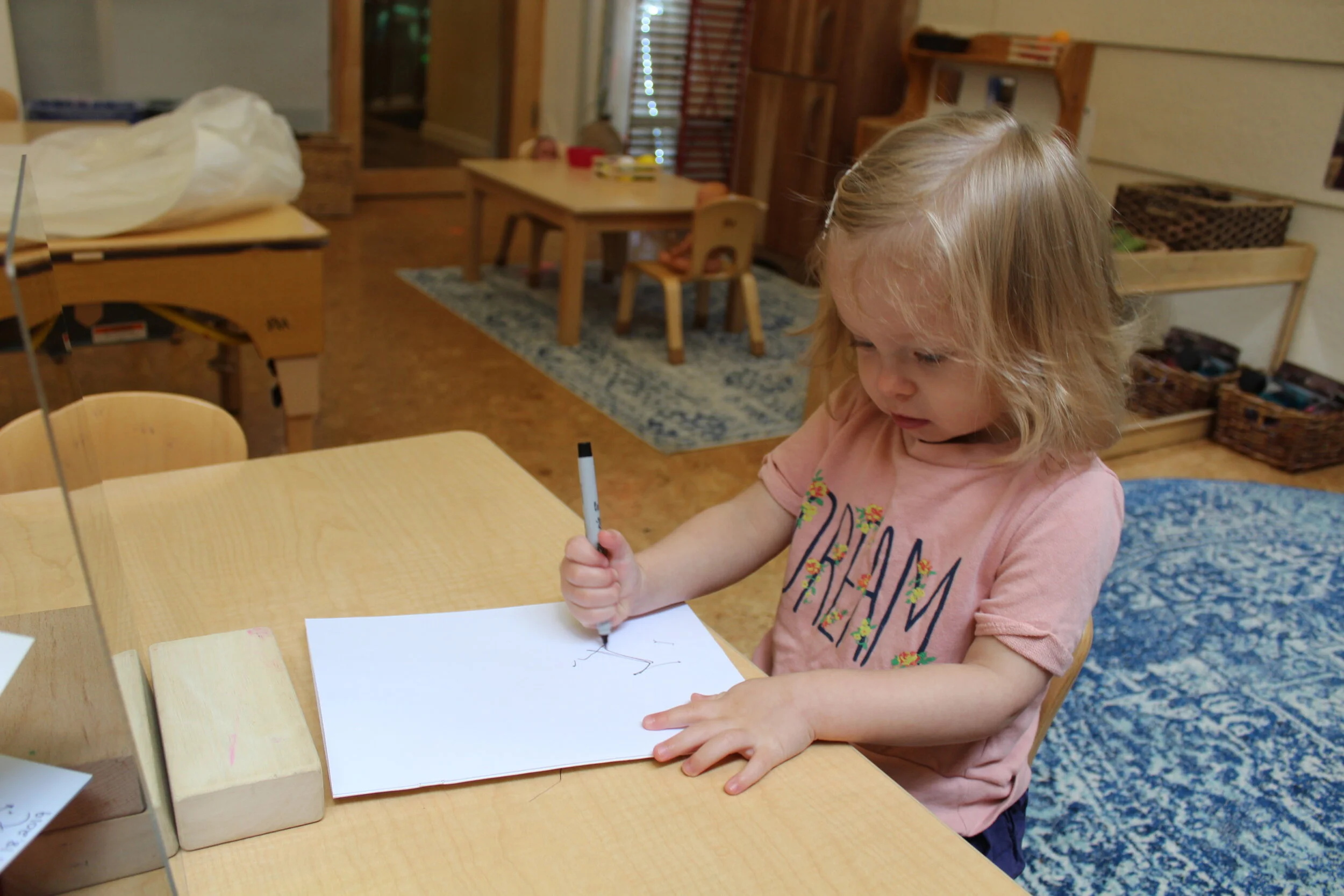
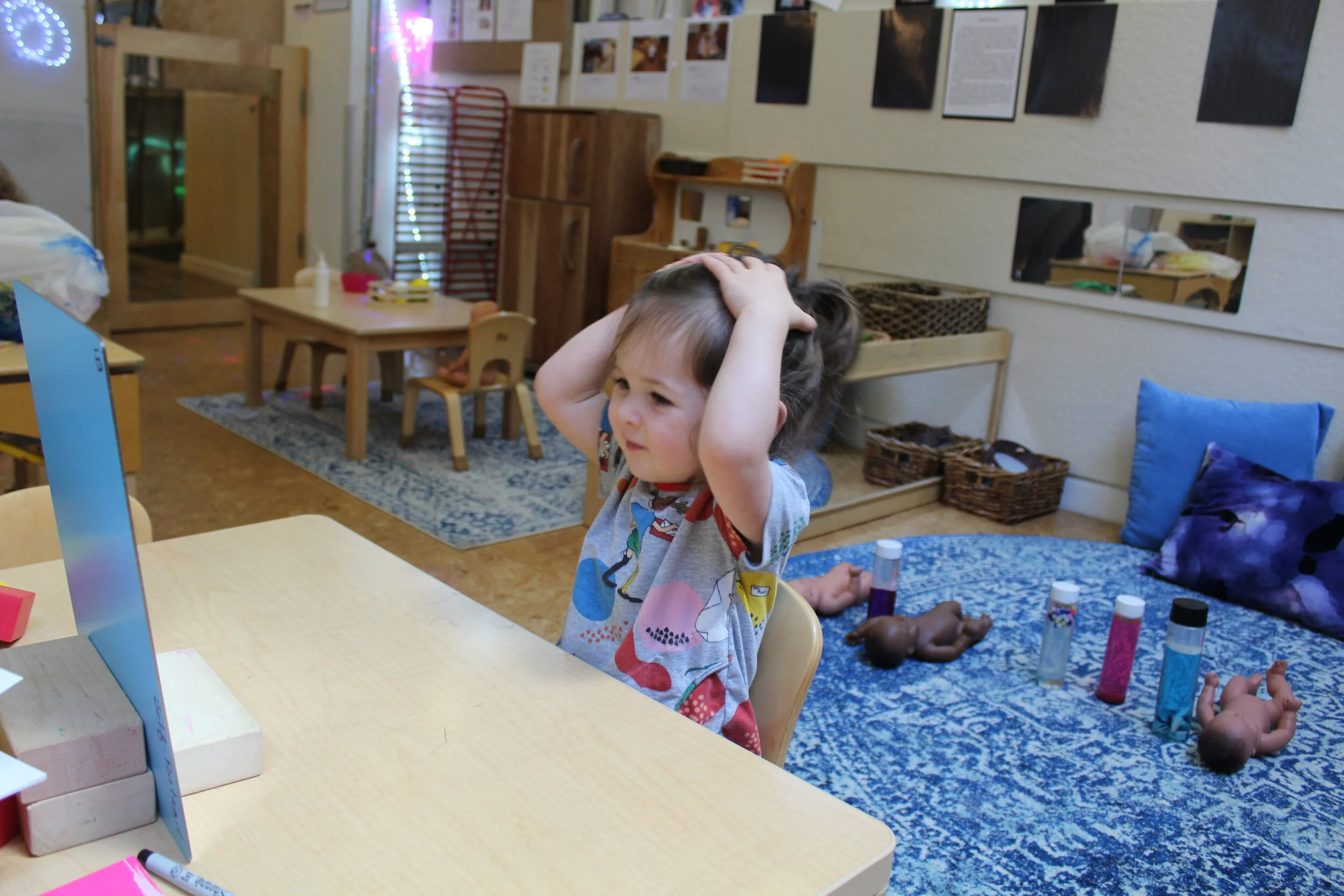
Annabelle pointed to her head, eyes, and showed her teeth.
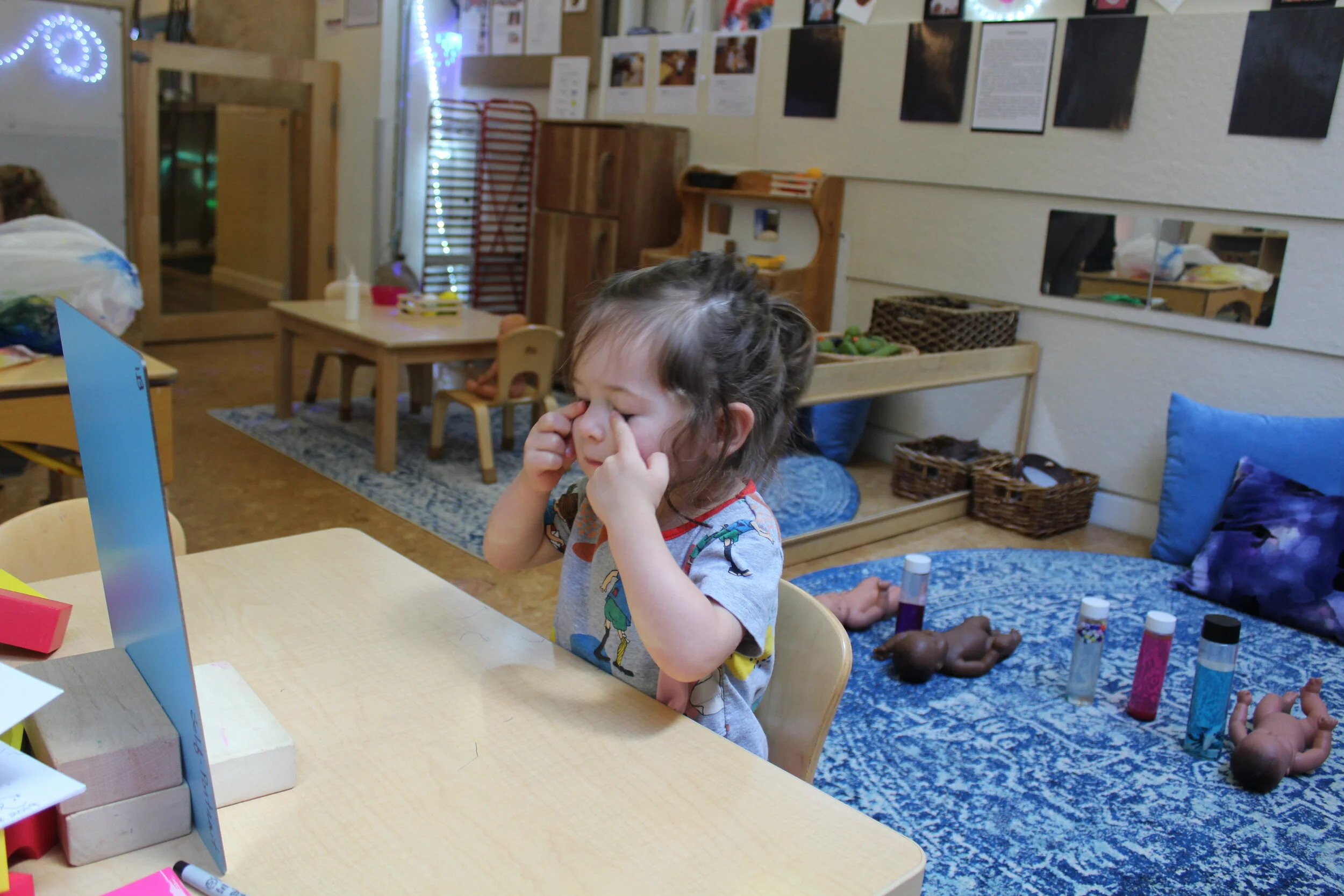
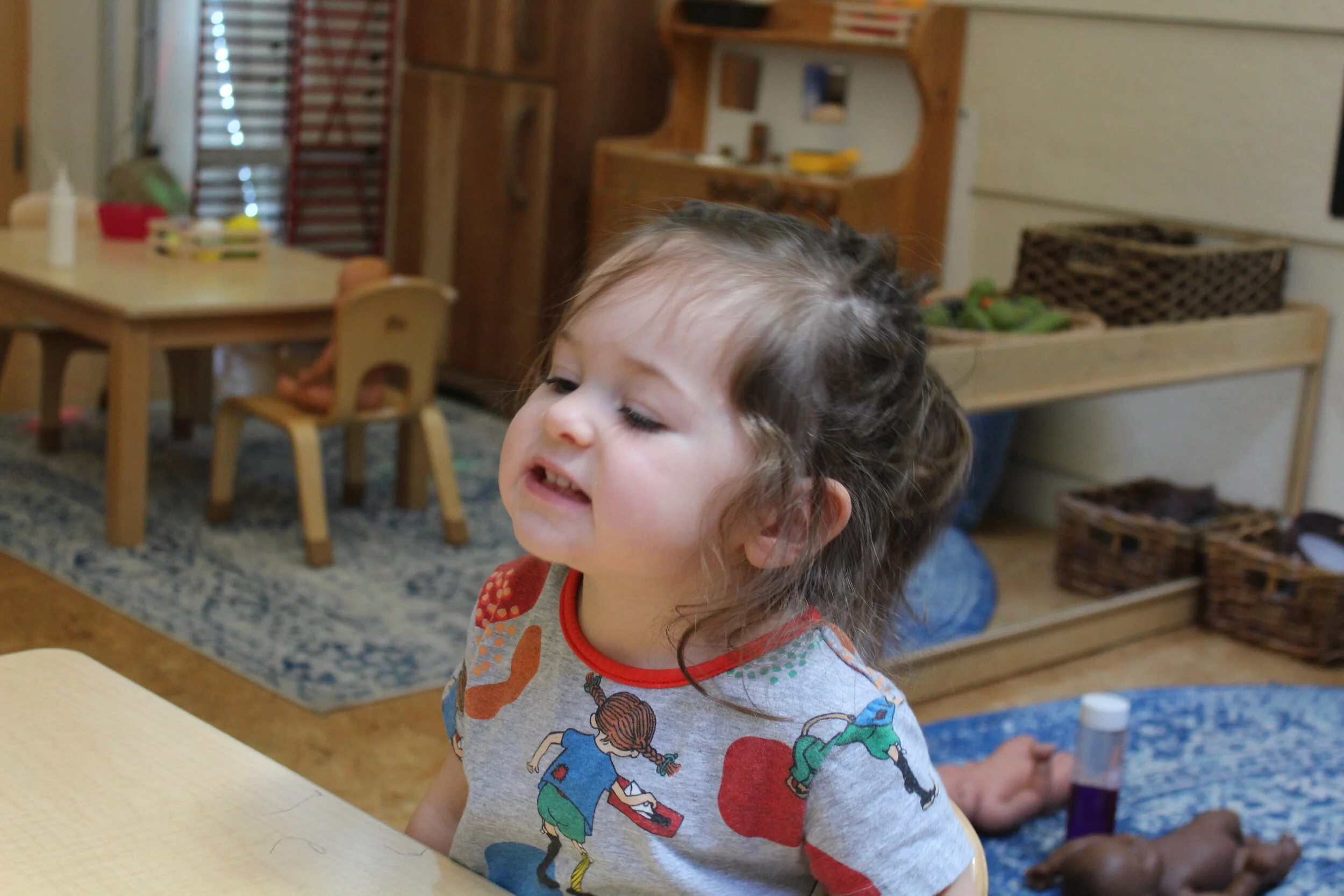

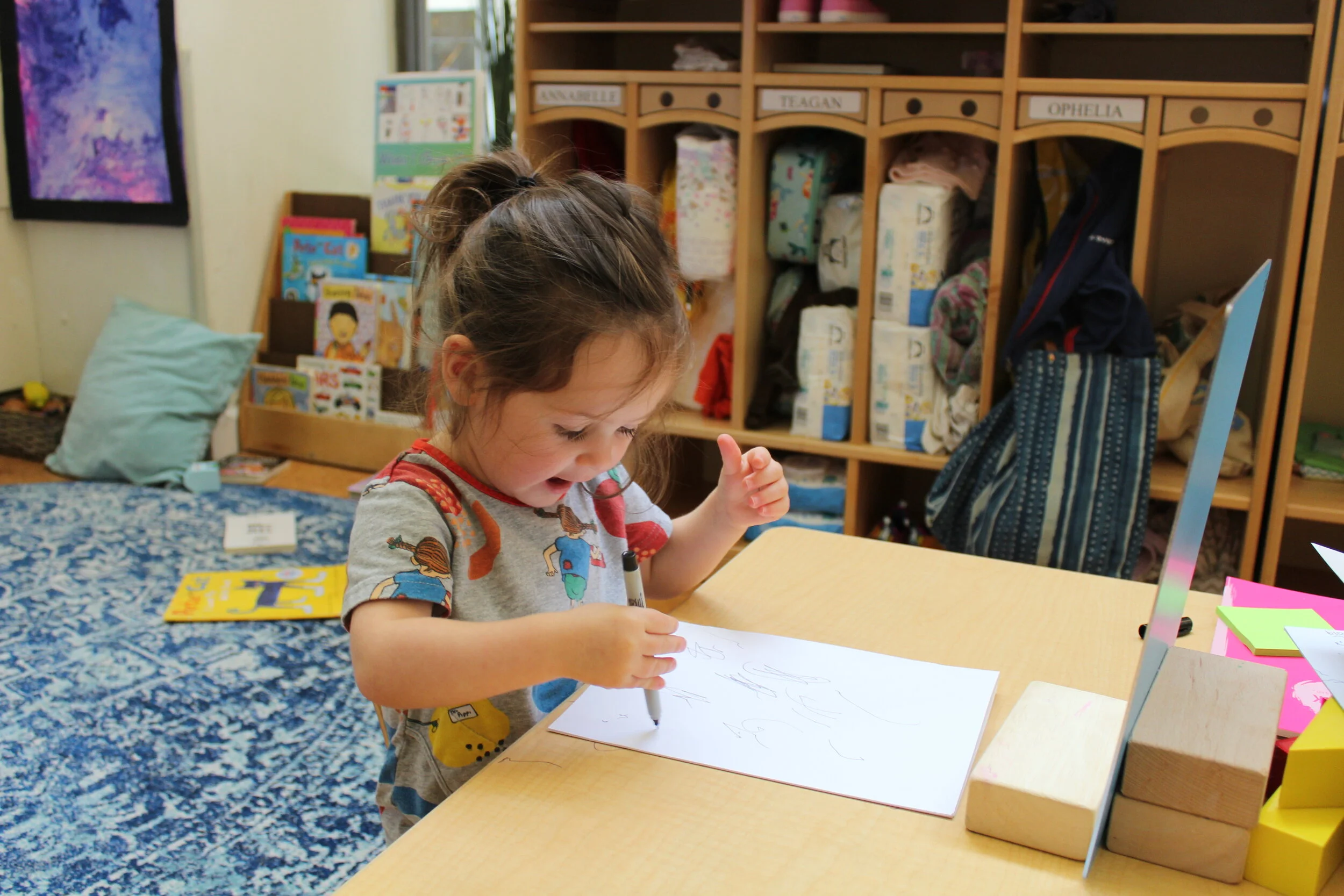
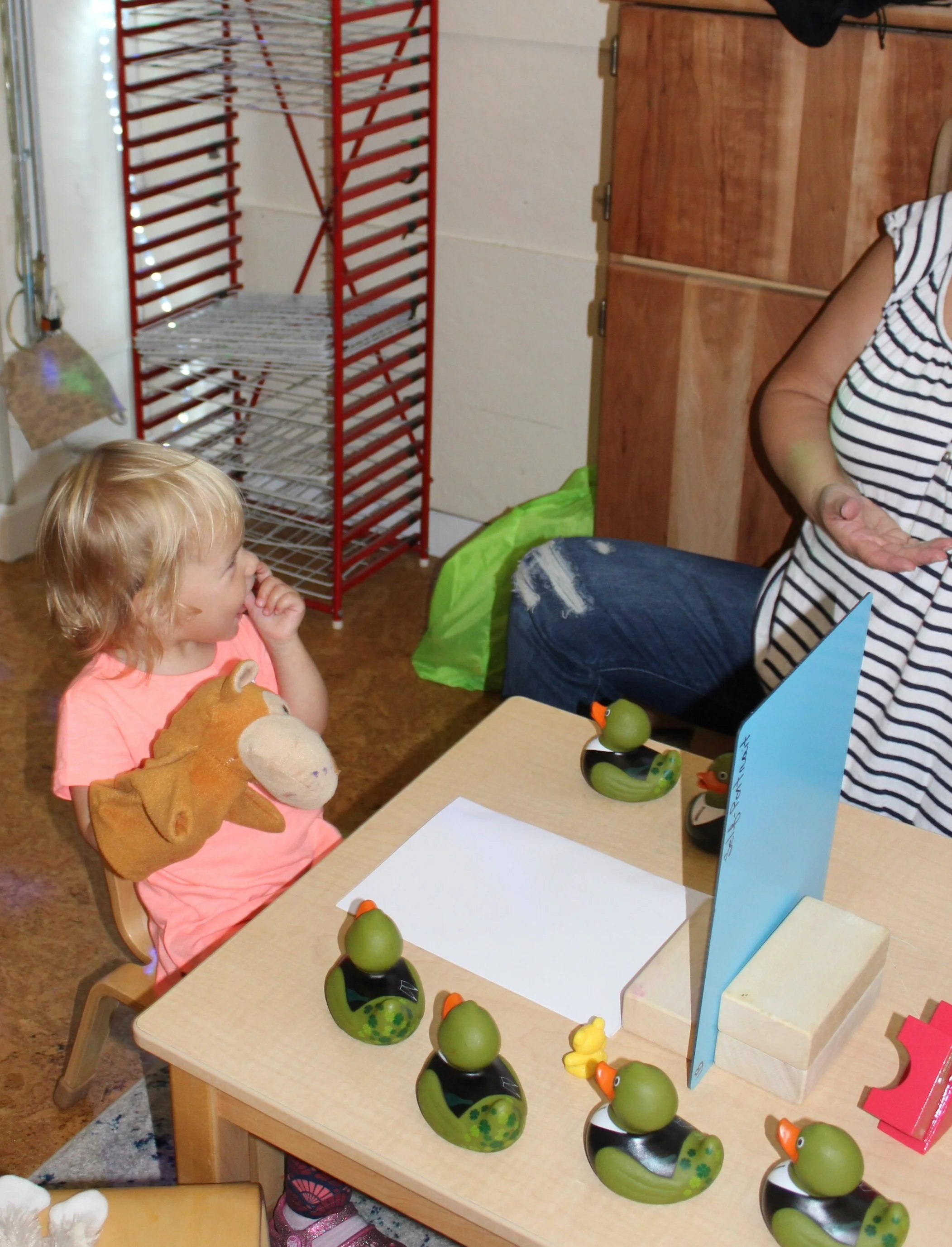
Alexandra appeared excited as she pointed to her nose and teeth.

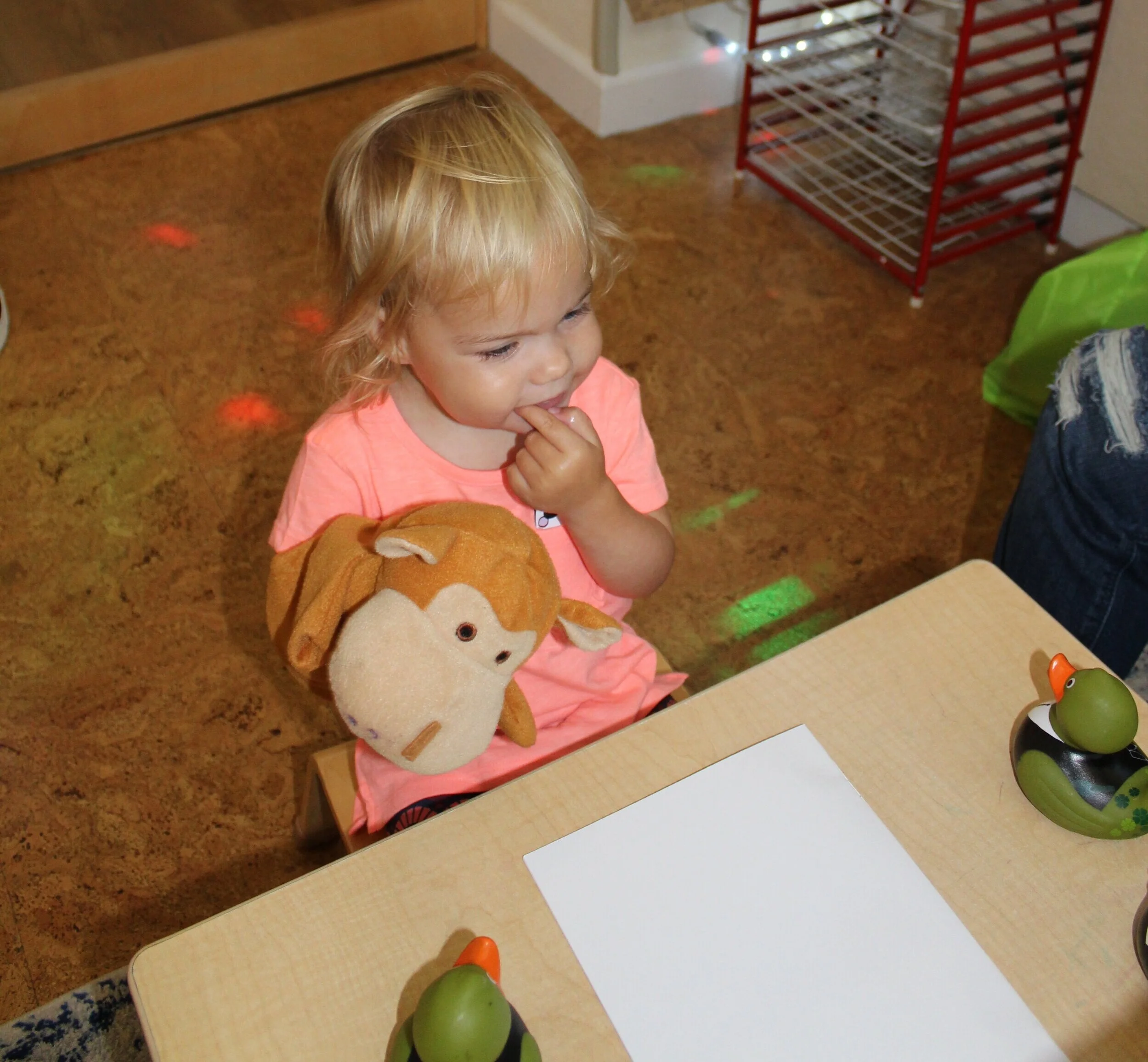
Painting
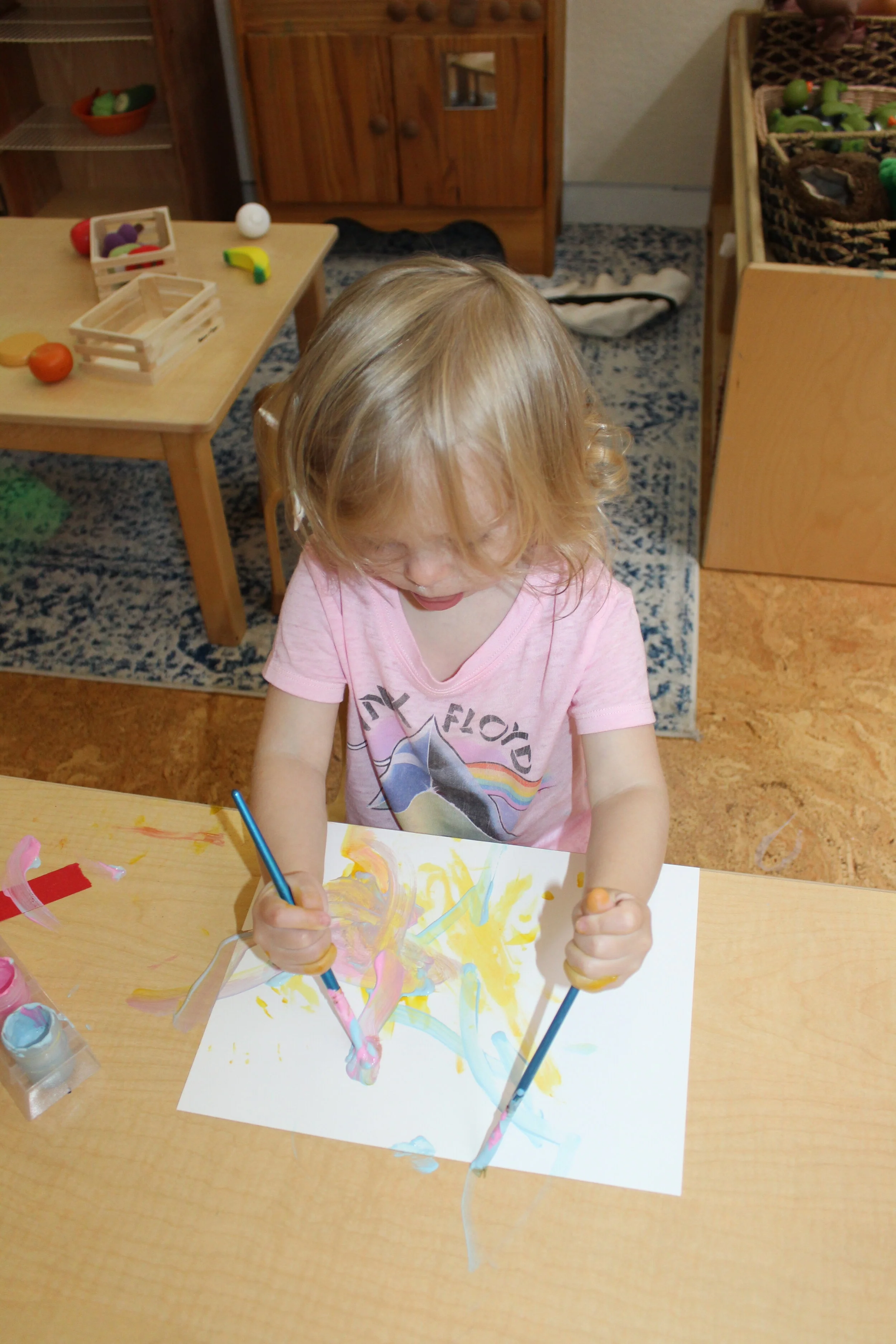
Painting not only helps their creative development, but it also stimulates their brain. Stimulating children's brain can also help other areas of their development. Most children enjoy a good messy painting experience; this will allow them to express themselves and develop their creativity freely. Providing different paper, paints (texture) and paintbrushes enable them to discover new ways to paint.
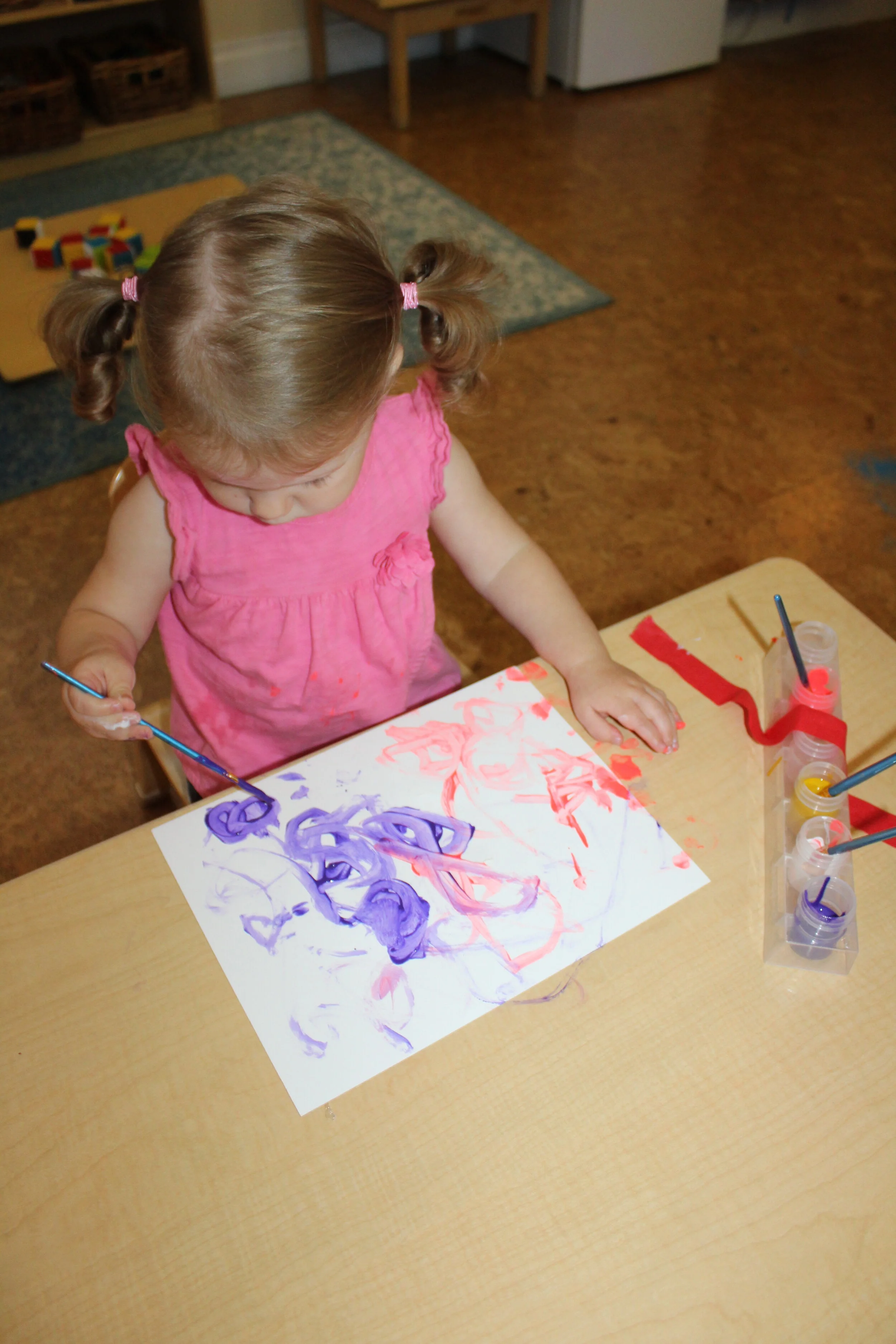
Ophelia: “ I making a rainbow!”
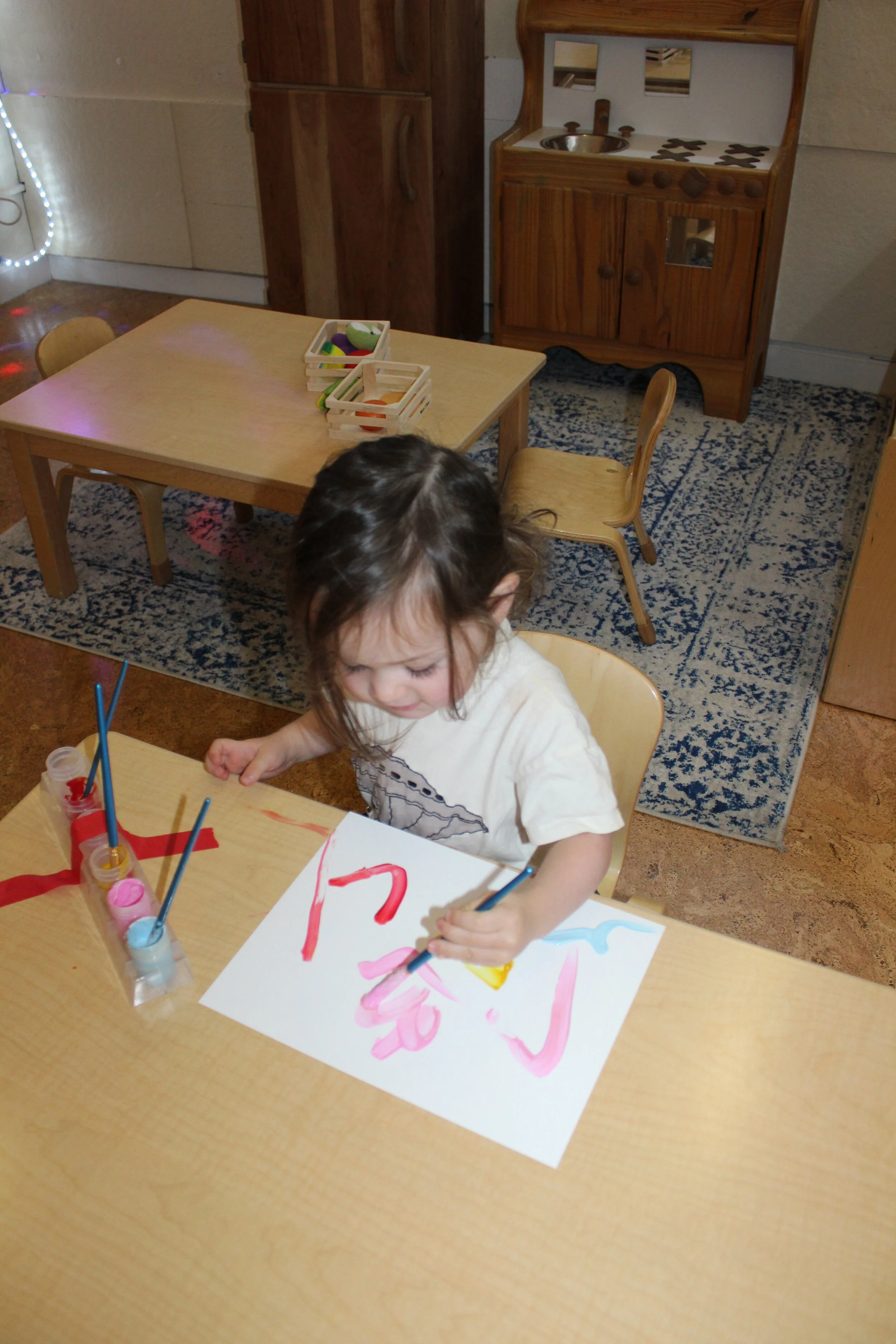
Annabelle: “I making blue dinosaur! I making pink dinosaur!”
Bubble Wrap Painting
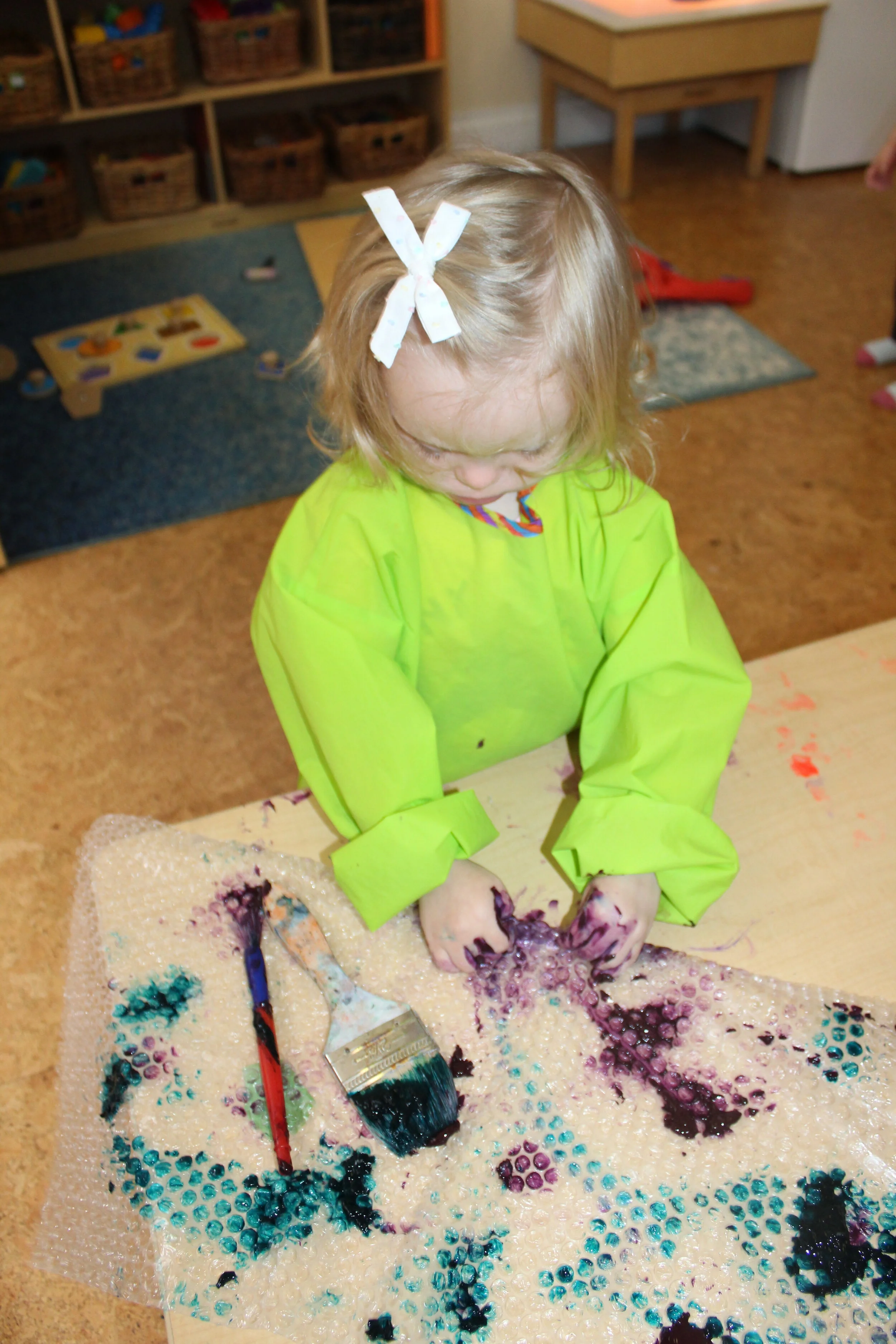
The children pressed the paper and gradually increased their speed, as they hear a popping sound. They changed the grip, as they alternated tools and lightly touched and pressed down onto the paper with their fingers and popped! The children appeared to enjoy the sound the bubble wrap paper made as they maneuvered the painting tools in different directions.
The painting activity provides:
-sense of hearing, touching, and smelling
-improves fine motor developmental,
-strengthens finger, and hand muscles
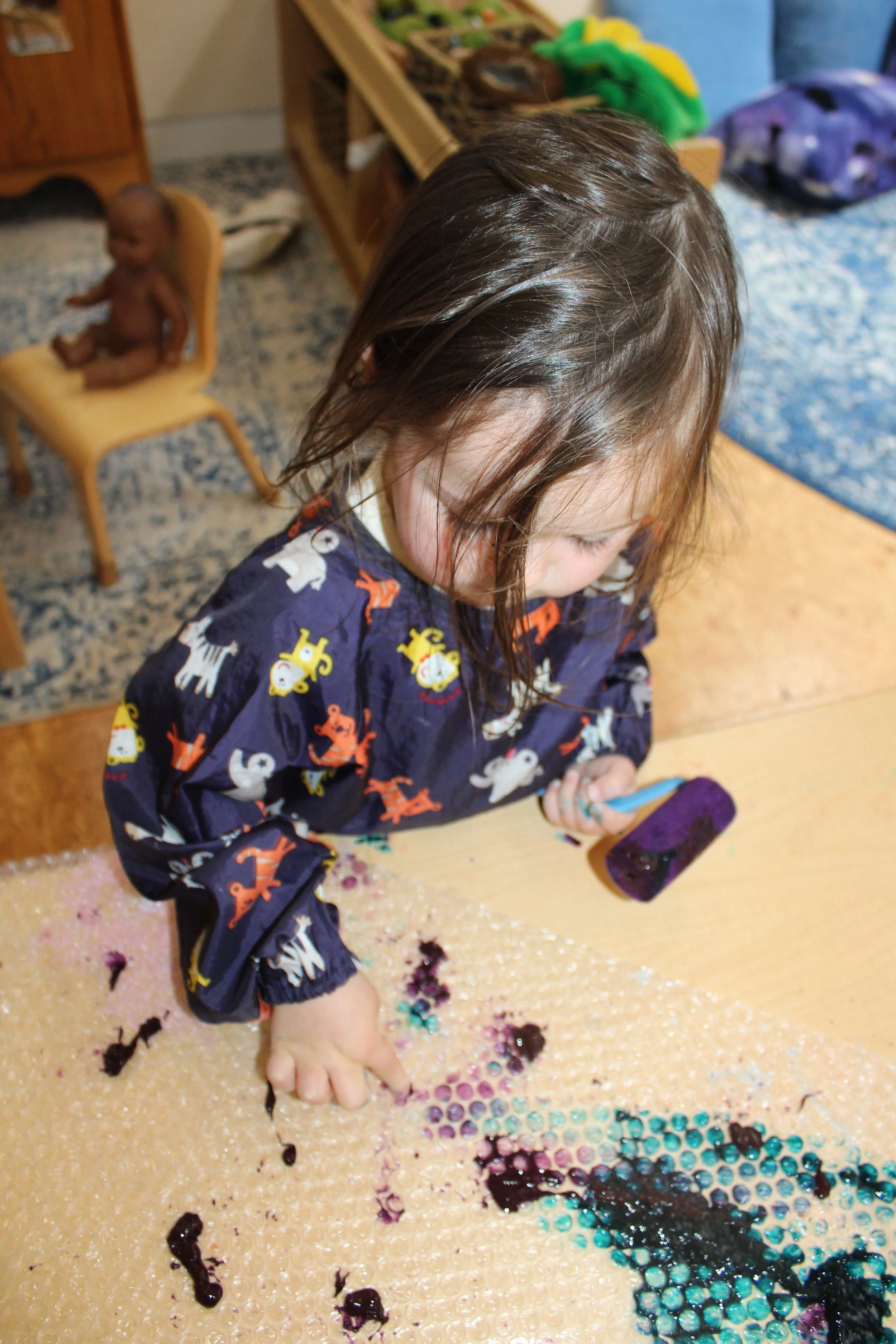
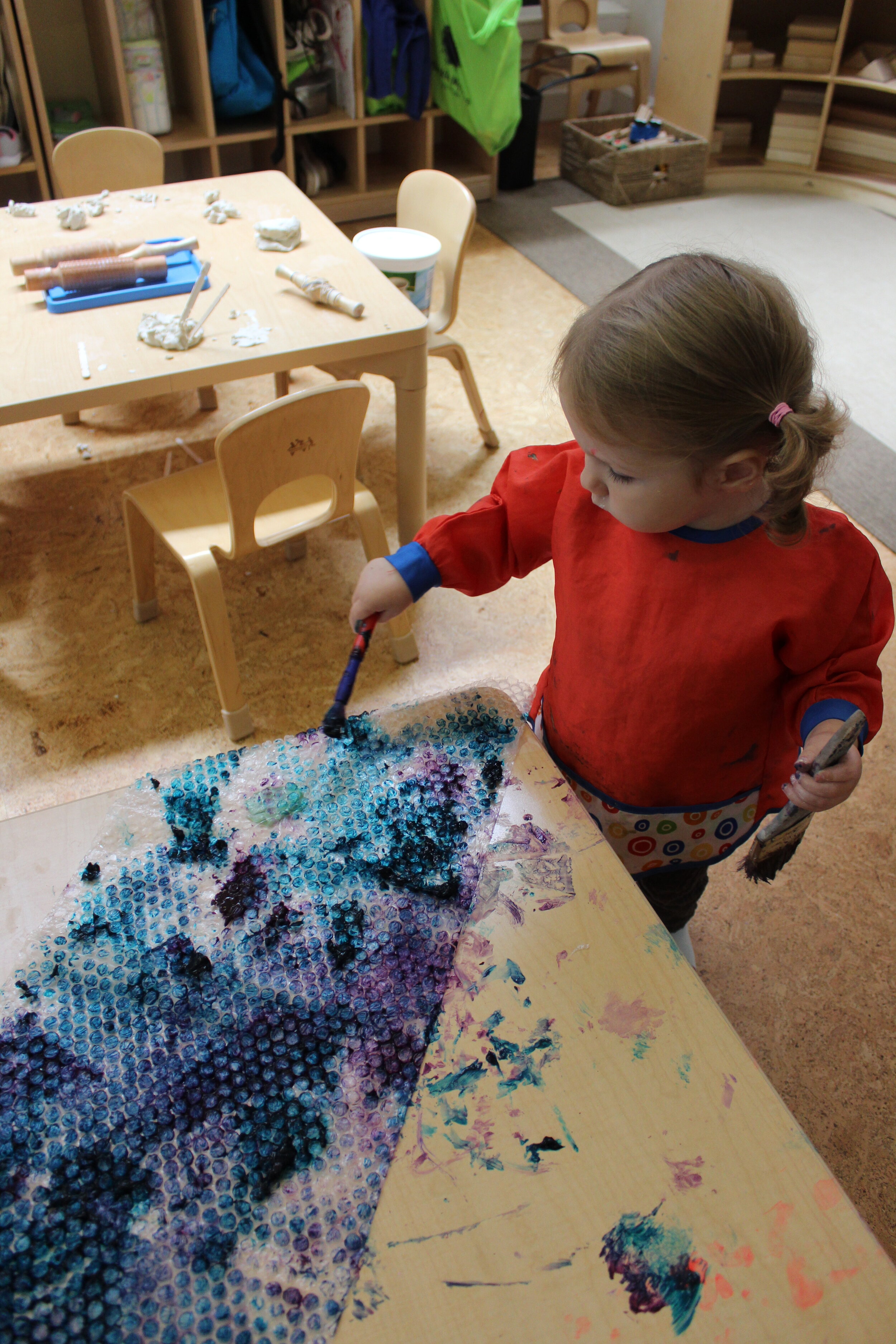
Painting with Different Tools
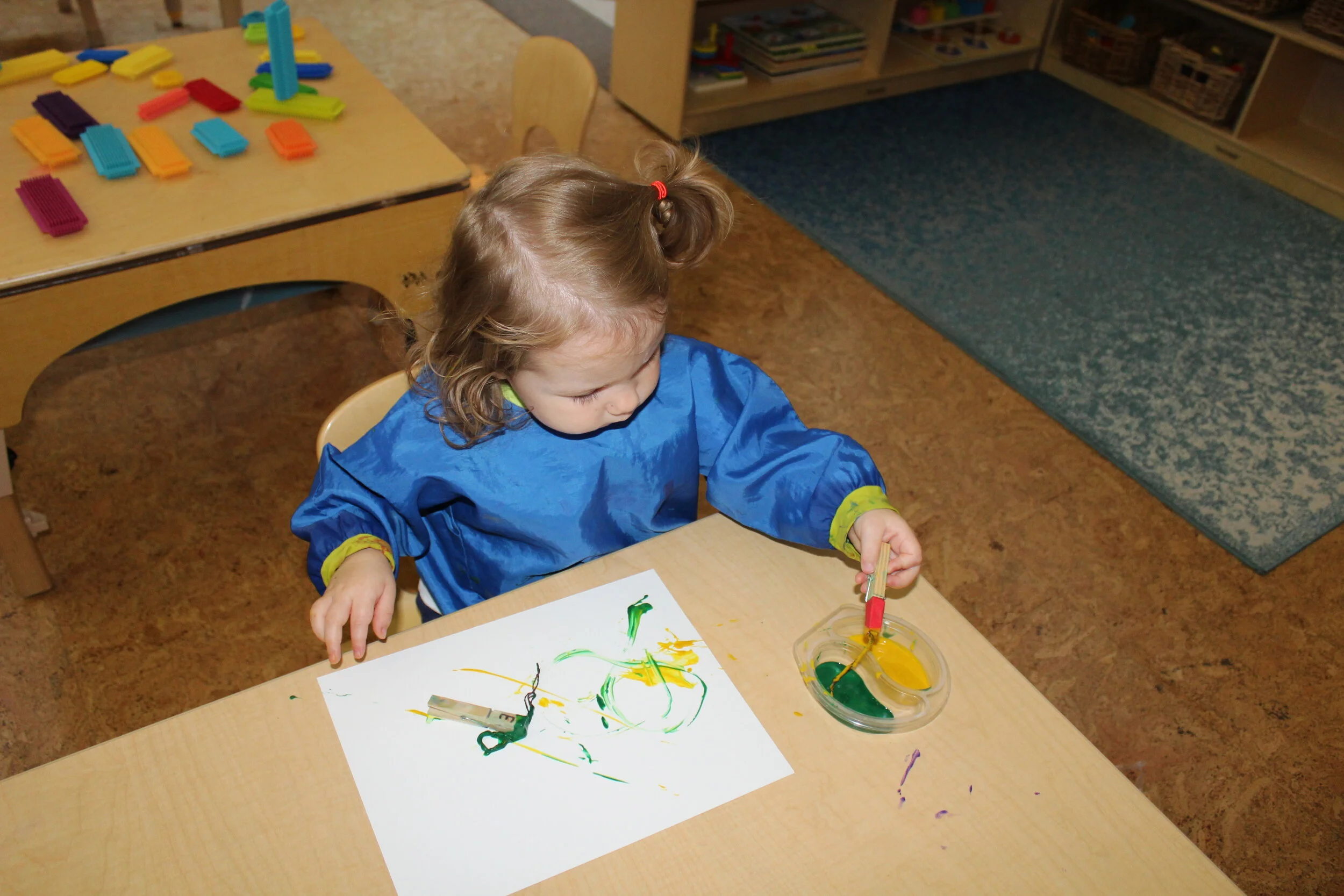
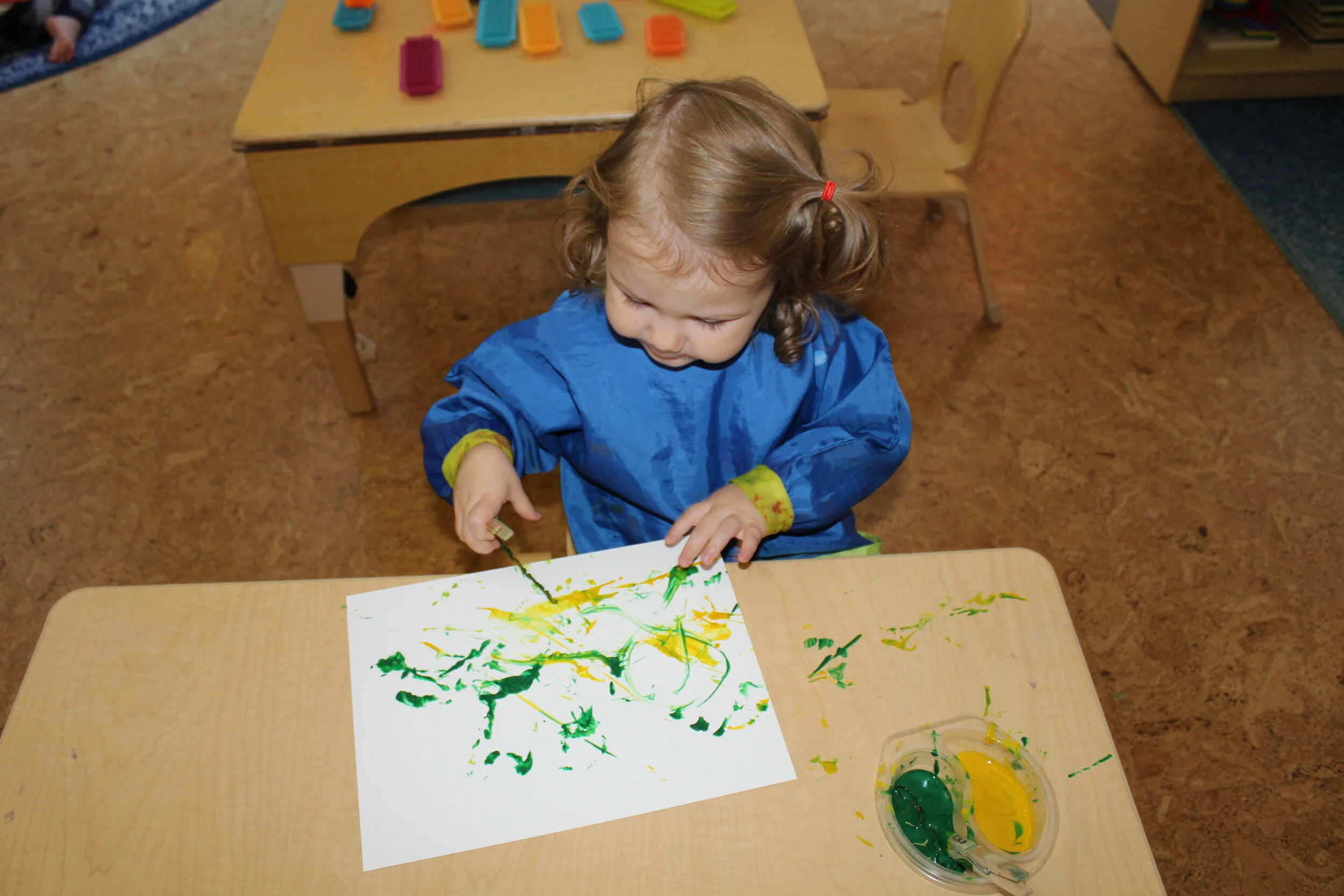
Young toddlers learn by observing, exploring, and investigating. Open-ended and hands-on art activities are fun and interactive. As they engage with a variety of painting tools, it stimulates their creativity, imagination, and fine motor skills.
Painting Tools:
Lego-Block
Painting with strings using clothespins
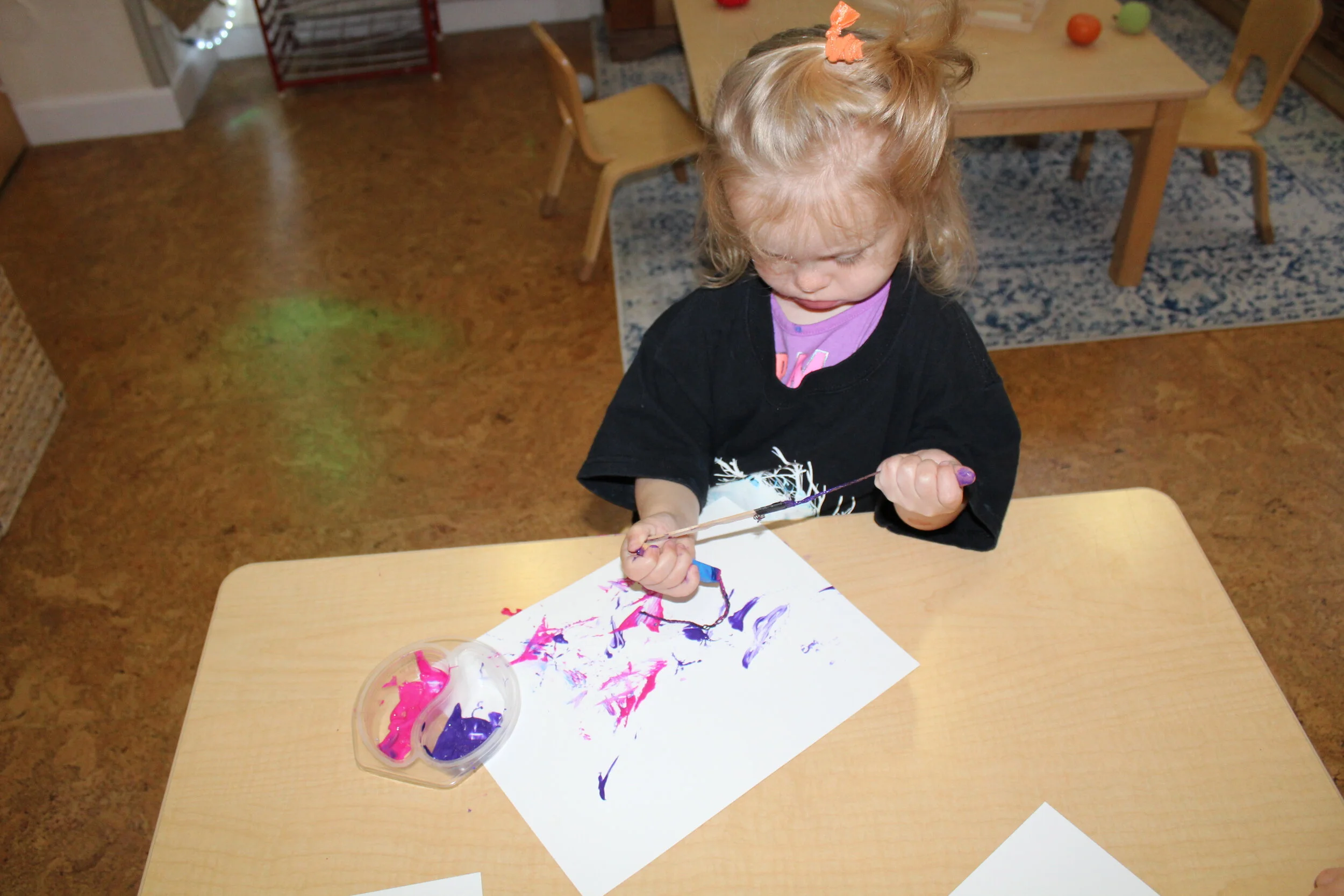
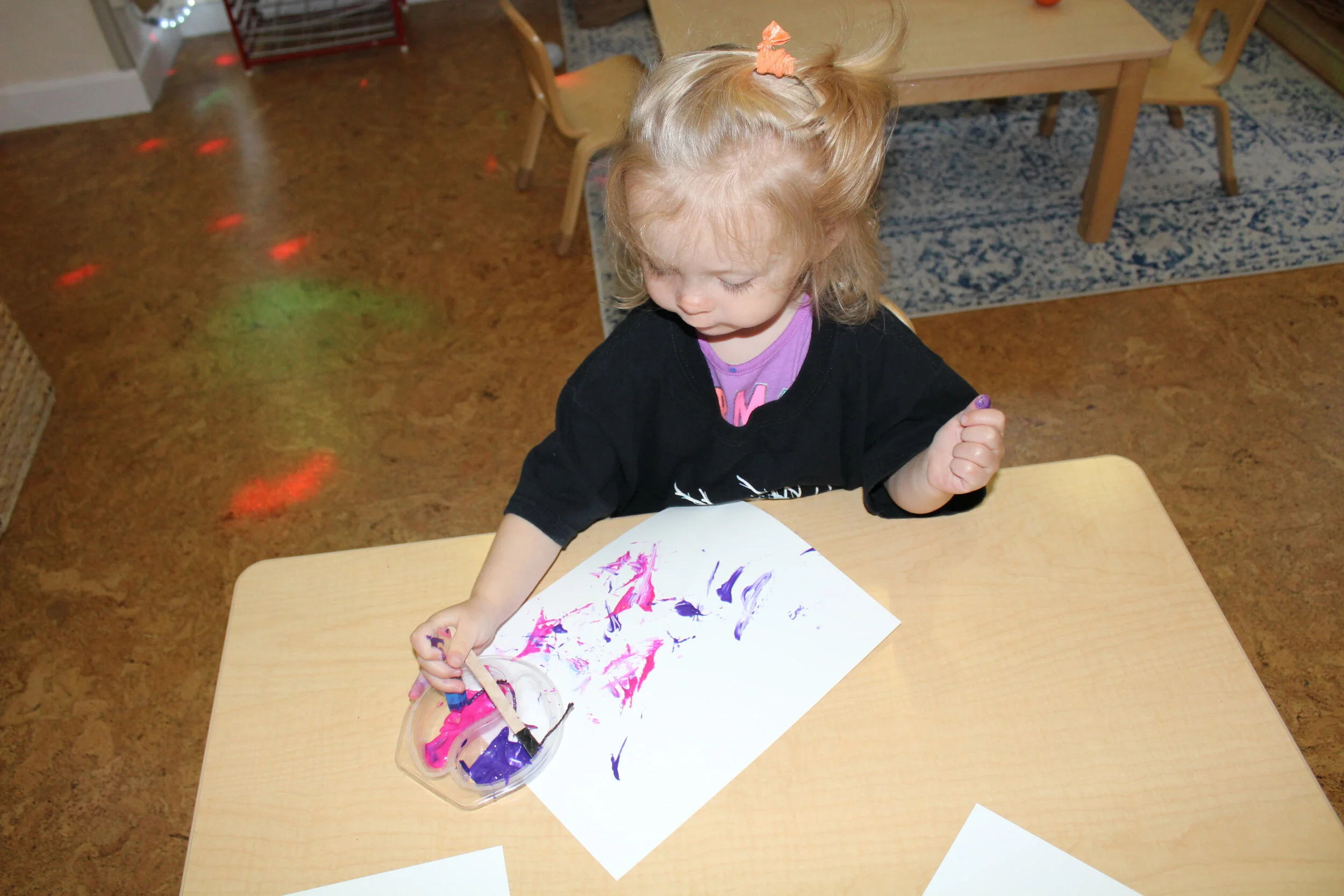

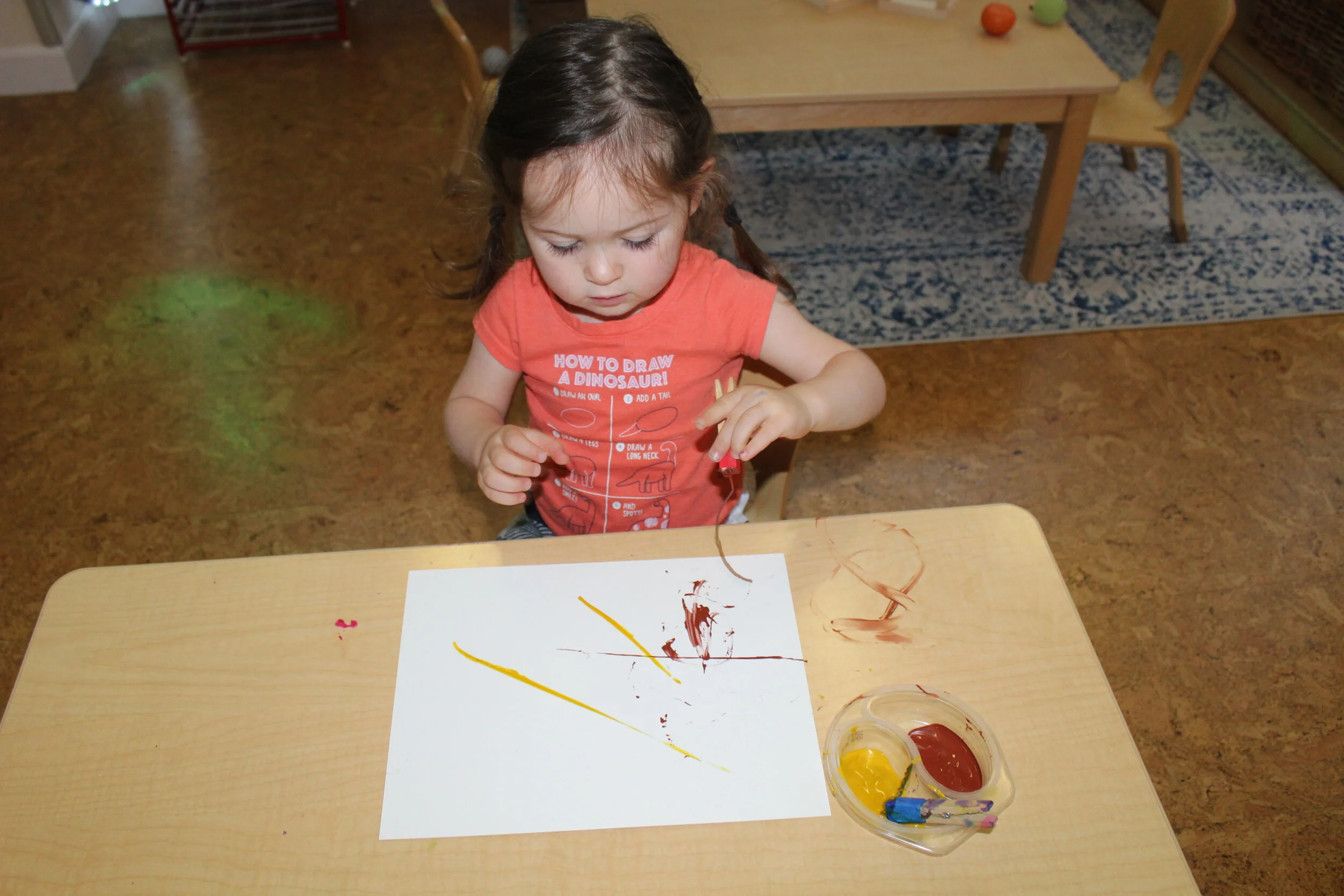
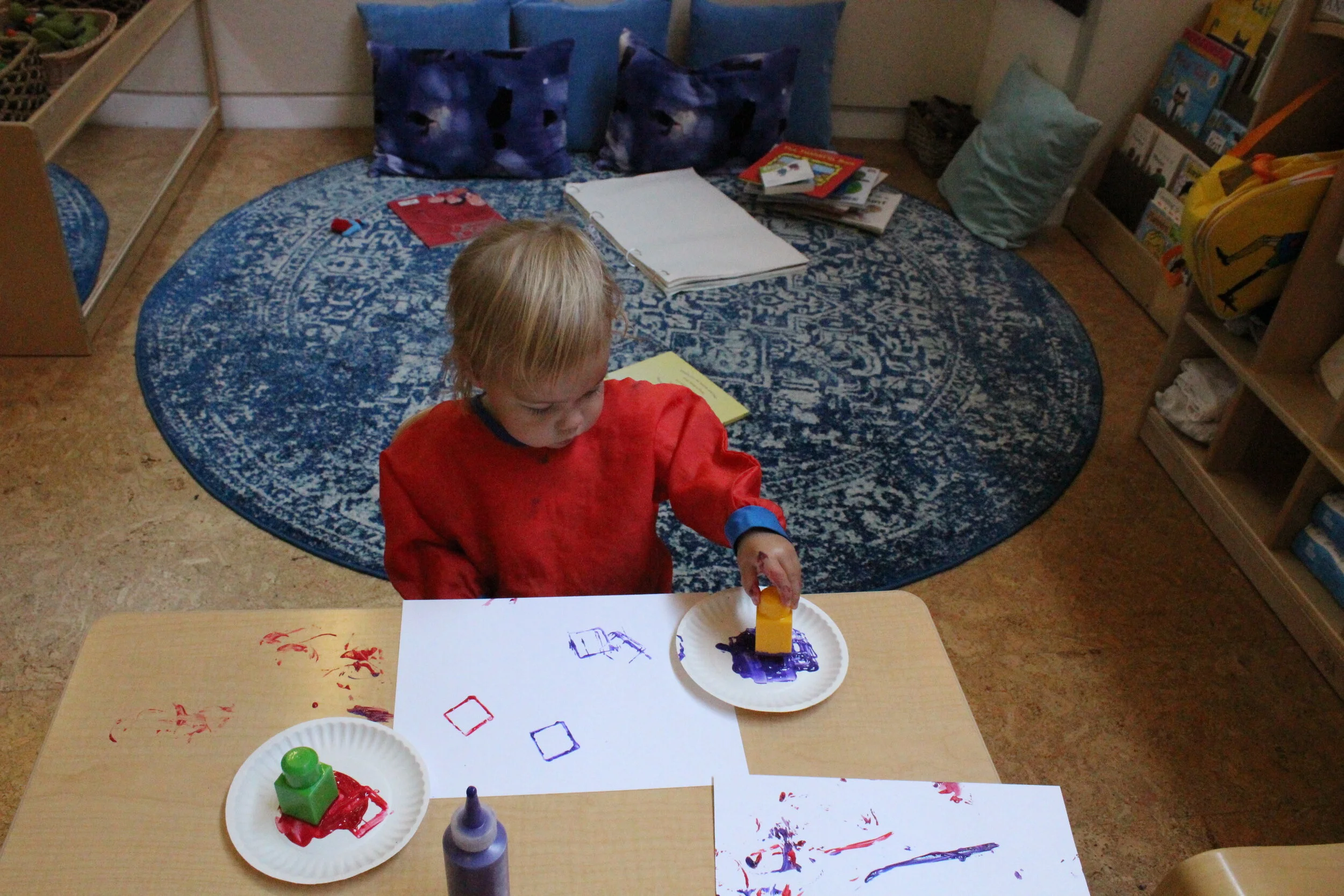
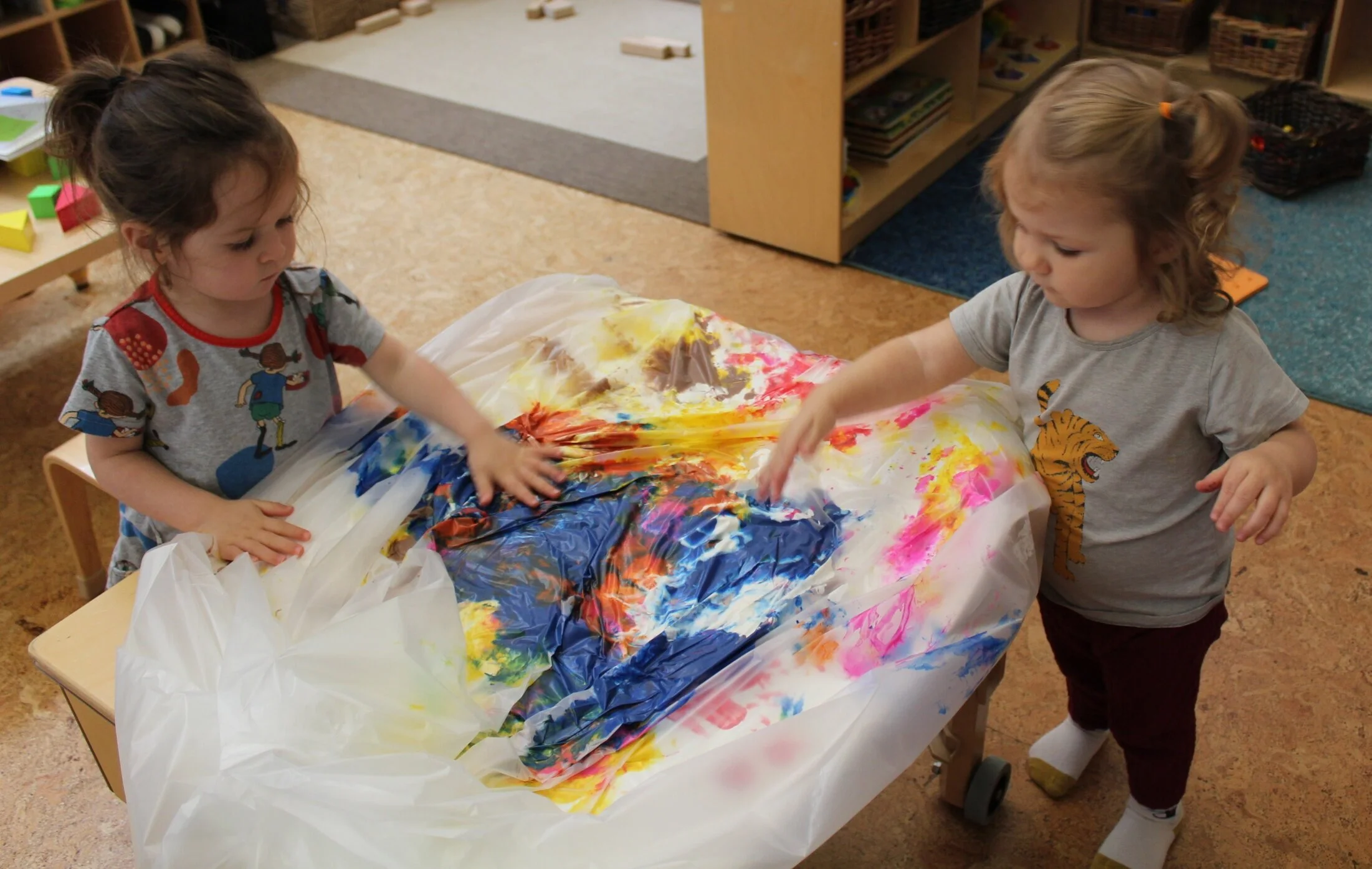
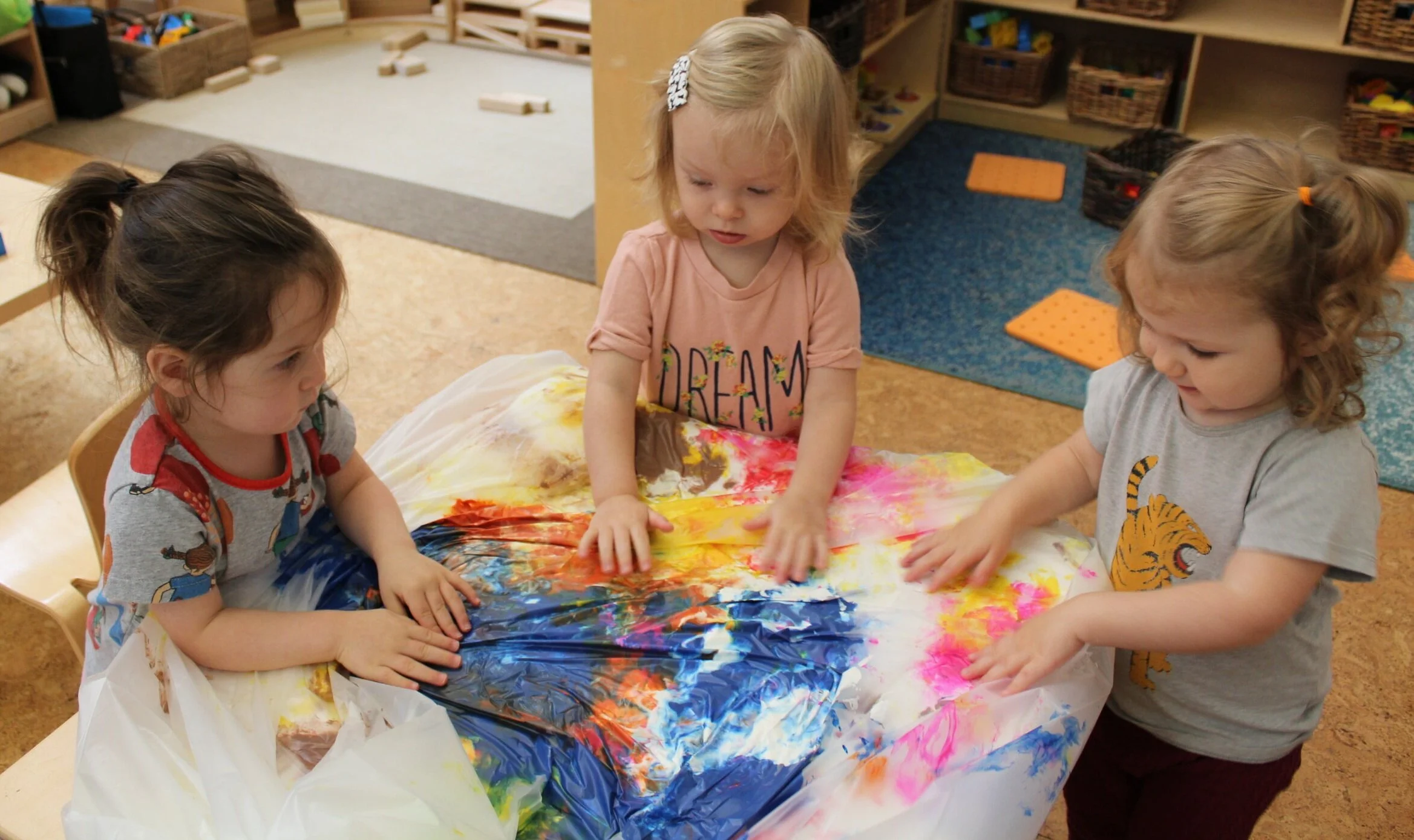
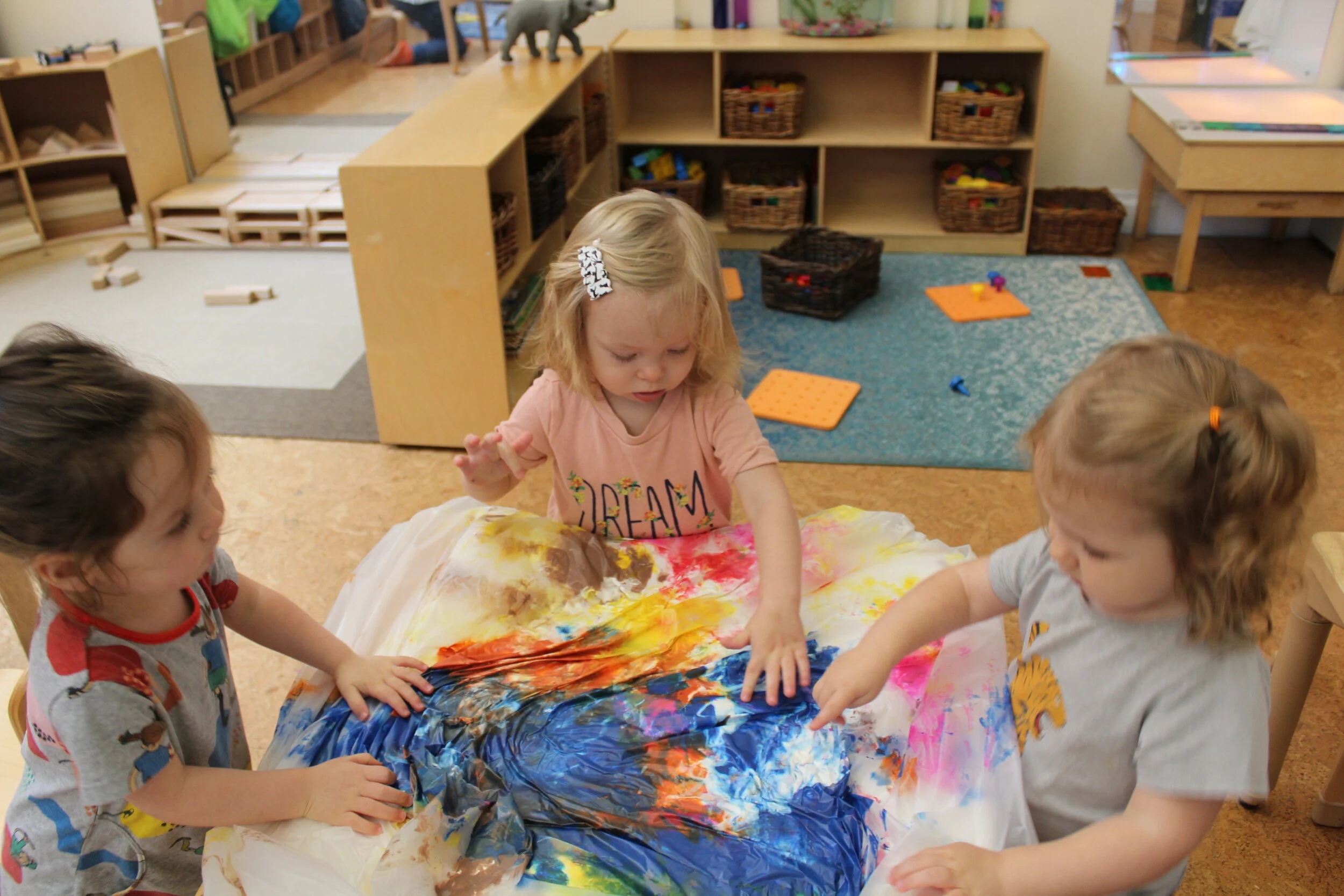
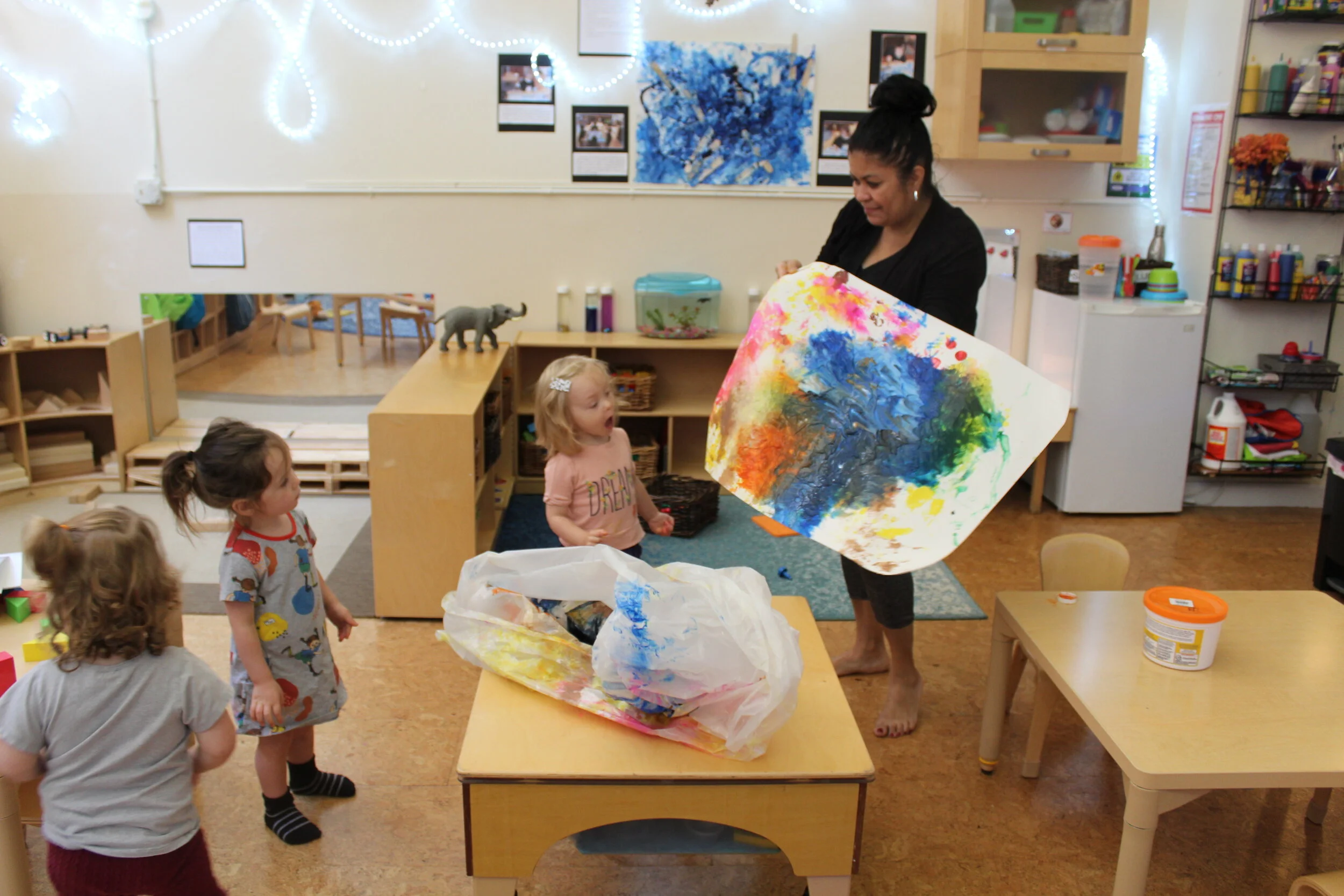
What does the painting look like?
Annabelle: “Blue and red and yellow and orange. A big grumpy man. Tall dinosaur!”
Teagan: “It looks dark!”
Ophelia: “Waterpaint over there!” (Pointing to the painting)
Alexandra: “A ball. A dot!”
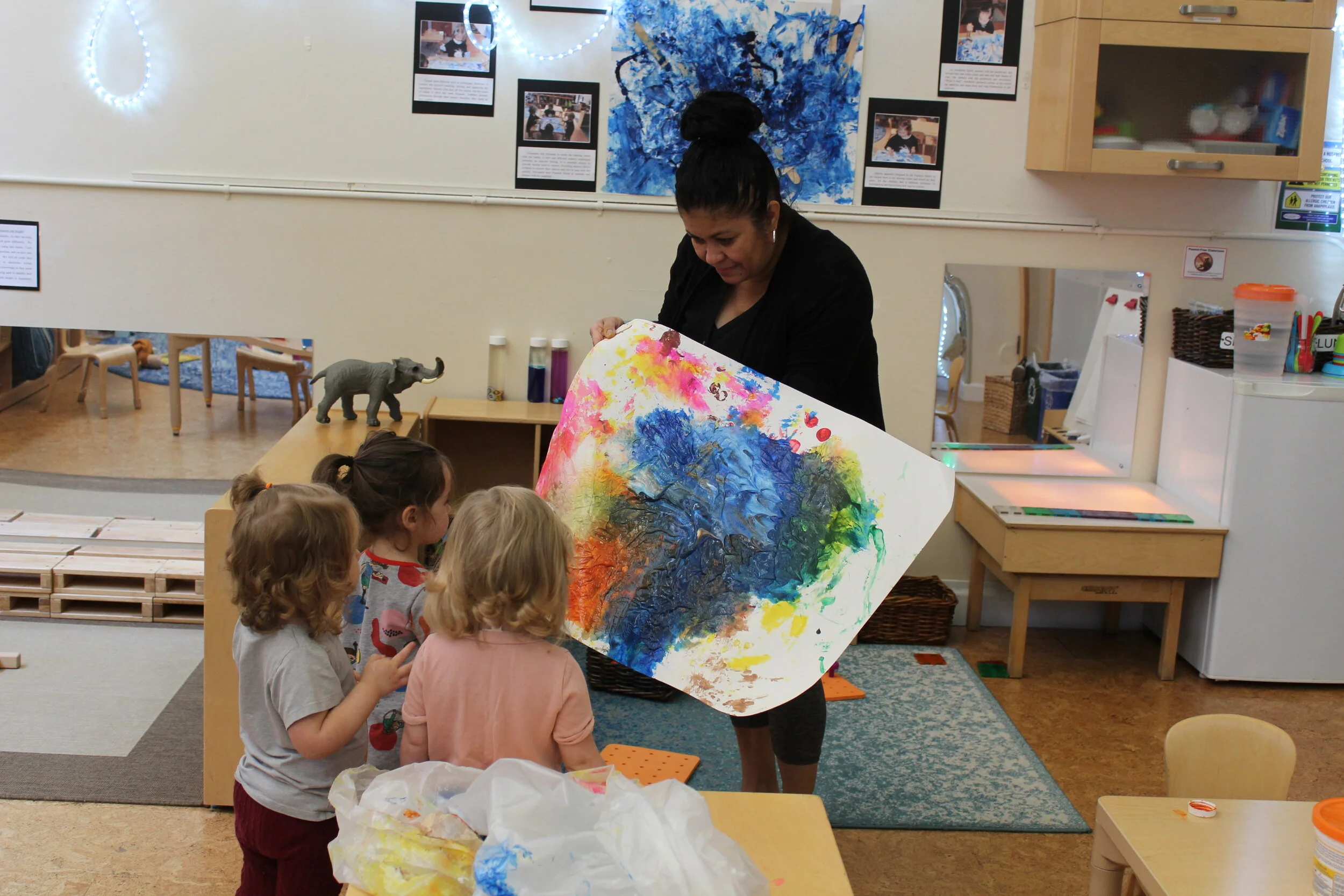
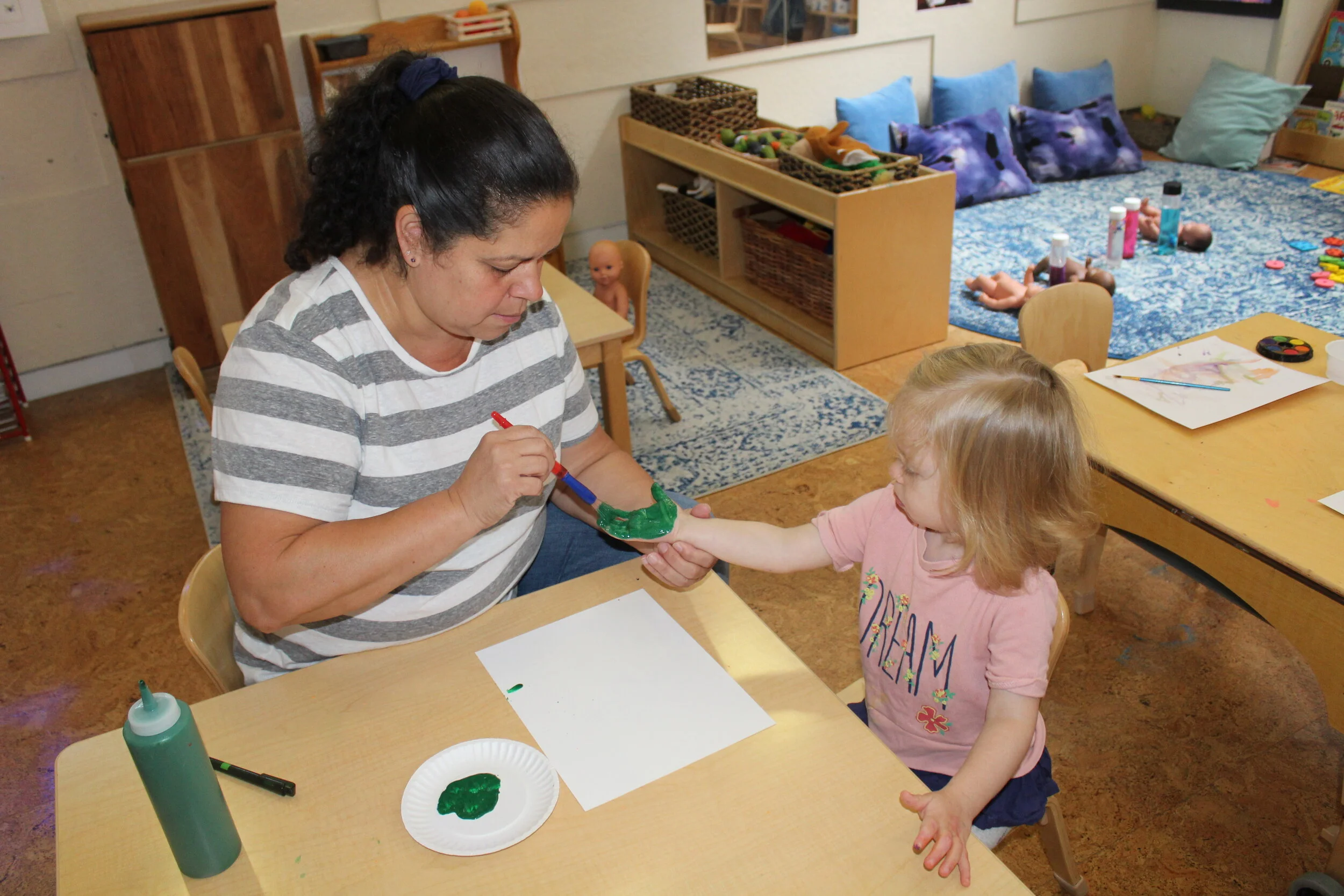
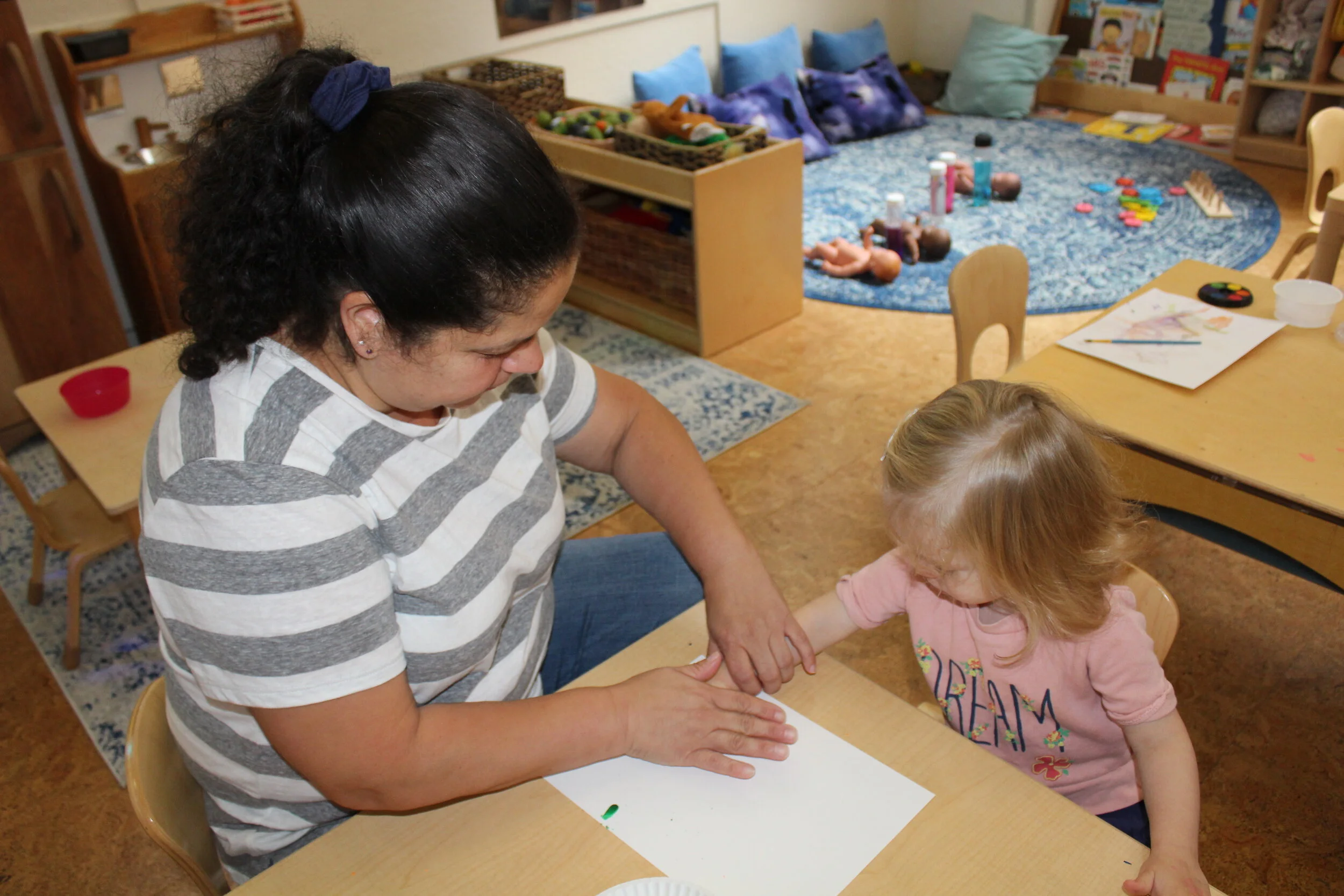
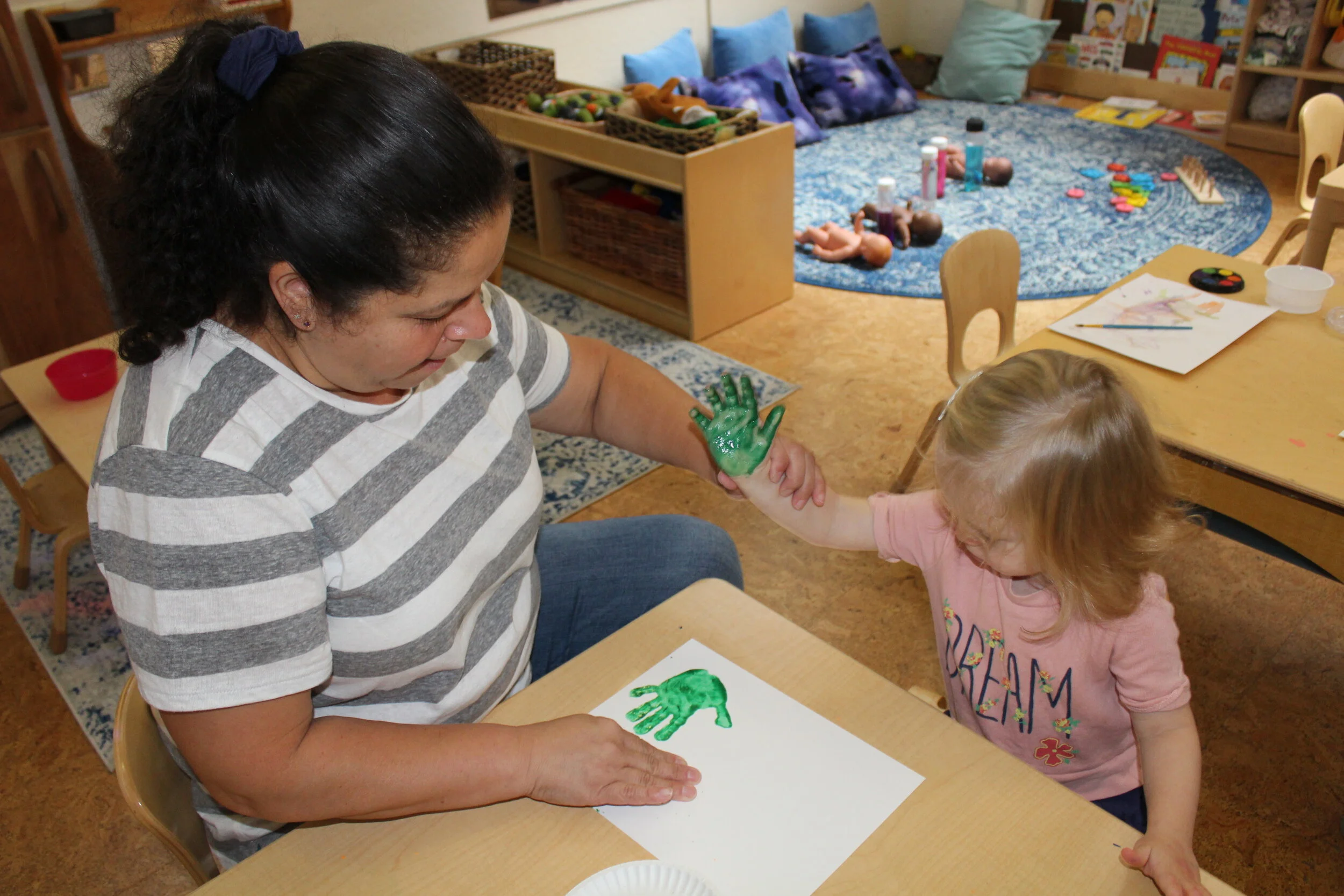
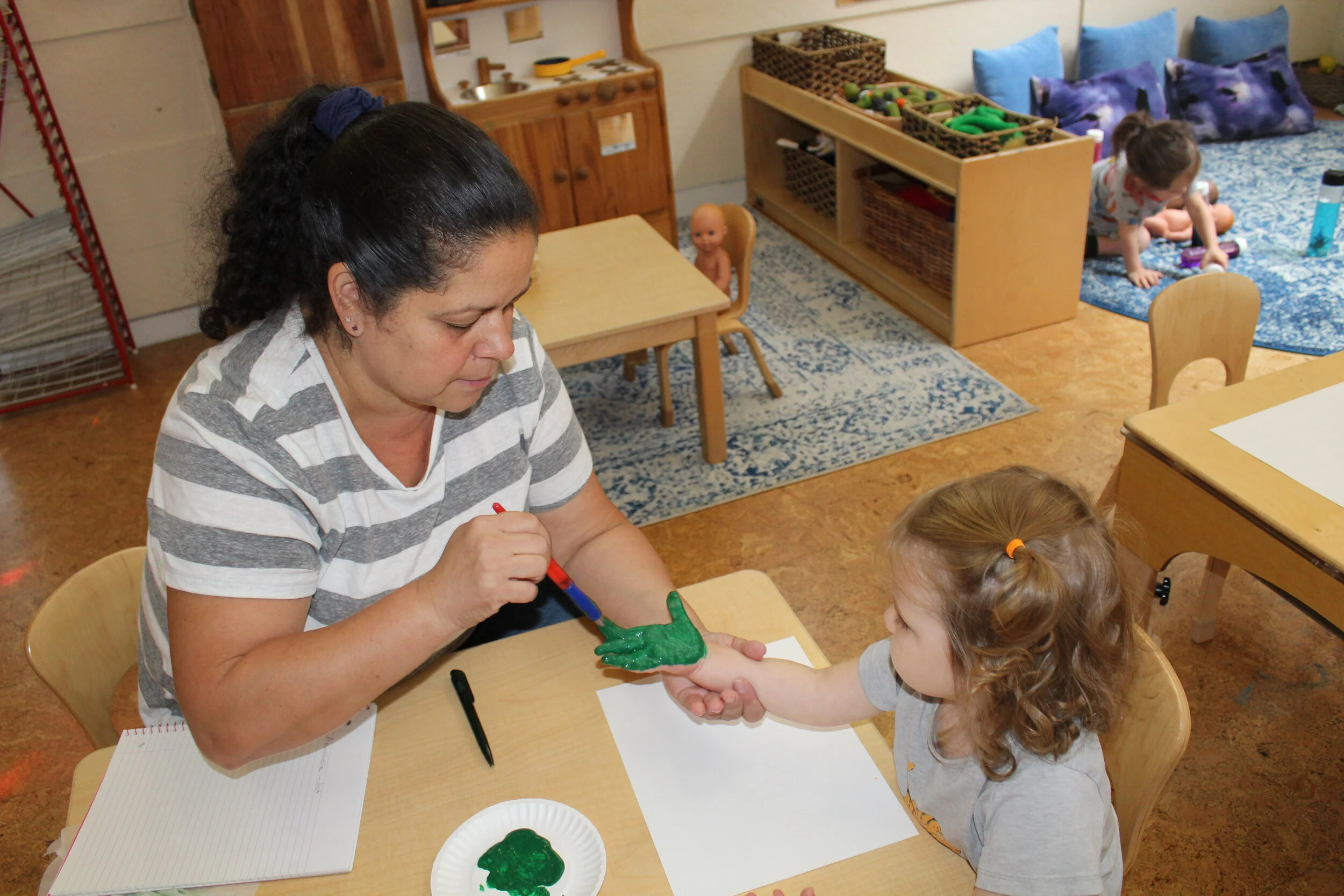
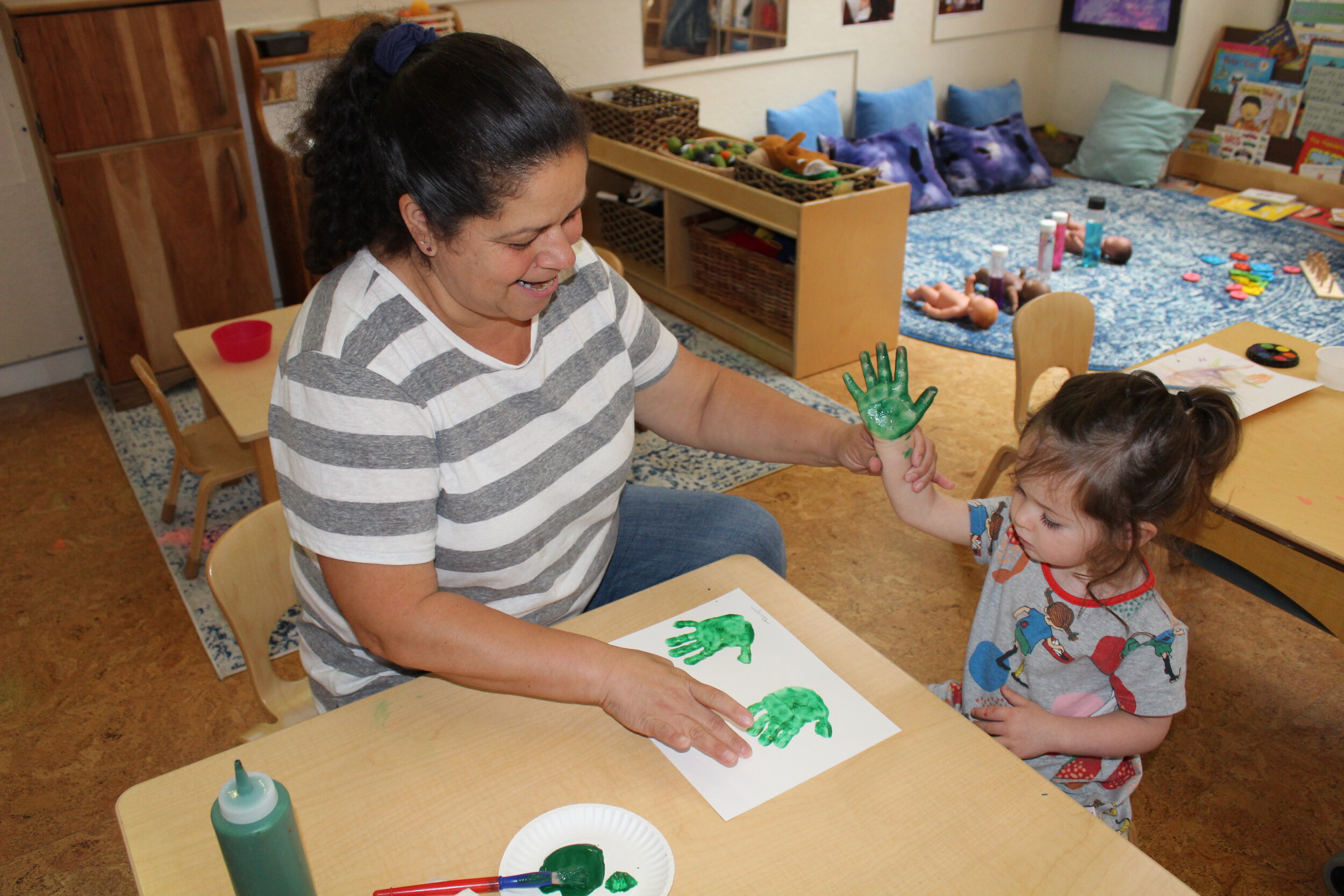

The children are making their pumpkin decoration by painting their paper plates in orange and their handprint in green, representing the stem of the pumpkin.
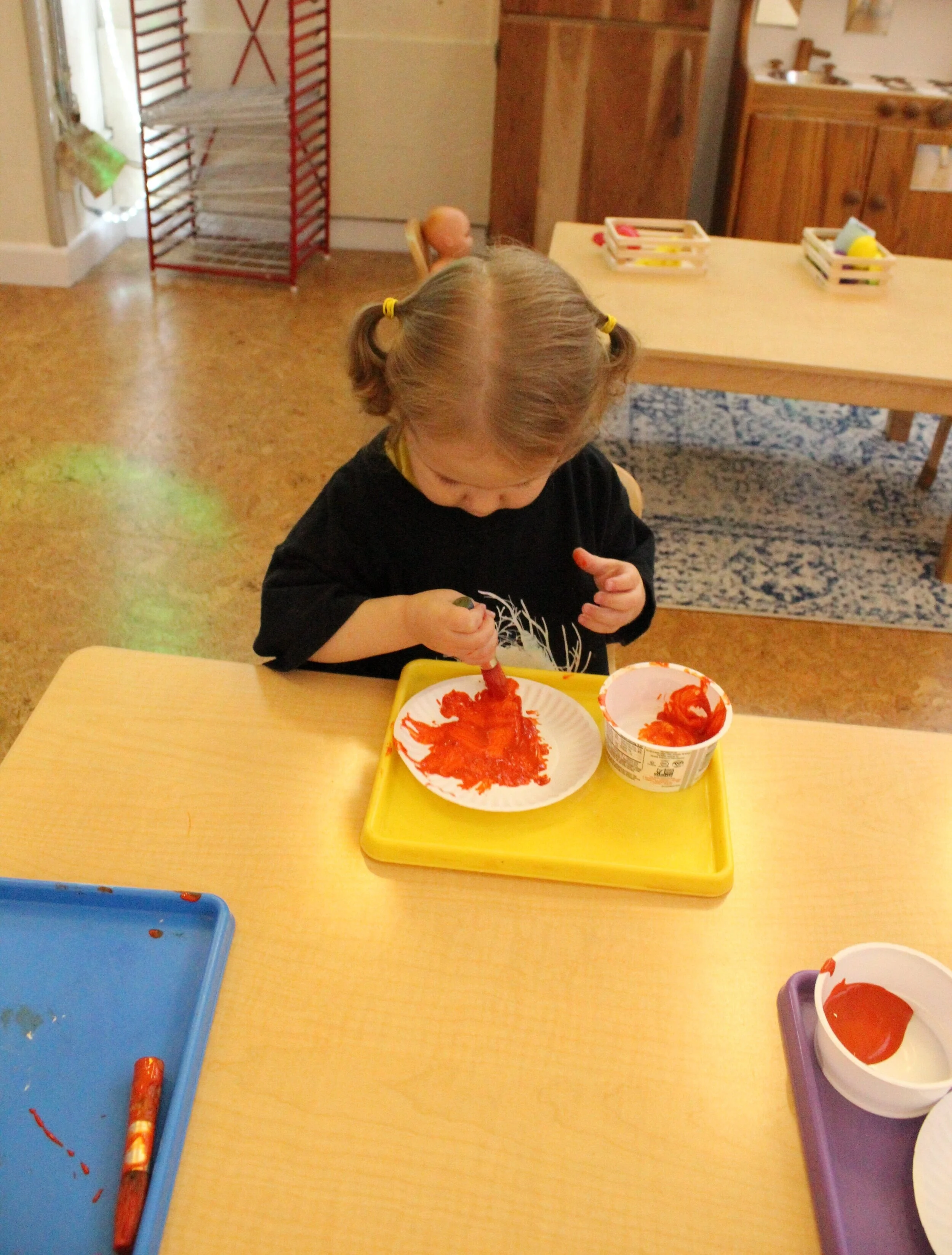
Sensory
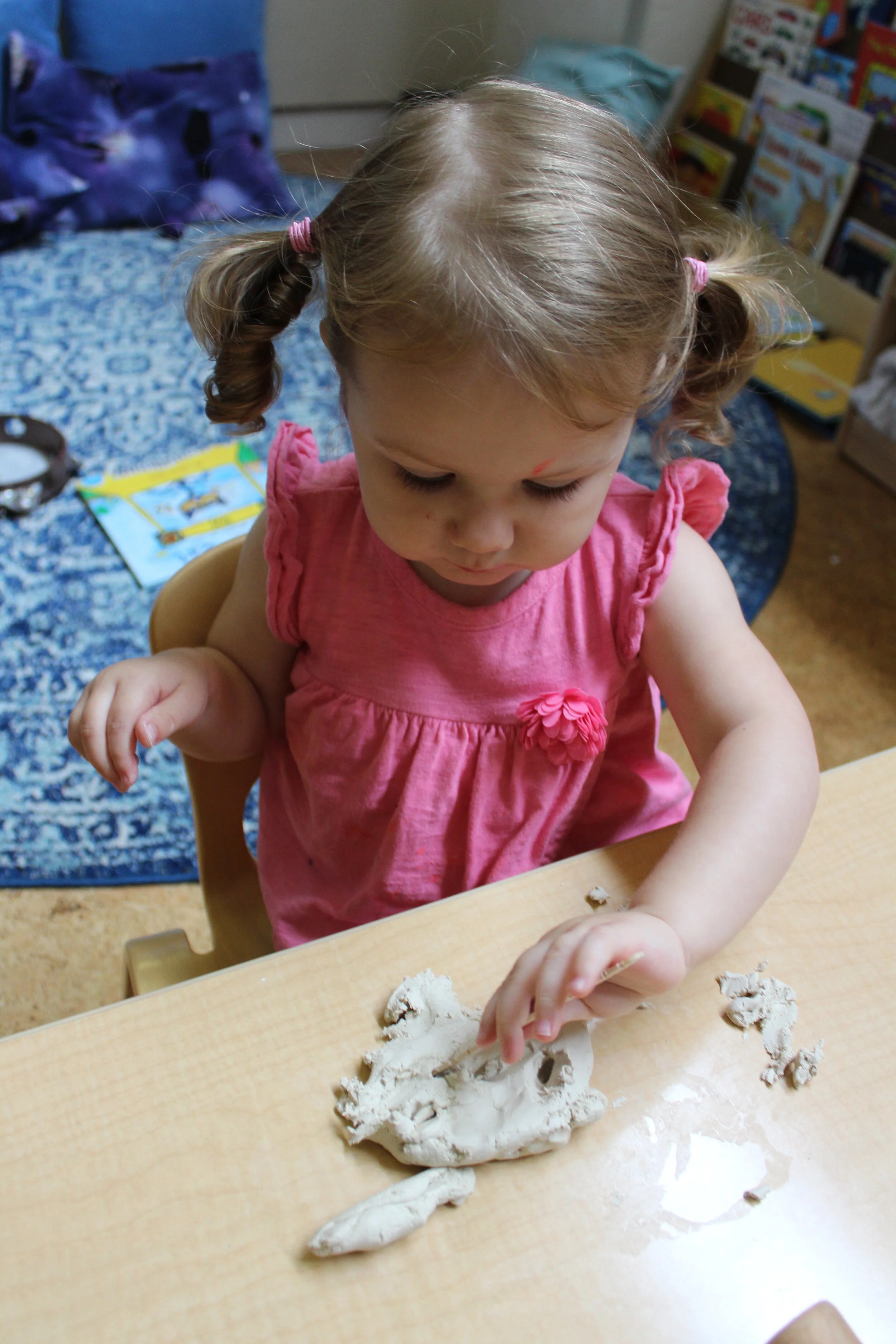
Clay is an excellent sensory material for children to investigate. Most children, when given a piece of clay, are motivated to explore its inviting sensory qualities. Clay fosters eye-hand coordination: they poke it, squeeze and pound it down. Each time they manipulate the clay, it transforms. These changes are fascinating to toddlers; it elicits their curiosity to continue exploring. The child is naturally motivated and empowered to keep experimenting. Each child has a different way to explore with clay. They manipulate the clay in a way that distinguishes them from one another.
Ophelia: “I press it down!”
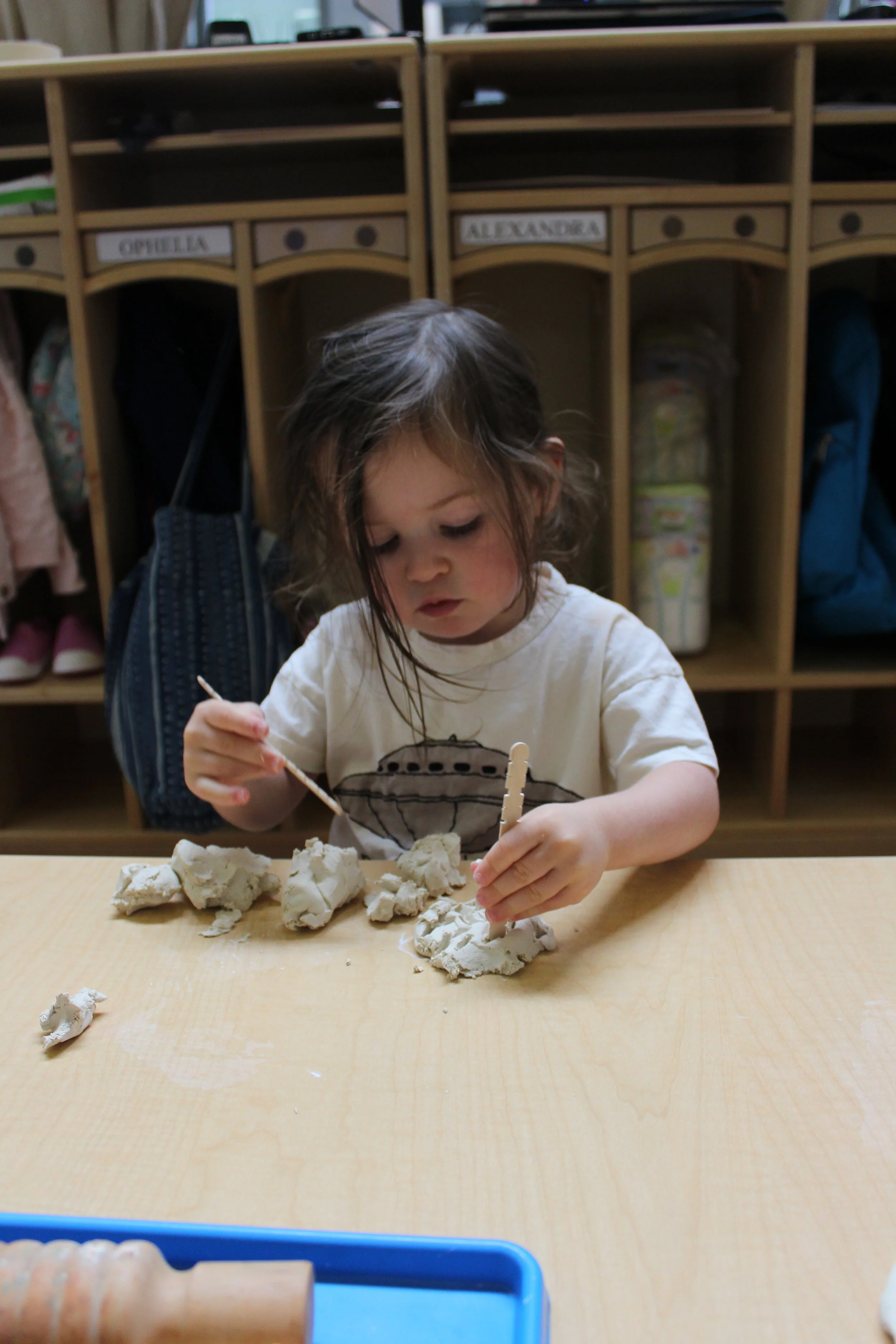
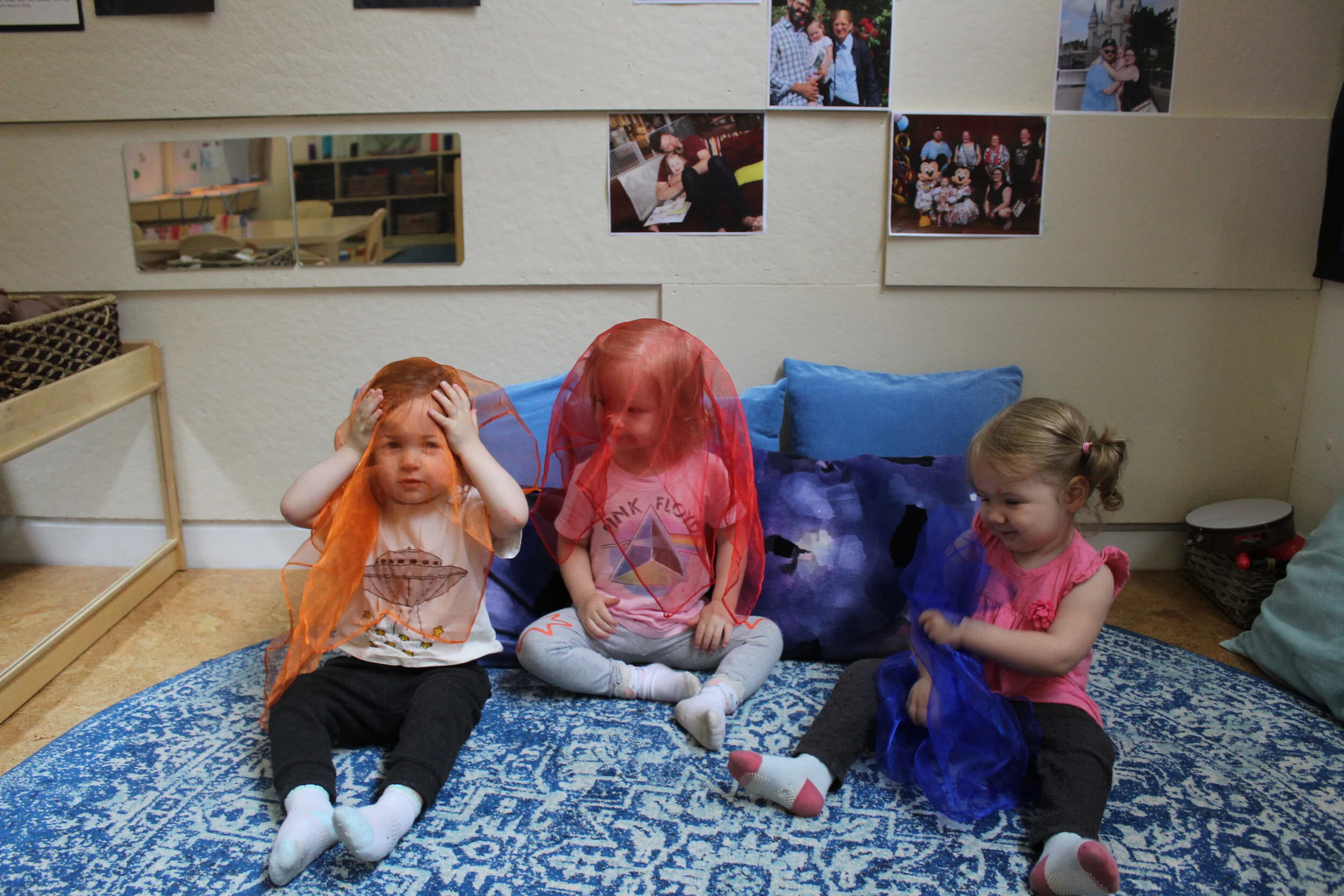
Sensory scarves are colorful, tactile, easy to grab, and fun to manipulate, and so beneficial to children! Each child selected and articulated the color of their choice. The teacher had them explore them and played some games. We played Peek-a-boo with the scarves which develop an understanding of object permanence, which is the understanding that an object still exists even though it is temporarily unseen. By manipulating a scarf to go up or down, side to side, and other directions, the children are acquiring kinesthetic awareness. They are fun and beneficial for their development.
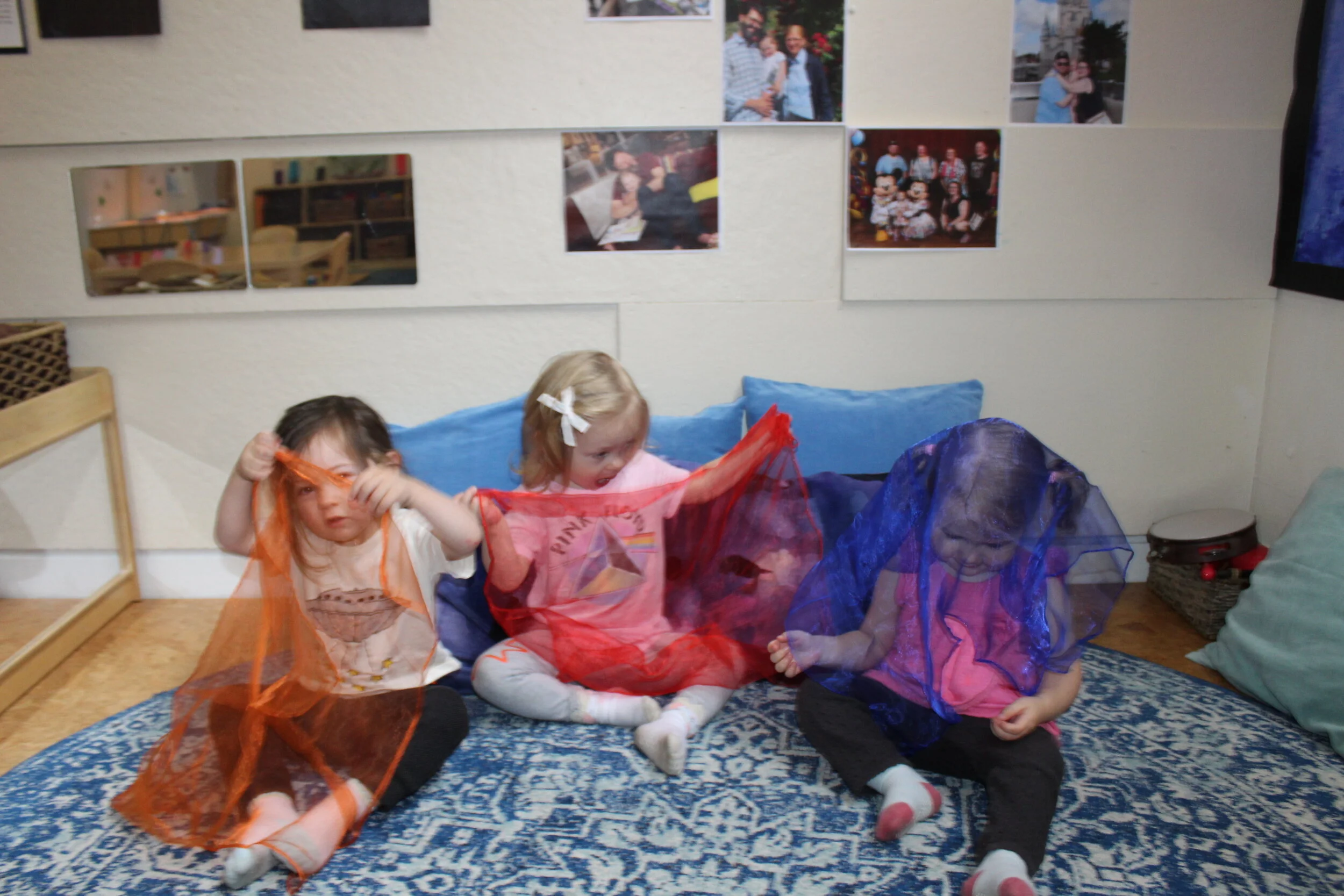
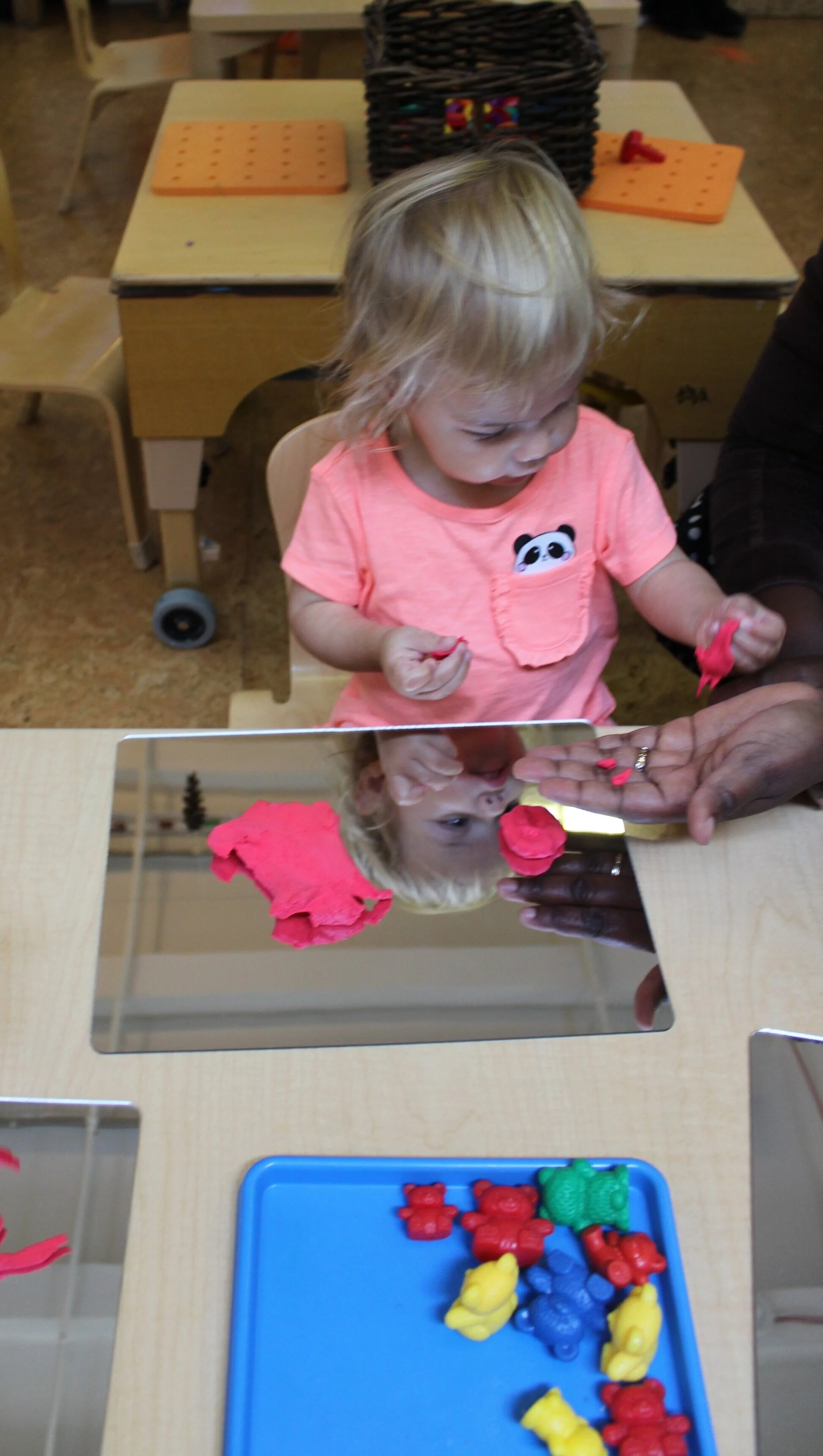
It's a lightweight, spongy modeling material that sticks to itself, but not their hands. Alexandra seems to enjoy manipulating and exploring it by pulling small pieces and sharing them with Ines.
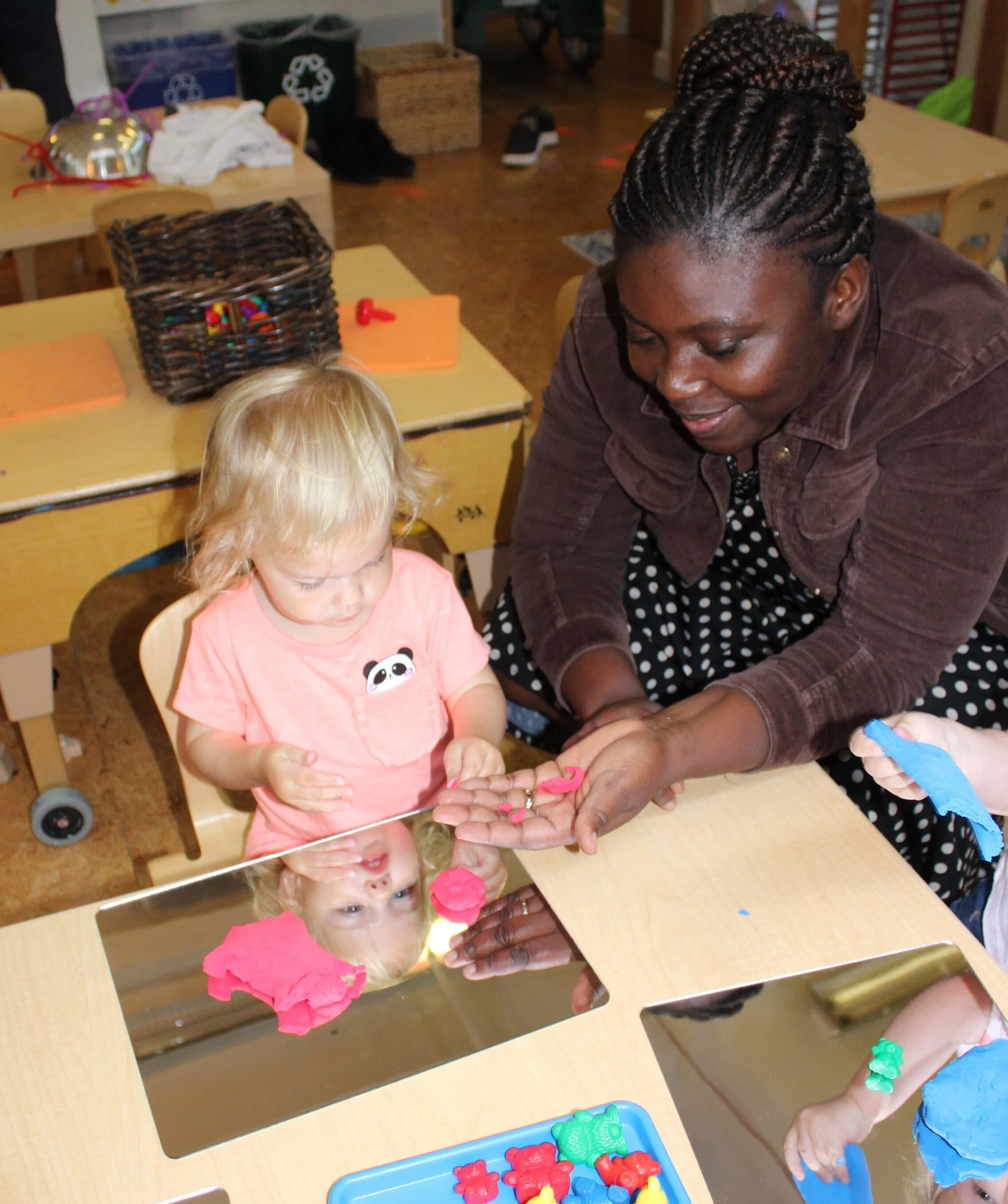
Blocks and Manipulative Toys
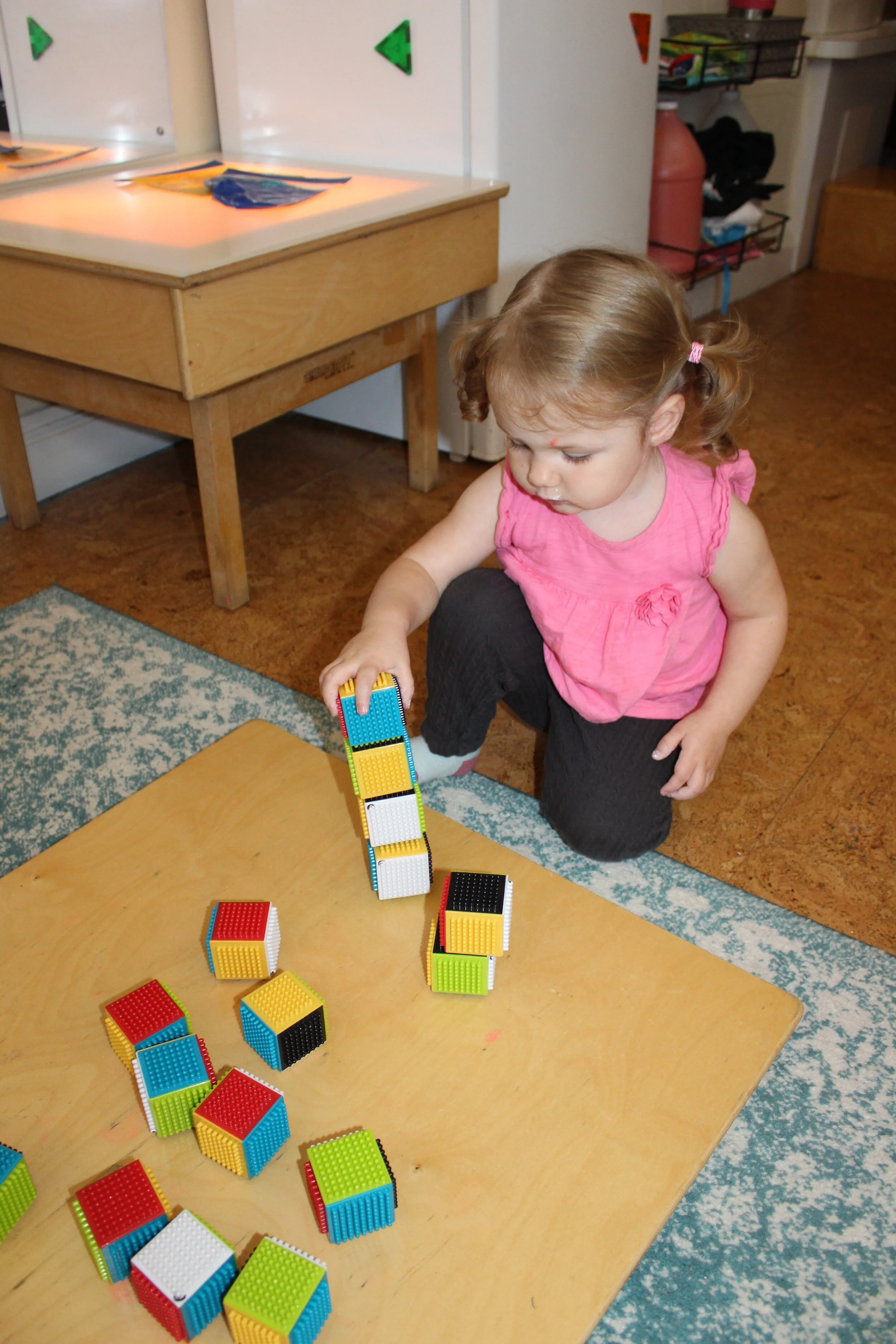
Blocks are used as construction toys, and playing with toys is one of the many ways children learn about the world around them. Blocks help foster developmentally appropriate skills: motor skills, problem-solving, eye-hand coordination, language, social/emotional, spatial, and divergent skills are some examples.
Ophelia pressed one block onto another and continued building by stacking. Experimenting and investigating each piece she selects and rotates to design, helps her to visualize her creation. I wonder if Ophelia and Teagan are building a tower, testing how many blocks they can stack, or is their construction play based on a replica of something they saw?
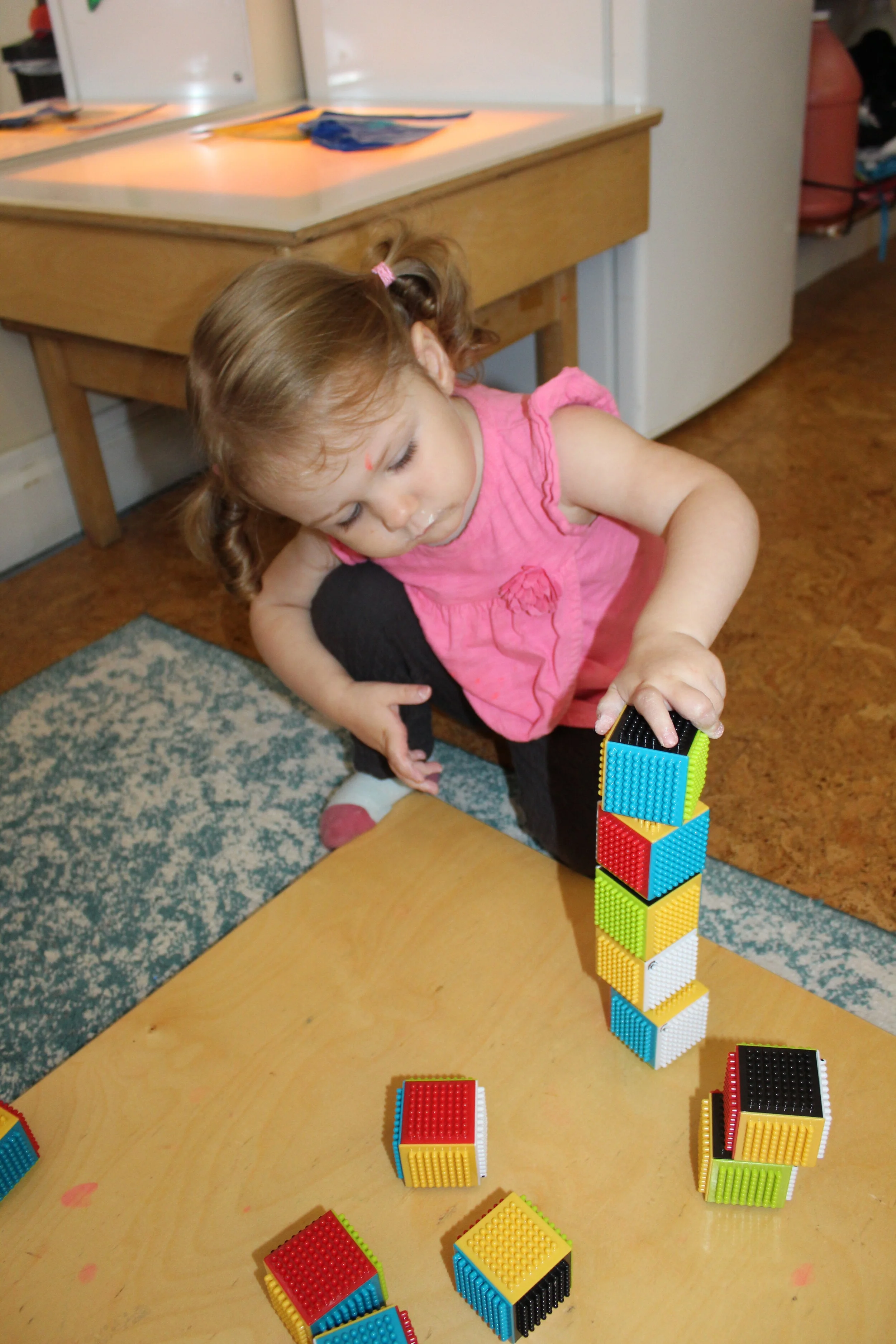
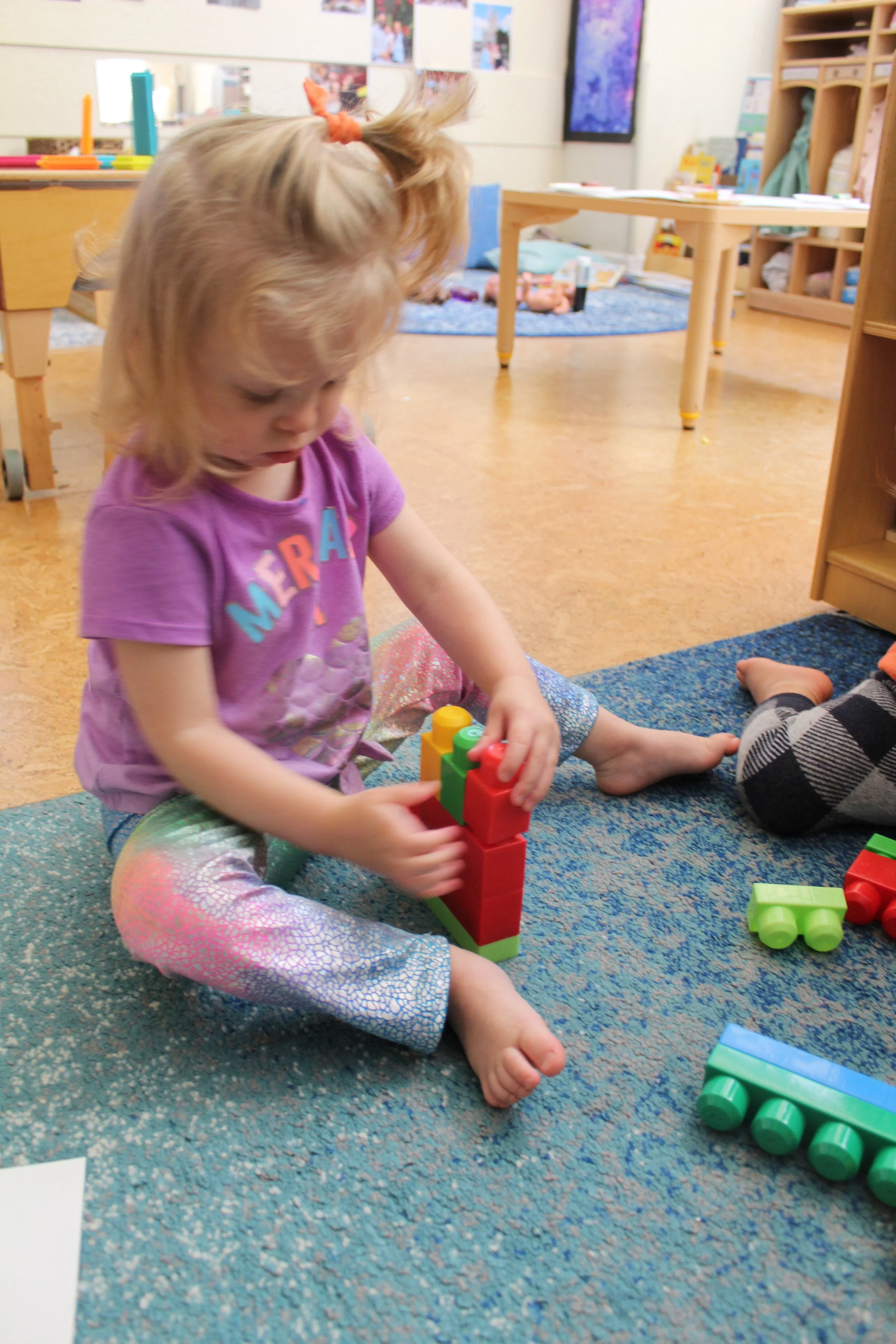
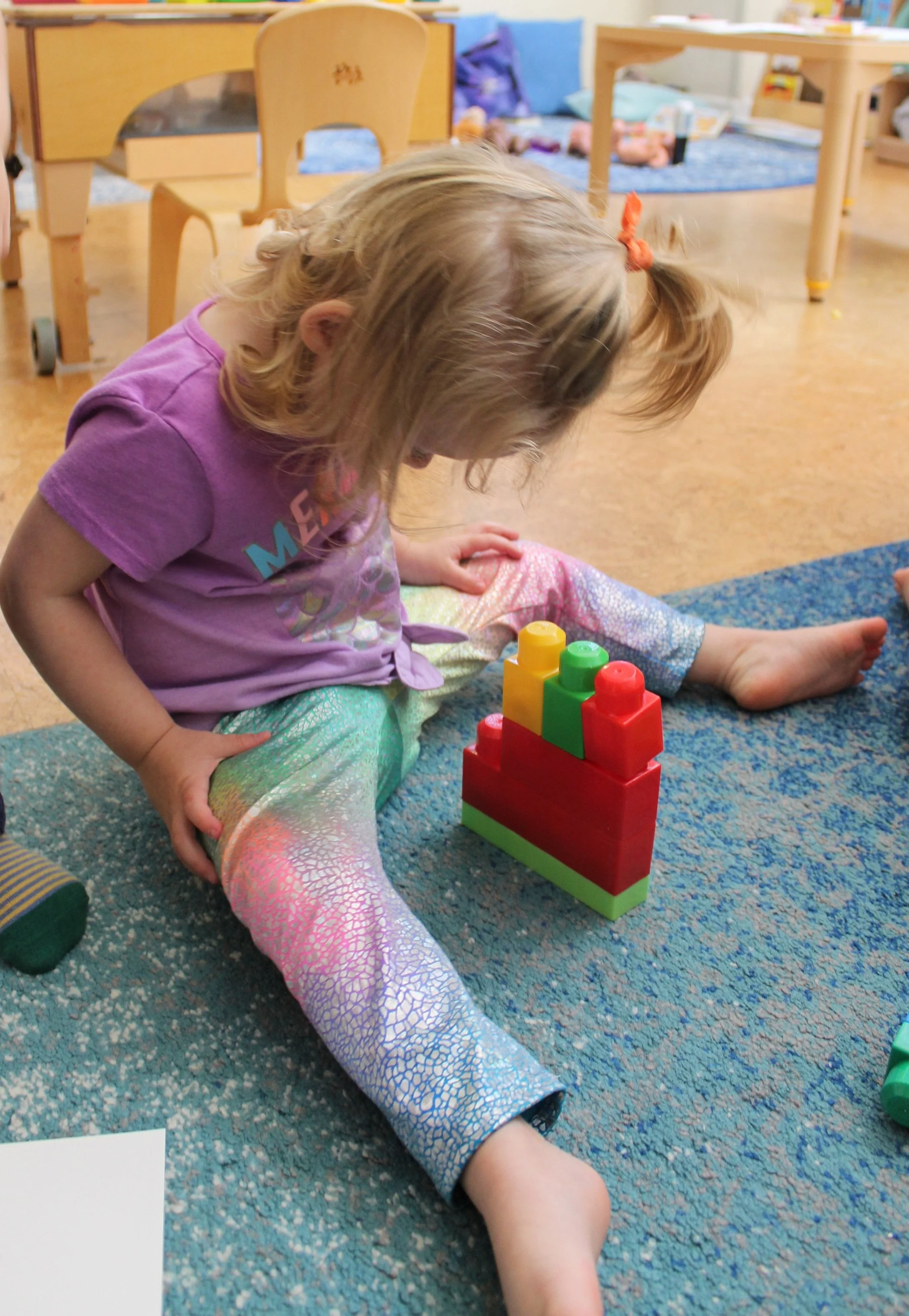
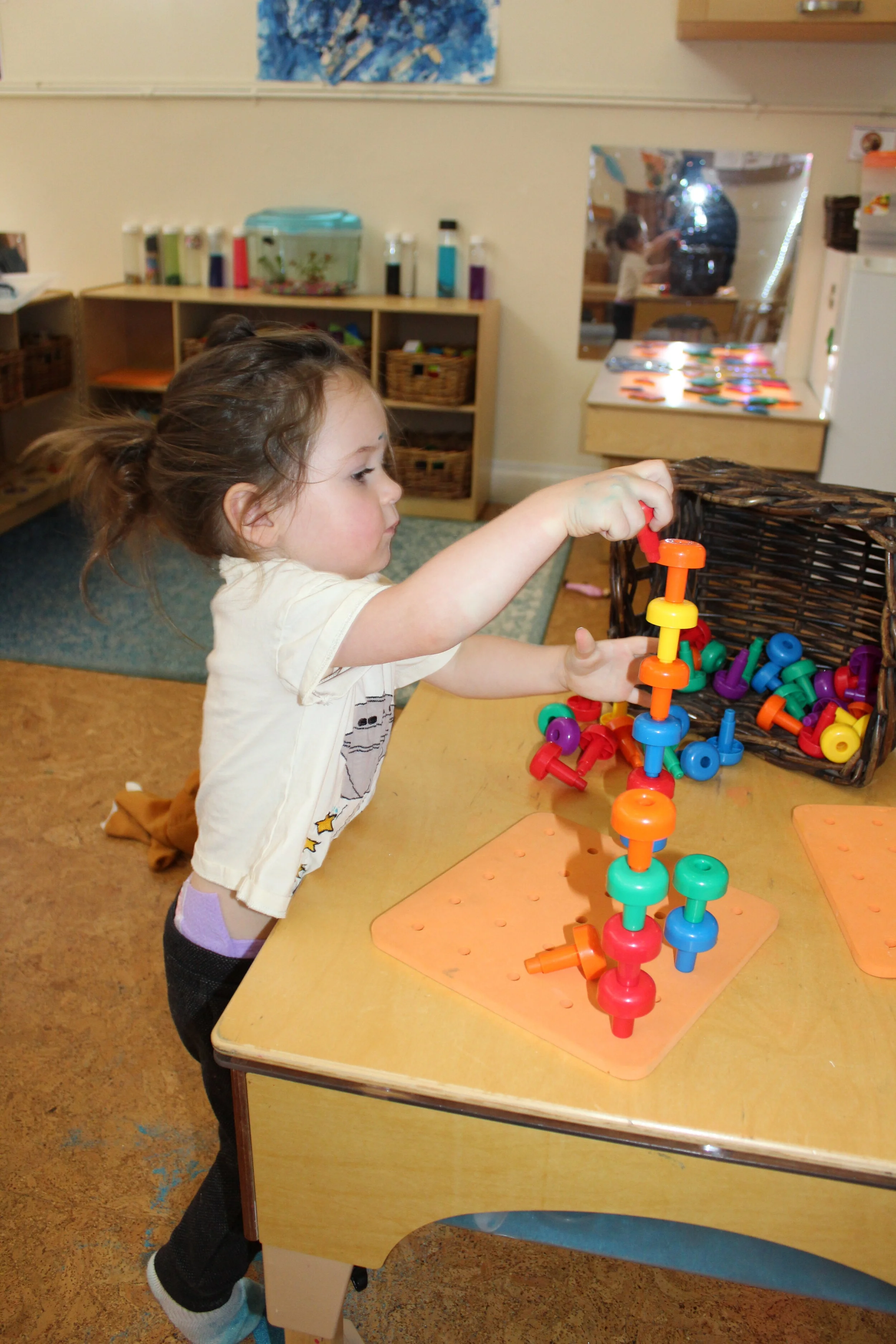
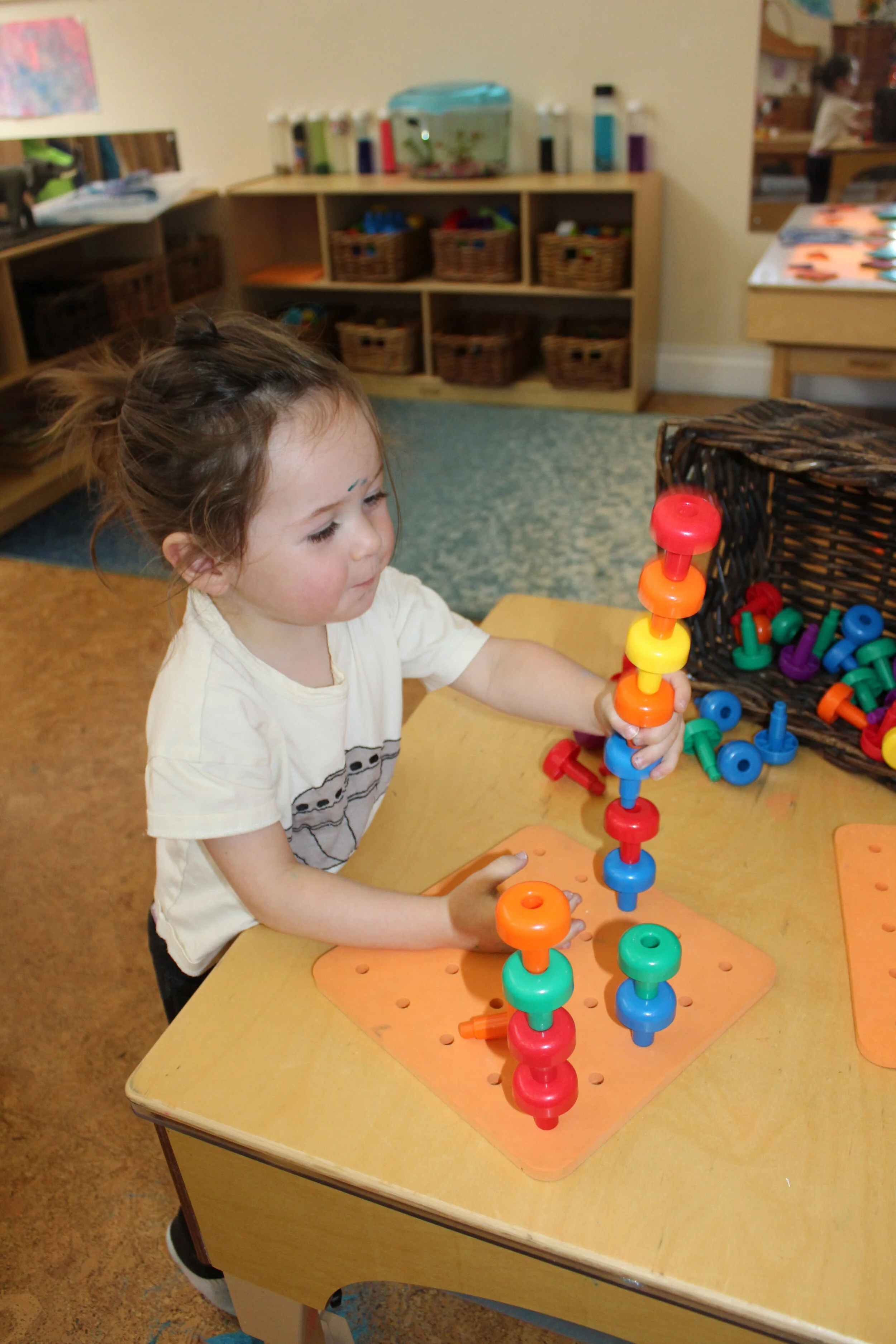
These manipulatives are aimed to develop and strengthen fine motor skills, color recognition, sorting, counting, and patterning. Pegs foster the pincer grip (a small object held between the thumb, index and middle finger). The development of this grip will allow children to use writing tools properly. Each peg will help children refine pinches and manipulate small objects with his/her fingers.
Annabelle carefully presses each peg on the pegboard to secure their position. She arranges them to an upright position. She starts building from the bottom and continues making it higher and higher. Annabelle appeared excited, and it seemed that she wanted to keep adding pegs to her structure.

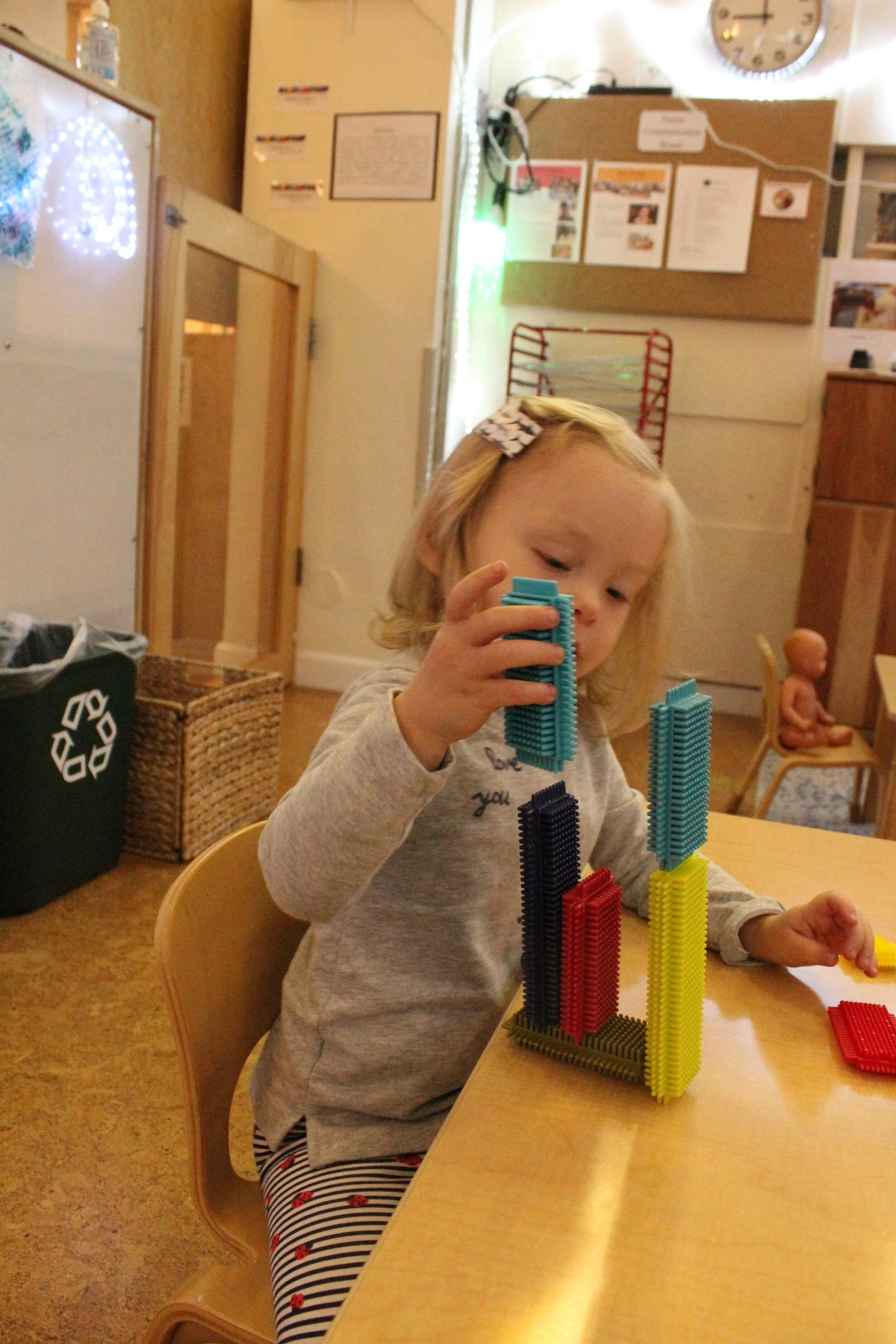
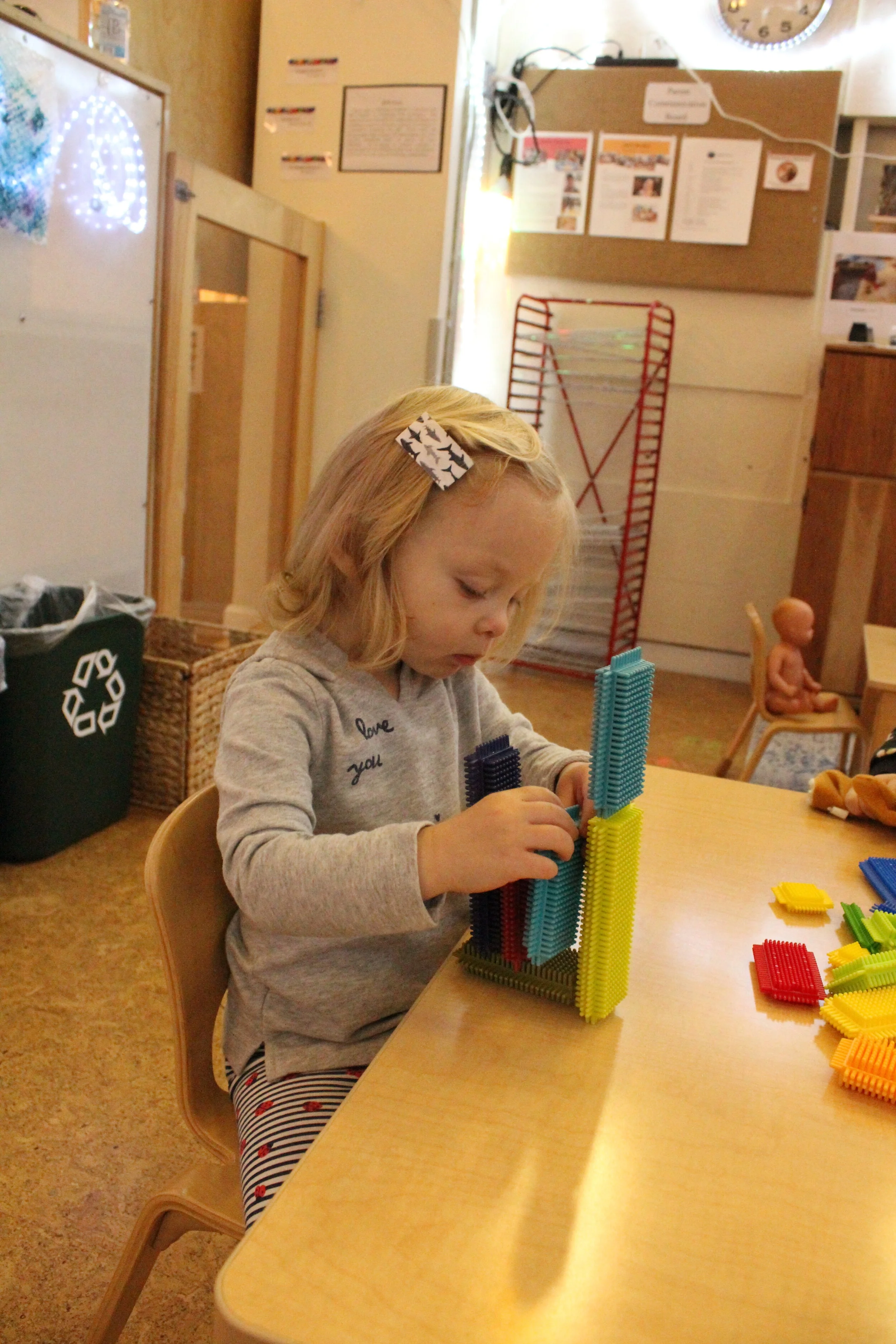
Block play provides hours of fun for children as well as enhancing the development of basic skills. Bristle Blocks stimulates children’s imagination and creativity by connecting and building. Children can mesh together and pull apart the flexible pieces. They develop fine motor skills and dexterity. These blocks promote color and shape recognition and explore the unlimited possibilities of design through construction.
Teagan appeared interested and focused as she connected the bristle blocks. She chose rectangle shapes and joined them to create a small structure. She continuously manipulated each piece until she found the right fit.
Teagan demonstrated determination and concentration as she continued working on her structure.
Teagan: “I put another one! I got it!”
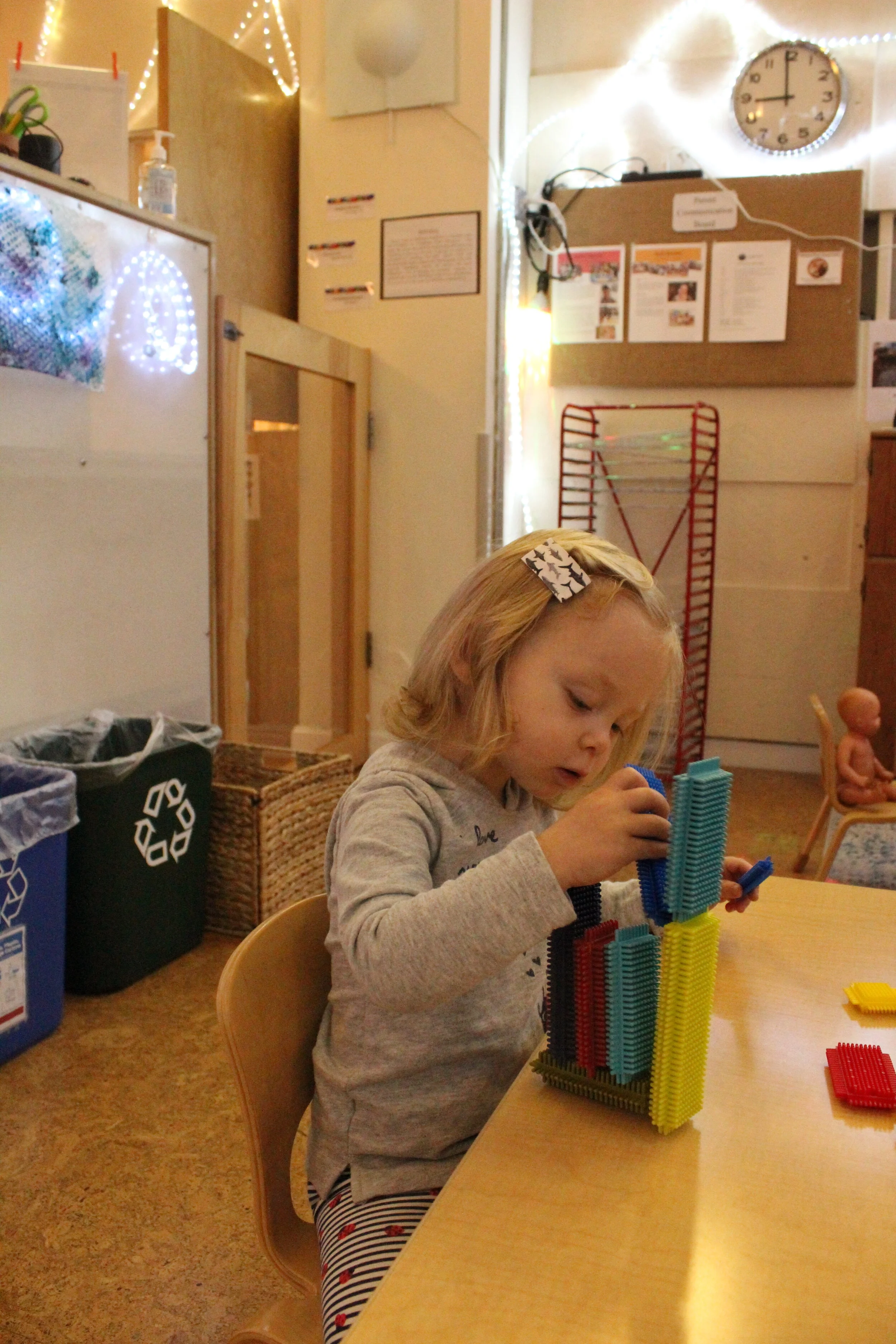
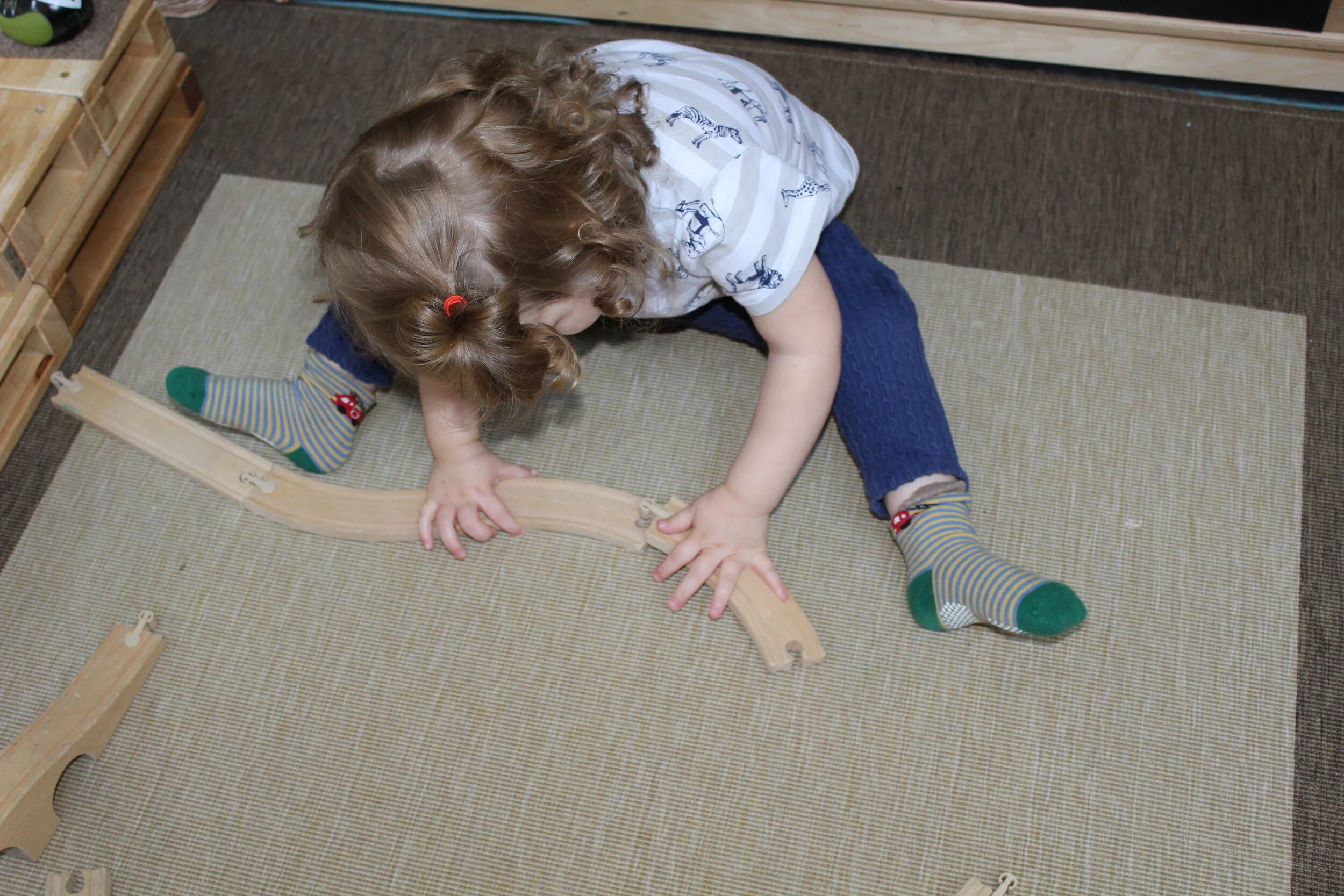
Ophelia took some train tracks from the basket and began building and connecting them. As children learn to interact with the train set, they learn to maneuver them to make them fit. She focuses and concentrates, as she interlocks both ends, making sure it fits. She built a set of four and six tracks. She selects a few more tracks and places them near her as she begins to build a third set. I wonder how many tracks the third one would be.
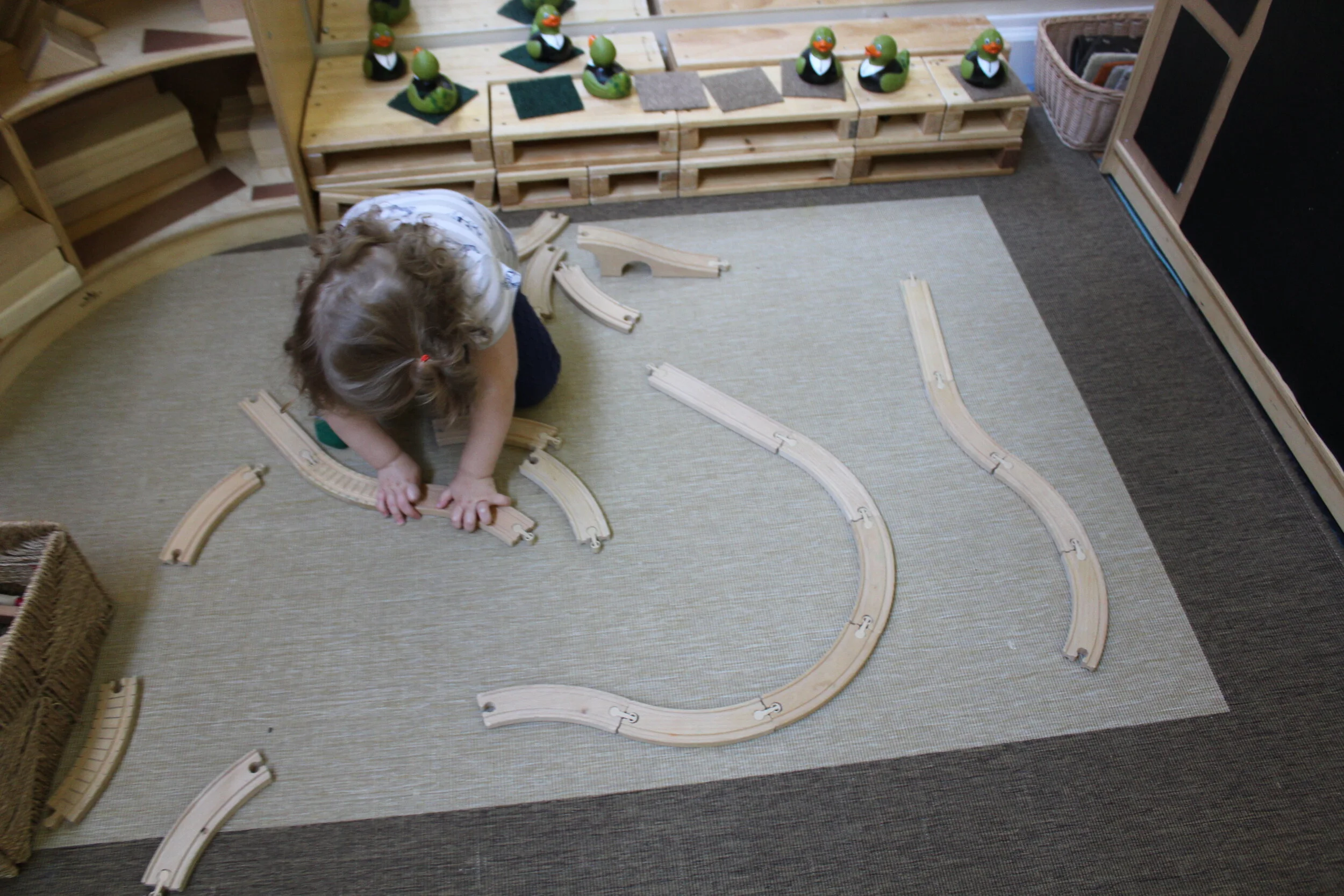
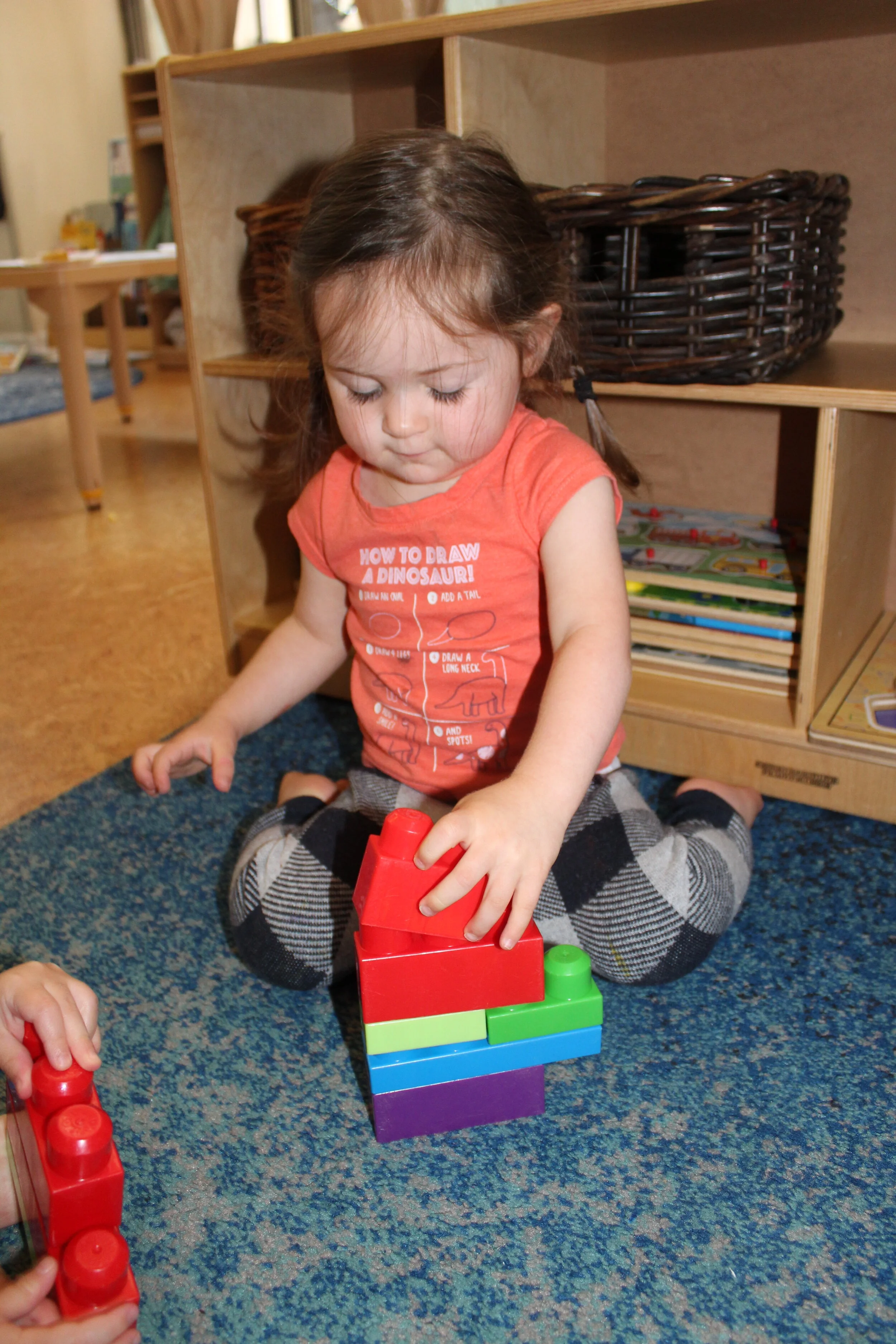
Annabelle: “I made my tower!”
Teacher: “Who lives in your tower?”
Annabelle: “Papa, mama, and grandpa!”
Teacher: “What are papa, mama, and grandpa doing?”
Annabelle: “Mama driving a car! (Suddenly she said) Look at the picture Sandra, it fell down.” (Referring to the blocks.)
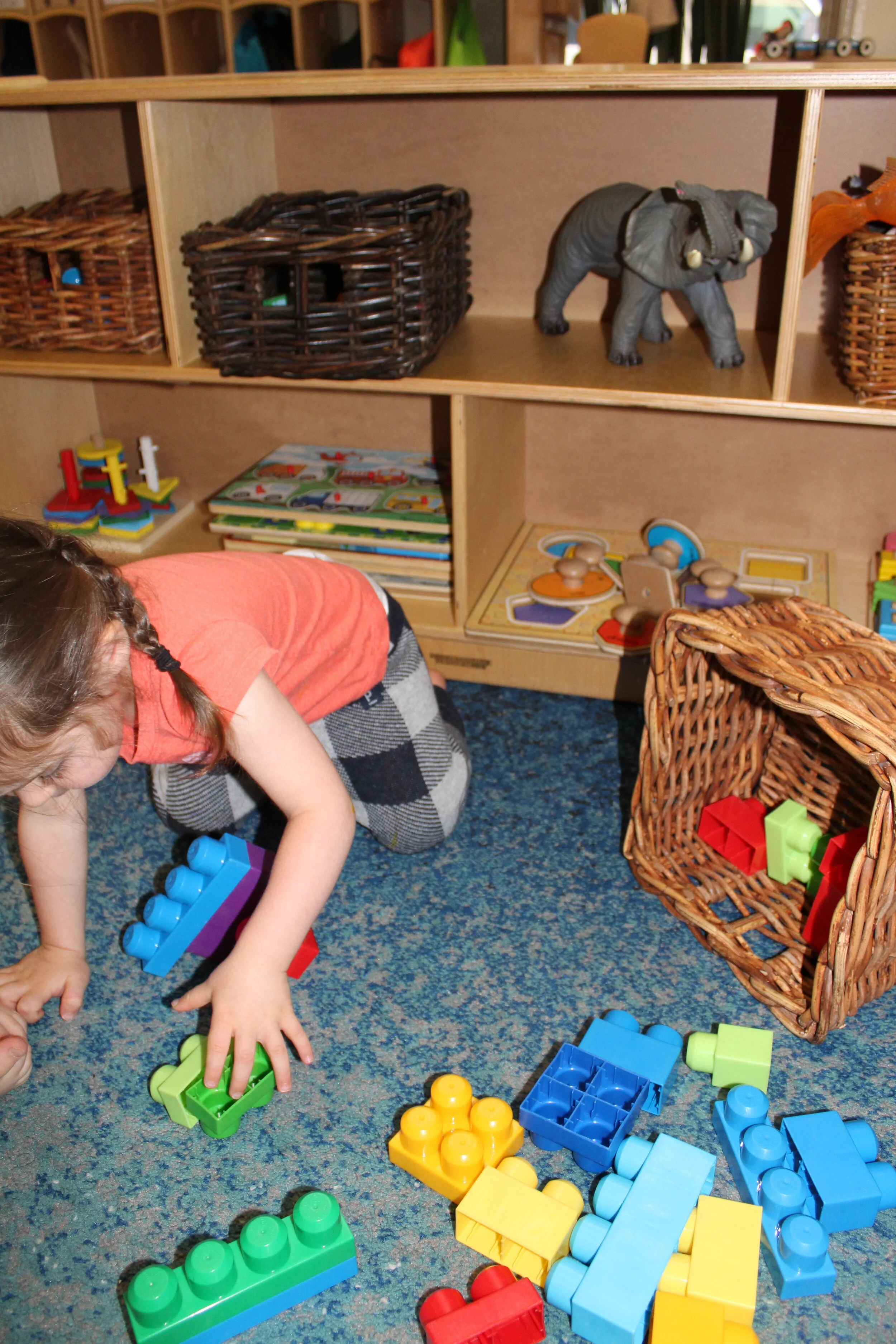
We took a stroll to the park and neighborhood.
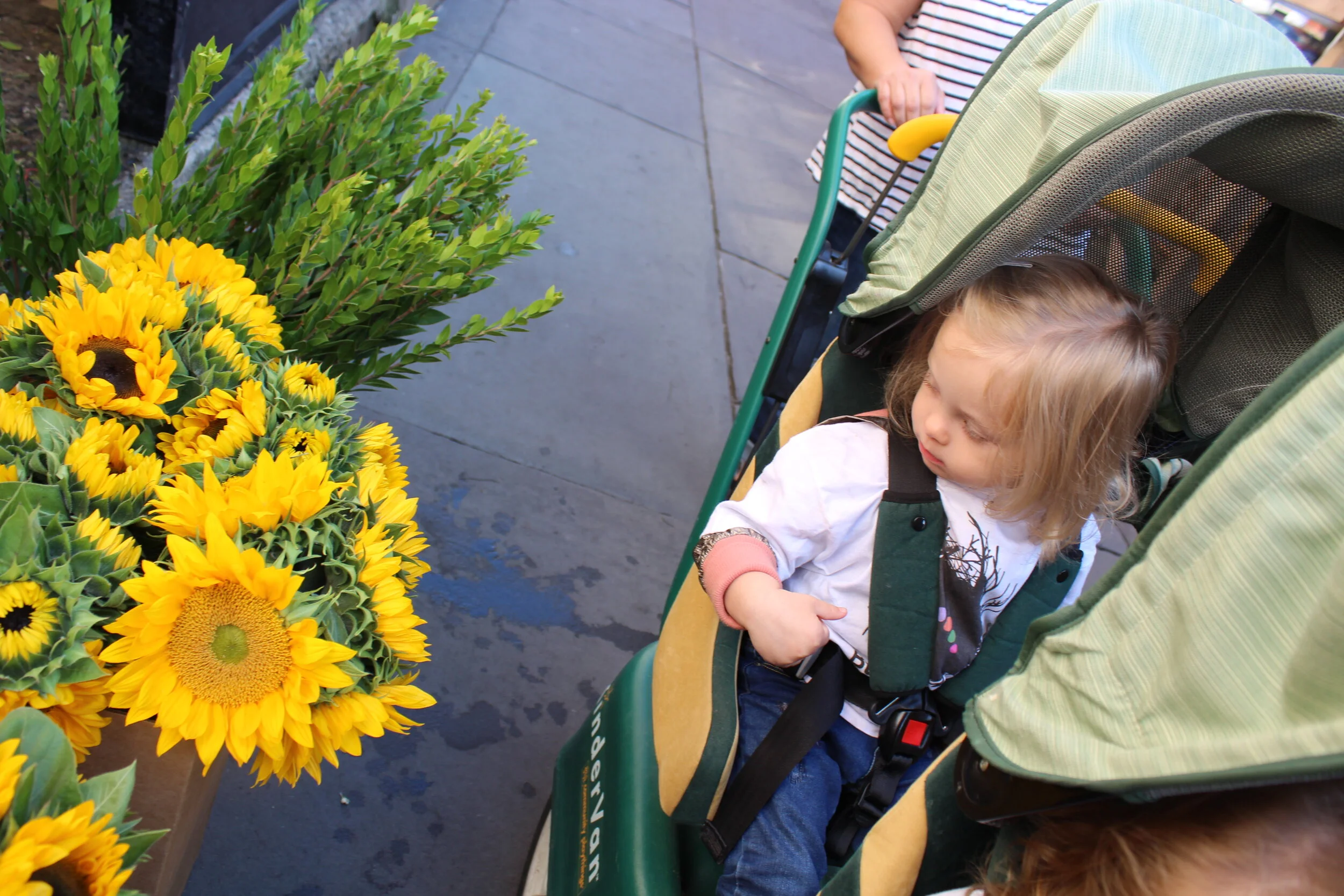
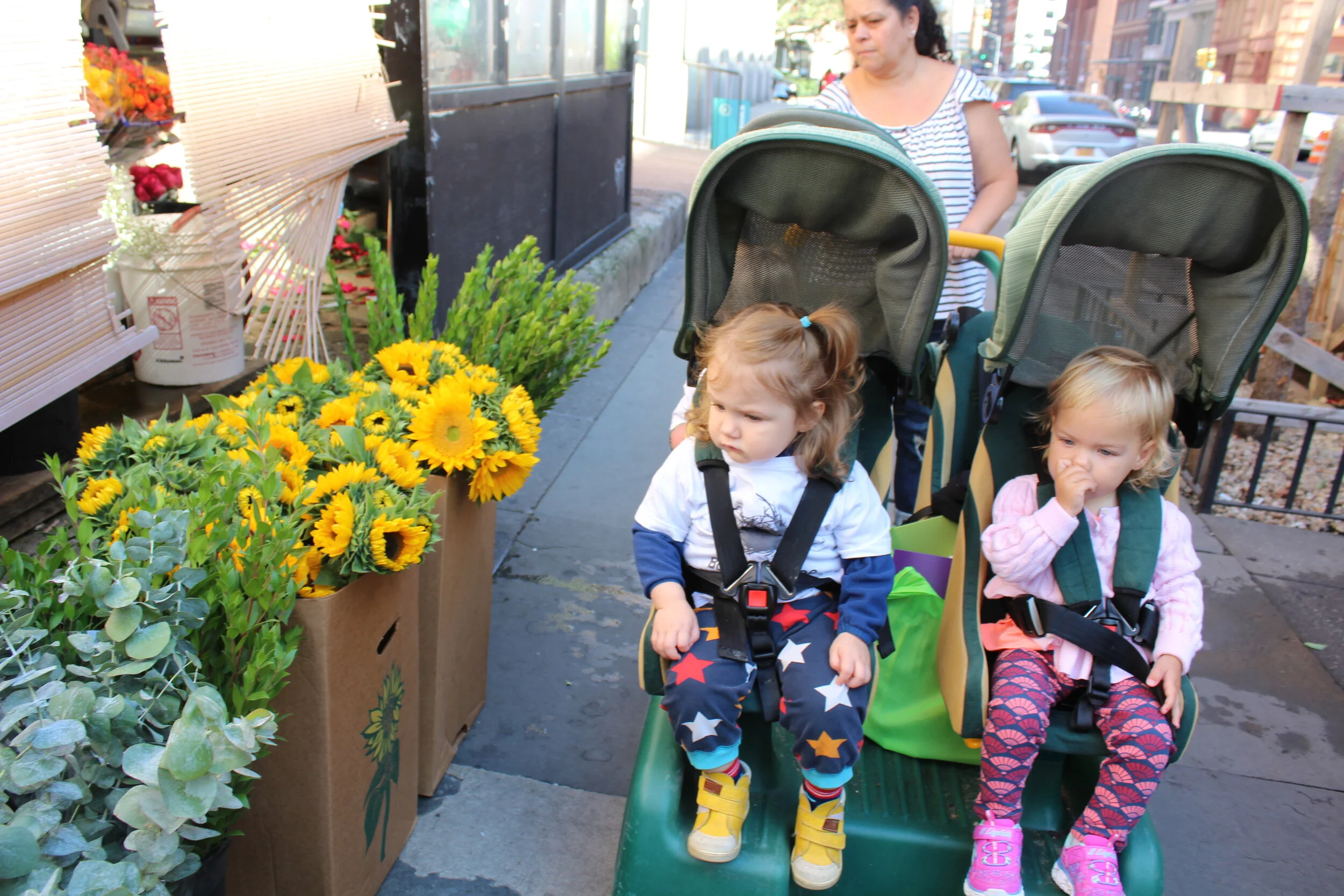

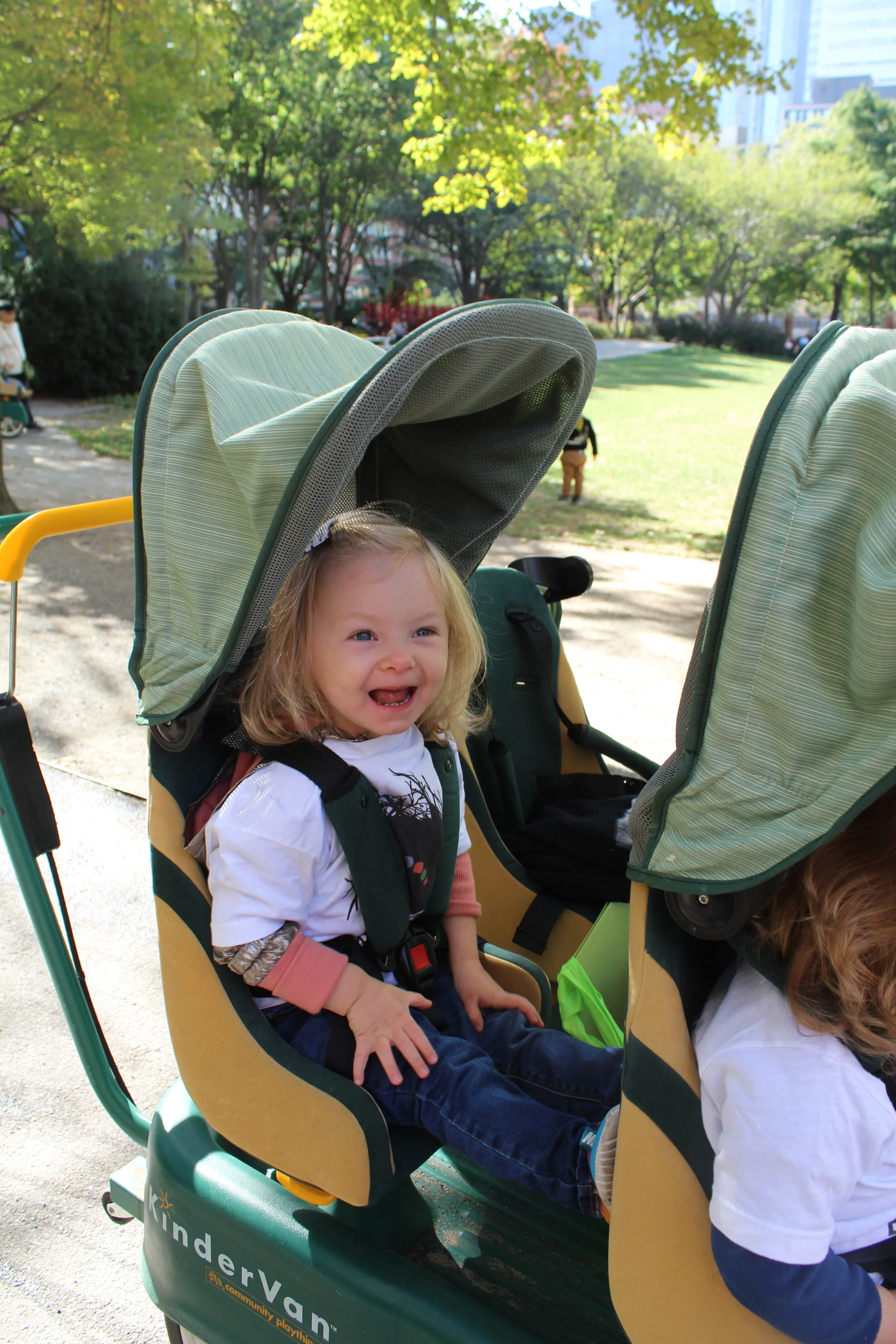
We asked the children what color they would like to explore today? Annabelle said, “Orange!” Listening and respecting their words is an essential aspect of our class community.
